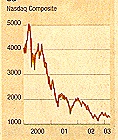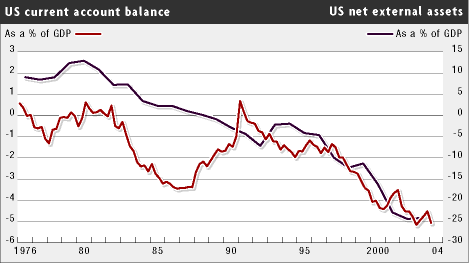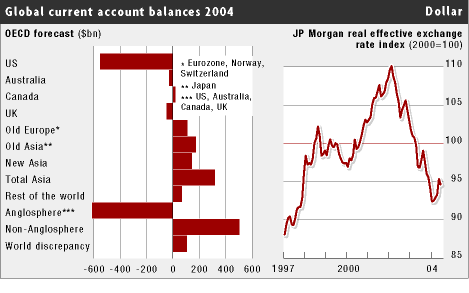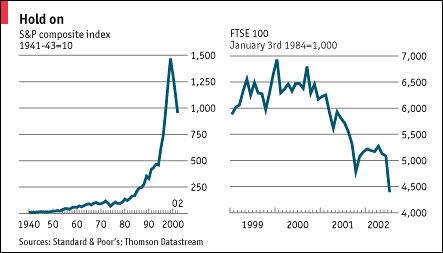The key problem for the US currency is that investors do
not need to sell US assets for the dollar to fall. All that is necessary is
that they fail to buy. The bloated US current account deficit, running at about
4 per cent of gross domestic product, means that the US needs to attract a net
inflow of around Dollars 1.5bn (Pounds 1.04bn) every day in order to stop the
dollar falling. The latest figures from the US Treasury provide strong
indications that capital inflows are finally drying up. In January the net
inflow into US equities and fixed income was just Dollars 9.5bn. This is weak
even compared with the Dollars 17.8bn the US attracted in September.
There are two theories about Wall Street's role in the bubble years of
the new economy. Either investment analysts were swept up, like everybody else,
in the prospect of extraordinary gains in efficiency that the Internet would
bring, so justifying ever higher share prices.
Or Wall Street saw a golden chance to peddle dirt.
New York's attorney-general, Eliot Spitzer, is a promoter of the second
theory. On April 8th he delivered an affidavit to the state's supreme court
that paints Merrill Lynch's share-buying recommendations for Internet companies
during 2000 as little more than a pretext to stuff gullible buyers with the
shares of rotten businesses. (Big customers, meanwhile, were whispered the
truth.)
00 peak, one of the worst 10 declines the US market has experienced
since the first world war.
Augusti kommer före september
Rolf
Englund i mail 2001-09-20
Jeff Madrick: Will the Market Crash?
The New
York Review of Books, Cover Date: August 10, 2000
Different Times, but the 1990s Do Resemble the
1920s
By Robert J. Samuelson The Washington Post
International
Herald Tribune, Thursday, April 23, 1998
More articles
Två tredjedelar av hela
börsvärdet på
Stockholmsbörsen försvann på
två och ett halvt år
DI-ledare 30/12 2002
År 2002 uppenbarades att vi just har varit med om en
av historiens största finansbubblor. Och Sverige drabbades hårdast,
två tredjedelar av hela börsvärdet på
Stockholmsbörsen försvann på två och ett halvt år.
Det behövs en uppgång på 200 procent
för att komma tillbaka till nivån från mars 2000 något
som kan ta decennier. Att Frankfurt ligger nästan lika illa till är
en klen tröst.
Bara två av den moderna historiens finanskriser har
varit värre, New York 1929 och Tokyo 1989. I det första fallet tog
det 25 år för börsindex att komma tillbaka och i det andra
fallet pågår raset fortfarande efter 13 år. Tokyoindex ligger
i dag 73 procent under 1989. Börsbubblor är inget att ta lätt
på.
Fyra av det sena 1900-talets största hjältar i
svenskt näringsliv - Percy Barnevik, Lars Ramqvist, Jan Stenbeck och Jan
Carendi - har fått se sina livsverk radikalt omvärderade.
Wallenberg, den finansfamilj som dominerat scenen i Sverige
i 70 år, är nu på sin höjd den främsta bland
jämlikar. Betyget över Peter Wallenbergs insats får skrivas
ned.
Investors förlorade pengar överskuggas av de 100
miljarder kronor som statens AP-fonder lyckades bränna på kort tid
genom att kasta in den statliga sparreserven i pyspunkan.
Det sena 1990-talets it-entreprenörer liknar mest -
så här efteråt - bondfångare. En del var naiva och andra
smarta. Frågan är i vilken av kategorierna namn som Mandators Lars O
Petterson, Icon Medialabs Johan Staël von Holstein, Sprays Jonas Svensson,
Mirror Images Alexander Wik, Ledstiernans Jan Carlzon, Connectas Christer
Jacobsson, Framfabs Jonas Birgersson och Emerging Technologies Kjell
Spångberg ska sorteras. Det som förenar är att it-bubblan
löste deras försörjningsproblem.
Socialdemokratin, som tog över hegemonin i svensk
politik efter Kreugerkraschen, har nu hjälpt till att blåsa upp
två nya bubblor,
först en i fastigheter och finans år 1989 och därefter den
senaste i it och telekom år 2000.
The boom that did not bust
By
John Plender
Published: February 6 2003 21:02
In the developed world it appears that financial crises no longer derail
economies. Even in Japan, which has experienced four years of price deflation
and where the banking system has been in crisis for over a decade, the output
loss has been minor. And now the collapse of a phenomenal stock market bubble
in the US has defied historical precedent by spawning only a modest recession
and no banking crisis at all.
There are many possible explanations for the failure of this financial
dog to bark. Much more of the risk-taking was happening outside the banking
system than in the 1980s. Banks appear better capitalised as a result of the
Basle capital regime. Most important, policymakers in the US have been acutely
aware of the risks of deflation and swift in their monetary and fiscal response
to the bursting of the bubble. Thursday's cut in UK interest rates likewise
suggests that the risks in UK policy are not being taken on the side of
deflation.
So now the politicians and central bankers are intensively managing the
business cycle, can we stop worrying about the impact of financial instability
on economic growth? Not in the emerging markets, where financial crises in
Asia, Latin America and Russia have inflicted devastating losses of output and
employment. And there is one important snag in the developed world, especially
in the English-speaking economies.
The existence of a monetary and fiscal safety net creates moral
hazard. That is, companies, financial institutions and private individuals
engage in balance sheet adventuring - an evocative phrase used by the economist
Hyman Minsky, whose thinking on financial instability and the business cycle is
particularly relevant in the post-bubble world.
Financial crises serve a purpose. In cycles that have been characterised
by debt-financed and unremunerative over-investment, the discipline of
bankruptcy ensures that debt is written down to realistic values and capacity
is brought into line with demand to pave the way for an upturn. But the
adjustment is painful.
If financial crises are eliminated, the business cycle is extended.
Asset prices continue to rise, generating wealth effects that encourage people
to run down savings and borrow on the strength of the rising value of their
collateral. As the Montreal-based Bank Credit Analyst points out, the failure
to correct balance sheet excesses in the downturn means that each new US
expansion begins from progressively lower levels of liquidity.
US household debt has gone from less than 40 per cent of gross domestic
product in 1960 to close to 80 per cent in 2002. The comparable rise for the
non-financial corporate sector has been from 26 per cent to 46 per cent. The
greater the balance sheet excesses, the more painful the corrective process
will ultimately be. So with each new cycle, say the BCA editors, the stakes
become higher, pushing the economy closer to a deflationary end-point. An end
is inescapable since debt cannot rise faster than incomes for ever.
The denouement of the debt drama is sparked by deteriorating credit
quality, which exposes the vulnerability of a banking system that hitherto
appeared well capitalised. The risk is of a 1930s-style deflation and liquidity
trap, as banks stop lending and the private sector tries to restore its balance
sheet. It was on such grounds that Peter Warburton, the British
economist, warned in a recent book - Debt and Delusion, Penguin Books -
of an explosion thatould shock the western financial system rigid.
Yet there is a problem with timing. Governments have become used to
managing the cycle and deferring the debt problem. For their part, private
individuals in the US and UK continue to be happy to borrow for home ownership
without fully grasping the extent of the repayment burden in a low inflation
era.
Many feel a high level of debt is affordable on the basis of a
one-off fall in interest rates to very low levels. Yet there is no such thing
as a one-off fall in interest rates. Throughout history interest rates have
gone up as well as down. And the debt will not go away.
So while Mr Warburton, like Noah, builds his ark, a question remains.
If debt continues to accumulate over the next economic cycle, will central
bankers and governments be able to confront an apocalyptic financial crisis by
simply muddling through?
Full
text
Greenspan's fight
Low interest
rates is not enough
By Martin Wolf
Financial Times, November 12 2002
Last week, the Federal Reserve decided to blow, once again,
into the flapping sails of the US economy. The puncturing of the bubble economy
continues to create fierce headwinds. Further interest rate cuts - perhaps more
unorthodox measures - remain likely.
The last time the Fed Funds rate was as low as this was
July 1961. The decisions to cut the rate from 6.5 per cent in late 2000 to the
lowest rate for more than 40 years underlines the devastating impact of asset
price bubbles on economic stability.
The aggressive easing of monetary policy is not the only
stimulant on offer to the economy. The rate of just over 4 per cent on 10-year
Treasuries is the lowest since 1963. Moreover, according to the Congressional
Budget Office, the fiscal stimulus this year is worth 2.4 per cent of gross
domestic product, the biggest since records began in the early 1960s.
If not for these huge fiscal and monetary boosts, a deep
recession would surely have occurred. They have also returned the economy to
reasonable growth this year, at 3 per cent over the 12 months to the third
quarter. This is much stronger growth than in other leading industrial
countries, except Canada.
The remarkable productivity record of the US economy is now
a two-edged sword. Over the year to the third quarter, output per hour in the
non-farm business sector grew 5.4 per cent. As Alan Greenspan, chairman of the
Fed, has noted: "Over the past seven years, output per hour has been growing at
at an annual rate of more than 2? per cent, on average, compared with a rate of
roughly 1? per cent during the preceding two decades."* This suggests trend
growth in the economy is in the neighbourhood of 3? per cent.
If this productivity performance is sustained, economic
growth of less than 3? per cent means rising excess capacity and downward
pressure on profitability, wages and prices. Worse, given that there is
substantial excess capacity today, still faster growth is needed first, to
bring the economy back to more normal levels.
The current account deficit has reached 5 per cent of GDP.
Absent a miraculous turnaround in demand in the big economies outside the US,
the only way this could shrink, in the short run, would be via a huge US
recession. Far more likely is a continuing rise in the deficit, with 7 or 8 per
cent of GDP readily imaginable in the not too distant future. This is how the
US is stimulating demand in parasitic economies elsewhere.
For a long time, consumer spending grew faster than
disposable income, as the household saving rate fell and borrowing increased.
In the second quarter of 1992, the household saving rate was 8.9 per cent of
disposable income. It had fallen to 0.8 per cent by the end of last year. It is
on its way back up this year, as stock market wealth has fallen, unemployment
risen and uncertainties increased. The financial balance of the household
sector went from close to plus 5 per cent of GDP in 1992 to minus 2 per cent in
the last quarter of 1999. It has still to recover.
US
Trade Deficit
Greenspan and the
Asset Price Bubble
Full
text
Top of page
Bubble, bubble default trouble
By John Plender
Financial Times, October 3 2002 20:15
The most damaging bubbles are those in which stock market exuberance is
accompanied by lending euphoria. This was true of the 1920s and of the 1980s
Japanese bubble.
What makes the combination so destructive is the pro-cyclical nature of
credit expansion, which causes asset prices, incomes and profits to rise in a
boom that feeds on itself. It then becomes viciously self-feeding in the
downturn, courtesy of the regulators, since banks' capital adequacy
requirements go up instead of down when credit quality deteriorates.
Full
text
John Plender Financial Times; Jul 15, 2002
So you think this bear market is
rough?
It is positively limp-wristed when compared with the depths of
the mid-1970s.
Top of page
The surprising fact is not that /US stock/
markets have fallen, but that they remain so overvalued.
Martin Wolf: The
bubble will keep deflating
Financial Times 2002-06-19
The story is told in my chart.
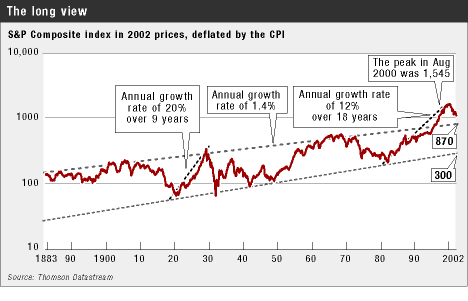
This shows the Standard & Poor's composite index (deflated by
consumer prices) since the 1880s. On this logarithmic scale, the steeper the
slope the faster the rate of growth. There have been several bull markets: the
fastest rise was in the 1920s, but the longest and cumF" VALIGN="TOP">
real interest rates, which are
relevant, with changes in inflation, which may not be.
Nobody is behaving as if the expected real return on - and cost of -
capital is far lower than ever before. If this were true, surveys would suggest
lower expected returns from markets than before: the opposite is the case. In
addition, companies would sustain investment as returns fell: the recent
investment "bust" suggests just the opposite.
Either this has been a bubble the scale of which is making deflation
slow and painful, or the long-run real return on - and cost of - capital in the
US is lower than before. If it is the former, markets remain very expensive. If
it is the latter, everyone expects historically low returns.
I, for one, think the market is simply expensive.
Full
text
Top of page
Terrible twins?
Economic parallels
between America and Japan
America's economy looks awfully like Japan's
after its bubble burst
Jun 13th 2002 From The Economist print
edition
The similarities between America's financial bubble in the 1990s and
Japan's in the 1980s have been well rehearsed. In both cases, share prices and
capital spending soared; households and companies went on a borrowing binge.
Japan, like America a decade later, enjoyed a spurt in productivity growth,
suggesting to some that it had a superior economic model.
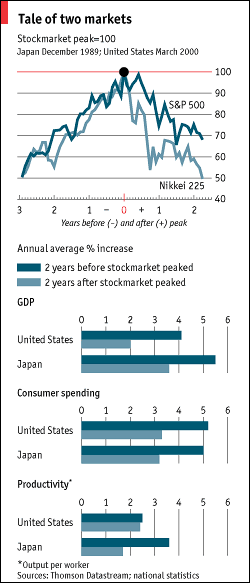
Yet the conventional wisdom now is that the economies have taken
divergent paths since their bubbles burst. Thanks to resilient consumer
spending, America is widely tipped to enjoy robust growth this year and next.
Meanwhile, Japan is expected to languish in perpetual recession.
Full
text
Top of page
The recovery myths
The world economy is
coping with the aftermath of two huge asset-price bubbles: the Japanese of the
1980s; and the US-led worldwide bubble of the second half of the 1990s.
Adjustment to the end of the first is not yet over. Adjustment to the end
of the second has, contrary to conventional wisdom, hardly begun.
By
Martin Wolf, Financial Times June 11 2002
According to that wisdom, the world's largest economy is leading the
rest of the world into a durable, if restrained, recovery after a surprisingly
brief and shallow recession. Yet this may turn out to be no more than a fairy
story for frightened children. Recent falls in the stock market and the US
dollar suggest the children are unconvinced. At its closing price of 1,031 on
Monday, the Standard & Poor's 500 was only 7 per cent above its
post-September 11 low and 33 per cent below the peak reached in March 2000.
Similarly, on a trade-weighted effective basis, the dollar had lost 6 per cent
of its value since its peak on January 25 2002.
To understand the risks ahead, it is necessary to analyse where the
world economy now is in its post-bubble adjustment. Between 1996 and 2000, the
US economy generated 40 per cent of global incremental real demand (at market
exchange rates). While US real domestic demand rose 26 per cent over those
years (a compound rate of 4.7 per cent a year), output grew by 22 per cent (a
compound rate of 4.1 per cent). The difference was the rise in the US current
account deficit, to 4.5 per cent of gross domestic product in 2000.
This expansion was unsustainable and, last year, came to an end.
Symptoms of excess were, as Brian Reading of London-based Lombard Street
Research argues (Monthly International Review 115, April 2002), too much
investment, too little saving and too big a current account deficit. Behind
these three phenomena was belief in the miracle of the "new economy", as
demonstrated by asoaring stock market, huge capital inflows and a surging
dollar.
Over the past year and a half, the US economy and, given the global role
of the US, the world economy, has begun its post- bubble adjustment. Yet what
is remarkable about this period is how modest that adjustment has been.
On June 7, the price/earnings ratio for the overall stock market was
still close to double its long-run average. Measures of underlying value
suggest that the market is still more generously valued than at any period in
the past hundred years, apart from the peak of the recent bubble and in 1929.
On a trade-weighted basis, the US dollar is 35 per cent higher than in May
1995. Estimates of the real exchange rate suggest the dollar remains almost as
high as in 1985.
Last year, business fixed investment in the US was only 3.2 per cent
below its level in 2000. This year, it is forecast by Goldman Sachs to be down
only another 7 per cent. The resilience of consumption has been astounding.
Supported by rising house prices and low interest rates, 00">1925
1929
Alan Greenspan's Federal Reserve has, in effect, restricted the
post-bubble adjustment almost entirely to the corporate sector. It has propped
up asset prices and supported household borrowing and spending. The big
question today is whether it has durably averted or temporarily postponed that
adjustment.
The answer is that, however unpredictable its timing and speed, it is
highly implausible that adjustment can be averted for ever. That would imply a
continuation of extraordinarily low household saving. It would also mean an
explosive rise in the current account deficit. If the US were to continue to
grow faster than most of the rest of the world, the deficit could reach 5 per
cent of GDP next year. Under plausible assumptions, net claims by foreigners on
the US would also rise from 20 per cent of GDP to 50 per cent of GDP, or more,
five years from now.
This looks inconceivable. A more natural outcome would be a weakening
dollar, weak domestic demand and an improving external balance. That change
could, in turn, be triggered by a diminished willingness of foreigners to
purchase US assets. The vulnerability is evident. As a gigantic net borrower
from the rest of the world, the US depends on foreigners to sustain the value
of its corporate assets and its currency. As London-based Smithers & Co
says, domestic corporate cash flow is now weak and US households have been
persistent net sellers of the stock market. This is, in part, to finance the
purchase of other assets, especially houses. If foreigners fail to fill the
gap, stock prices, as well as the dollar, must fall.
Further asset price adjustment is thus likely. If it coincided with
weakening household demand and if the adjustments, particularly in the dollar,
were slow and limited, it would also be helpful for the US. If, for example,
the trend rate of economic growth were to be 3? per cent a year and domestic
demand were to grow at, say, 2? per cent, there could be a steady contraction
in the current account deficit at half a percentage point of GDP a year.
Instead of adding demand to the rest of the world, the US would then be
subtracting from it. The question is where this would be offset. The eurozone
has, alas, generated growth in domestic demand of more than three per cent in
only two years - 1997 and 1998 - since 1993. Growth in demand averaged only a
little over 2 per cent between 1993 and 2001. Over these years, Japanese growth
in demand averaged 1.2 per cent.
With Japan's room for manoeuvre limited, much would depend on the
ability of the eurozone to generate faster growth in demand. Without aggressive
action by the European Central Bank, that seems depressingly unlikely. It is at
least as plausible that weaker export growth and a strengthening currency would
undermine investment and consumption in the eurozone.
One can therefore envisage three alternative scenarios for the medium
term.
First, there may be no significant further adjustment in the behaviour
of the US consumer or in US asset prices. In that case, the US would generate
strong additional demand for the rest of the world and even more un- balanced
household and national balance sheets. This would be a Gadarene rush for the
cliff. But that cliff may only be reached years from now.
Second, there may be smooth adjustment in US household behaviour and the
dollar. The latter would help offset weak demand at home by forcing adjustment
on the rest of the world. This scenario would be most beneficial for the US but
decidedly problematic for the rest of the world.
Third, there may be brutal adjustment in the near future, with a vicious
downward spiral in US and world equity prices, higher long-term interest rates,
an exodus of capital and dollar weakness. This would force a strong reduction
in investment and consumption in the US and an unpleasant adjustment on the
rest of the world. This would be the world of the double dip.
None of these alternatives can be ruled out. But the second is
preferable, for both the US and the world. If the dollar were now set on a
gradual decline, that would be altogether helpful. Unfortunately, this scenario
is too rosy to be plausible. The true choice may be between going over a high
cliff some years from now or going over a rather lower cliff quite soon.
The consensus view is not necessarily wrong. There may be a US-led
recovery in the next year or two. But it is too short-sighted. The post-bubble
adjustment can only have been postponed. It would be better if adjustment
continued at a moderate pace right now.
See also Dollar and
US Trade Deficit
Klas Eklund: USA har
världens starkaste ekonomi
Top of page
"Hög produktivitet
rättfärdigar inte p/e-tal"
DI 2002-03-11
Även om den amerikanska ekonomin permanent skulle bibehålla
den starka produktivitetstillväxten från slutet av 1990- talet
så skulle inte det rättfärdiga de "urvuxna" p/e-talen för
amerikanska aktier. Det sa chefen för Federal Reserve i St Louis, William
Poole.
Under det sena 1990-talet upplevde den amerikanska ekonomin en kraftig
produktivitetstillväxt, enligt flertalet ekonomer drivet av
införandet av ny digital teknik och av ett fördjupande av den
generella kapitalbasen i ekonomin. William Poole varnade dock för att
historien visar att tekniska innovationer "inte har bestående effekt
på företagens intjäningsförmåga, som slutligen
ofrånkomligt måste konvergera med den generella tillväxttakten
i ekonomin."
Det genomsnittliga p/e-talet i S&P-500-indexet är 26,0 baserat
på prognoserna på resultaten 2002, enligt Standard & Poor's.
Enligt William Poole skulle även ett genomsnittligt p/e-tal på 20
"vara en generös nivå givet att det historiskt genomsnittliga
p/e-tal har legat på 15."
Beträffande Nasdaq-100 indexet sade William Poole att p/e-tal
på 1FONT>
Top of page
The houses that saved the world
Mar 28th
2002 From The Economist
IT IS somewhere to live; but a home is also, for many folk, a valuable
asset. No wonder people love talking about house prices over the dinner table.
In this economic recovery, however, homes have done much more than shelter
people from wind and rain. They have helped to shelter the whole world economy
from deep recession.
Many economists were worried last year that the wealth loss from falling
share prices would force consumers to cut their spending. Even after the recent
recovery, American stocks are still worth 25% less than two years ago. Yet, as
falling share prices made some households feel poorer, rising house prices have
made many more feel richer. Over the past year average house prices in America
have risen by 9%, their fastest-ever in real terms.
Although American households as a whole have more of their wealth in
equities than in housing, a relatively few rich people hold the bulk of the
shares. For most people, housing is by far their largest form of wealth.
Two-thirds of Americans own their homes, and gains in the value of those assets
have encouraged them to keep spending.
Full
text
Top of page
John H. Makin, American Enterprise Institute
By
the end of 2001, American debt service burdens relative to disposable income
were at forty-year highs
Between September and December of last year, real consumer spending rose
at an 8.1 percent annual rate, above the smoothed quarter-over-quarter rate of
5.3 percent reported in the GDP statistics, while real disposable income fell
at a 7.2 percent annual rate. The rush to buy homes and automobiles on
favorable terms was financed largely on credit rather than through a surge in
incomes.
Indeed, by the end of 2001, American debt service burdens relative to
disposable income were at forty-year highs, though still sustainable provided
that the economy bounces back.
At the end of last year, American households and investors believed in a
quick recovery of the U.S. economy and increased spending at a rate that will
be sustainable only if that recovery fully comes to pass.
Full
text
Top of page
There is still worth in value
Philip
Coggan
Financial Times, January 26 2002
It may be time to dust off that list of high-yielding stocks
Sophisticated investors sneer at the division of their profession into
"value" and "growth" schools, seeing it as the kind of simplistic
generalisation beloved of lazy journalists.
But last year, one of the simplest valuation measures available -
dividend yield - was the key to successful UK investment performance. Value
stocks, as represented by the highest yielders in the FTSE 350, outperformed
the low-yielding growth stocks by 23 percentage points. According to the
statisticians at CAPS, that followed a 30-point outperformance by value in
2000.
After all the fuss about "sophisticated" market measures such as
EV/Ebitda (enterprise value/earnings before interest, tax, depreciation and
amortisation), it may seem odd that something as rough and ready as the
dividend yield could have been so useful.
But that may simply reflect the extremes to which the market's obsession
with growth had driven valuations in the late 1990s. At the peak, according to
Credit Suisse First Boston, the price-earnings ratios of the most highly rated
stocks were 6.5 times those of the lowest-rated. That compares with a ratio of
less than 3 for much of the 1990s.
All that we have seen, therefore, is a correction of the insane
valuations witnessed during the technology bubble.
But the odd thing is that growth investors do not seem in the least bit
abashed by their battering over the past two years. As soon as the market began
to bounce in late September, they piled into the TMT (technology, media and
telecommunications) stocks all over again. Because earnings have fallen as fast
as share prices over the past two years, valuations in the technology sector
are still up in the stratosphere. According to Thomson Financial, the historic
price-earnings ratio on the sector is about 100.
So why are investors, having been once bitten by the technology bug, not
twice shy? One answer, according to Bart Dowling, director of global asset
allocation at Merrill Lynch, is that investors are not entirely rational.
His statistical analysis shows that investors are much more influenced
by recent returns than they are by long-run performance. In the late 1990s, the
returns from owning technology stocks were phenomenal. Any fund manager who was
underweight in the sector underperformed the indices and was in danger of
losing clients.
The passion for growth stocks may be reinforced by the feeling that
overall returns from equities are likely to be low in future years. An annual
return of 7 per cent or so simply looks unappetising to most investors. Growth
stocks offer stronger meat.
Value stocks, in contrast, are seen as working just once in the cycle
(as an economy emerges from recession) but are not serious long-term
investments.
Academic evidence, however, suggests that, over the long term, value
strategies such as buying companies with low price-to-book ratios tend to
outperform the market. Remarkably few fund managers have attempted to exploit
such apparent anomalies.
This may simply be a function of the lack of respect with which the fund
management community holds academics. They did not believe the academics when
they said the markets were efficient and that most active fund management is a
waste of time; they do not believe them now when they are told to concentrate
on value stocks.
Where are we now in the cycle? It is tempting to think, after two
fantastic years for value, that it is time to switch back into growth. But
bubble valuations have not entirely disappeared, even if one dismisses the
price/earnings ratio of the technology sector as a statistical fluw.prudentbear.com/bc_library_book_store4.html">Books
ke (on the
grounds that the sector has virtually no earnings). Other measures such as
price-to-sales still leave the market looking more expensive than it was in the
early 1990s.
Full text
Top of page
The doom-mongers
The Economist 2002-01-24
The doom-mongers (including The Economist) who predicted a deeper
downturn have, many argue, been proved wrong. Perhaps. But what the optimists
have lost sight of is that America's recession was caused neither by the events
of September 11th nor, like every previous post-war recession, by tightening by
the Federal Reserve in response to rising inflation.
The root cause of this recession was the bursting of one of the biggest
financial bubbles in history. It is wishful thinking to believe that such a
binge can be followed by one of the mildest recessions in history—and a
resumption of rapid growth.
Full
text
Remember fiscal policy?
How to
use fiscal policy in a recession
The Economist Jan 17th 2002
When it works, monetary policy is fine. But sometimes it does not work.
Problems arise, especially, under the circumstances that most interested
Keynes when he first developed his thinking on
deficit spending as a cure for recession—that is, at times of low, or even
negative, inflation.
Full
text
Top of page
America sails serenely through a perfect storm
Gerard Baker, Financial Times, Jan 24 2002
The US has gone through its own elemental sequence of shocks in the past
three years that ought to have left it in a slump at least as bad as anything
it has experienced in the postwar period.
Beginning at the end of 1998, it was hit with the financial damage from
the Asian and Russian financial crises, followed by rising interest rates, a
steep increase in energy prices, the bursting of the dotcom bubble, the sharp
fall in the equity market, the steepest drop in capital spending in decades,
the most destructive terrorist attack in history and a hot war all over the
world which, for the first time in more than a century, poses a clear risk to
US security at home.
For good measure, on the political front, it had the impeachment of a
president and an election that failed to produce a winner until the courts
ruled five weeks after polling day.
It has been, to use the current cliche, the perfect storm of economic
and political shocks. And yet, here we are, almost before we have come to grips
with recession, staring at the growing probability that a recovery is under
way.
Output began falling last March. If it stops falling in the current
quarter - and then climbs again - the entire decline in GDP will be less than 1
per cent. In other words, if the current trends take hold, it is possible that,
having enjoyed the longest expansion in its history, the US is now climbing out
of the shortest and shallowest recession on record.
Let me enter some caveats. Recovery is by no means assured, of course.
The US has not eliminated imbalances that built up in the late 1990s.
Levels of corporate and personal sector debt remain high and could act as a
drag on growth. The extent to which the capital-spending binge of the latter
stages of the expansion created an investment overhang is still unclear, with
capacity utilisation rates remaining low. Corporate profits are weak and could
act as a further constraint on an investment recovery. Stock market valuations
still look presumptuous and vertiginous. Above all, perhaps, the durability of
the productivity miracle that seemed to be behind the rapid growth of the late
1990s is uncertain, although output per hour has held up remarkably well during
the downturn so far.
But consumption has remained robust in the past year and consumers'
balance sheets have been improved by falling interest rates, rising house
prices and last year's tax rebate.
If recovery does take hold, there will be plenty of candidates for the
credit: the Federal Reserve, certainly, for cutting interest rates more
aggressively than at any time in living memory; Congress, probably, for
shrewdly ignoring the initial request of the Bush administration not to pass an
immediate fiscal stimulus and for providing tax rebates at just the point when
they were most needed. The Bush administration's original tax cut proposals -
until last April - were all long-term and it opposed the idea of rebates last
summer.
Luck has played a part too, of course. Falling oil prices have raised
consumers' spending power. Inflation has all but disappeared. There have been
no more terrorist attacks so far.
If we see a recovery as 2002 unfolds, it is possible it will not be a
particularly robust one. Unemployment may still rise, especially if the
productivity gains are maintained. And in any case, since consumption did not
fall all that much last year, it may not stage its traditional rally into the
recovery. Corporate profits will probably stay weak, and an overvalued equity
market may still hover over the economy's prospects. But in the face of a
whirlwind of adversity over the past two years, it would be remarkable if there
is any recovery at all.
To listen to much of the commentary on the US at present, you would
think there was something rotten in the very foundations of America's economic
structure. The Enron collapse, and the evident greed, corruption and negligence
that went with it, certainly point up the need for reforms to the system of
checks and balances in American capitalism.
But in condemning and setting right the weaknesses, it would be wise,
too, to pause for a while, look at what has happened to the US economy in the
past few years, and, quietly, marvel.
Full
text
Top of page
The 1990s’ Boom Went Bust. What’s
Next?
Milton Friedman
Wall Street Journal 2002-01-22
To an economist, the 1990s bear an uncanny resemblance to two earlier
decades: the 1920s in the United States and the 1980s in Japan. In all three
decades, technological change produced extraordinary economic growth, leading
to talk of a “new era” and triggering a bull market in stocks that
terminated in a market collapse-widely regarded as the bursting of a
speculative bubble.
The 1920s were followed by the Great Depression in the U.S., the 1980s
by stagnation and recurrent recession in Japan.
What will the 1990s bring? And what role has monetary policy played in
these episodes?
Economic growth during the first 10 years of each episode was remarkably
similar. Real gross domestic product grew an average of 3.3% per year in the
U.S. from 1919 to 1929; 3.7% in Japan from 1980 to 1990; and 3.2% in the U.S.
from 1990 to 2000 -- clearly, remarkable similarity.
In the two earlier episodes, what followed was very different-a major
catastrophe in the U.S., stagnation in Japan.
From the peak in 1929 to the trough in 1933, U.S. GDP fell by more than
a third, and had not returned to the 1929 peak by the next cyclical peak in
1937. In Japan, GDP fell below the initial peak level by trivial amounts for a
few quarters, plateaued for about two years, and then resumed slow but highly
erratic growth.
In the U.S., unemployment reached 25% at the trough of the depression in
1933. During the rest of the decade, 1934 to 1939, unemployment averaged 18%.
In Japan, reported unemployment never exceeded single digits. This number
understates the severity of the situation, thanks both to different methods of
recording and different national cultures bearing on employment. Nonetheless,
it seems clear that an estimate comparable to U.S. figures would never have
reached anything like 25%.
The three bull markets in stocks likewise display remarkable similarity,
even extending to the early stages of the current decline. In the six years
prior to the stock market peak, the indexes rose 333% in the U.S. from 1923 to
1929, 387% in Japan from 1983 to 1989, and 320% in the U.S. from 1994 to 2000.
The subsequent decline was decidedly less in Japan in the 1990s than in
the U.S. in the 1930s -- 55% compared to 80% from the peak to the initial
trough. However, the Japanese index remained flat throughout the 1990s. and
more recently has fallen sharply again, while the U.S. index rose rapidly from
its 1933 trough.
The quantity of money rose fairly steadily in all three of the decades
preceding the stock market peak, but at a much higher rate in the Japanese
decade -- 9.1% per year from 1980 to 1990, compared with 3.9% per year from
1919 to 1929 and 4.1% per year from 1990 to 2000 in the U.S. The higher rate in
Japan may explain why the Japanese bubble was so much more sweeping than its
counterparts in the two U.S. episodes.
The behavior in the following years differed much more sharply. The U.S.
quantity of money fell by more than a third from the cyclical peak in 1929 to
the trough in 1933. The Japanese quantity of money fell by two-tenths of one
percent in the first year after the cyclical peak, and then rose by 2.5% per
year in the next two years. In the current episode, the quantity of money in
the U.S. has already risen by more than 11% during the first five quarters
after the cyclical peak.
These differences in monetary growth are a major reason why the
contraction in the United States from 1929 to 1933 was so much more more severe
than the flat economic growth or modest contraction in Japan. They also suggest
that the current reaction in the U.S. will be far less severe than in either of
the earlier episodes.
The evidence linking the behavior of the stock of money with the
behavior of the economy goes well beyond these three episodes. Every great
depression has been accompanied or preceded by a monetary collapse-banking
difficulties plus a decline in the quantity of money-just as every great
inflation has been accompanied or preceded by sharp increases in the quantity
of money.
Central bankers, like other students of money, have learned this lesson,
which is part of the reason that there has been no repeat of the Great
Depression in the post-World-War II period despite repeated scares. The Federal
Reserve under Alan Greenspan is currently applying that lesson, which is reason
to believe that the current recession will be mild and that expansion will soon
resume.
What the future brings will depend of course on how monetary policy
evolves. While the current rate of monetary growth of more than 10% is
sustainable and perhaps even desirable as a defense against economic
contraction and in reaction to the events of Sept. 11, continuation of anything
like that rate of monetary growth will ensure that inflation rears its ugly
head once again.
However, the Fed preempted on the downturn and I suspect it will again
preempt on the upturn, so as to avoid such an outcome.
Full text
Klas Eklund:
USA
har ryckt åt sig ett stort försprång och har världens
mest framgångsrika ekonomi
More about New Era
Top of page
USA i kraschläge
DI:s Cecilia Skingsley
2002-01-21
Hur stor är risken att USA glider in i samma långvariga
stagnation efter IT-kraschen 2000 som efter börskraschen 1929 eller hamnar
i samma decennielånga bekymmer som Japan efter deras krasch 1990?
Det finns alltför många otrevliga likheter mellan USAs
1920-tal, Japans 1980-tal och de senaste årens händelser.
Om historien håller på att upprepa sig måste man
skrota alla proffsprognoser om en konjunkturvändning i år,
likaså är finansmarknaderna på tok för optimistiska om
2002.
Amerikanskt 1920-tal, japanskt 1980-tal och amerikanskt 1990-tal
kännetecknades av extrema uppgångar i tillgångspriser. Danske
Bank har tittat närmare på perioderna och konstaterar att Dow Jones
steg med 135 procent från 1927 till kraschen i september 1929.
Tokyobörsen steg med dryga 140 procent 1986 till 1990. Den
uppgång 1990-taleONT COLOR="#000000">Dollar and
Trade Deficit
t bjöd på var ännu större: Standard
& Poor's 500 klev upp 230 procent från januari 1995 till mars 2000.
Värst var Nasdaqbörsen som steg med mer än 500 procent mellan
1995 och mars 2000.
Andra likheter mellan tidsperioderna är den kraftiga
tillväxten i investeringar och konsumtion. Optimismen om framtiden
flödade. På 1990-talet gav den långvariga
konjunkturuppgången upphov till begreppet "ny ekonomi".
IT och telekommunikation utmålades som nyckeln till framtiden. Det
glada 1920-talets version av IT- upphetsningen var bilen. Antalet bilar
mångdubblades mellan 1920 och 1929 och symboliserade framtidsanda och
dåtidens teknologiska under.
Japan slog på 1980-talet igenom som Det Ekonomiska Undret.
Japanska företag ansågs allmänt vara mer effektiva än sina
europeiska och amerikanska konkurrenter.
Produktivitetsutvecklingen var imponerande i båda USA och Japan
under uppgångsfaserna och de ackompanjerades av investeringsplaner som
bågnade av framtidstro.
Tillgångsprisernas påverkan på
konjunkturförloppet har kommit mer i fokus både i centralbankernas
beslutsfattande och den ekonomiska forskningen. Den grundläggande tanken
är att hushåll försöker sprida ut sin konsumtion ganska
jämnt över livet.
Den så kallade förmögenhetseffekten blir då
viktig. Om hushållen bedömer att deras egna tillgångar har
blivit varaktigt mer värdefulla (till exempel aktieportföljen eller
ett eget hus) spenderar de mer pengar.
Flera amerikanska studier visar att 1 dollar mer i
förmögenheten leder till en permanent uppgång i
hushållets konsumtion med mellan 3 och 5 cent.
På detta beteende kan man också lägga
hävstångseffekter som uppstår när optimistiska
hushåll (och företag) belånar sina värdestegrande
tillgångar och använder det till ökad konsumtion eller nya
investeringar. Sparandet faller och blir till och med negativt (i Japan
på 1980-talet och i USA under 1990- talet).
När spekulationsbubblan har blivit uppenbar och
tillgångspriserna börjar falla igen sker en rad anpassningar i
samhällsekonomin som försätter konjunkturutvecklingen i
nedförsbacke.
Investeringarna faller kraftigt och konsumtionen brukar samtidigt mattas
av när hushållen inser att de är för skuldsatta för
att fortsätta sin köpfest och i stället börjar betala av
på lånen.
Om spekulationsbubblan involverat stora krediter från
finanssektorn finns också risken för en bankkris. Den amerikanska
bankkrisen på 1930-talet och den japanska på 1990-talet
försämrade kreditförsörjningen till näringslivet
så mycket att den försatte USA i depression och har försatt
Japan i en långvarig lågkonjunktur.
I dagens ekonomiska bekymmer i USA saknas en bankkris vilket är en
välkommen indikation på att historien inte behöver upprepa sig.
En viktig skillnad mellan dagens situation och de tidigare historiska faserna
är att den ekonomisk-politiska reaktionen i USA har varit så mycket
snabbare.
Centralbanken Federal Reserves många räntesänkningar
under fjolåret underlättar lånesaneringen hos företag och
hushåll och det minskar mängden kreditförluster i
bankssystemet. Skulle förlusterna tillta i banksektorn kommer Federal
Reserve att reagera snabbt.
Vid de tidigare börskrascherna i Japan och USA var den politiska
reaktionen till en början felaktig och i bästa fall
otillräcklig. Den japanska centralbanken förde en stram
penningpolitik med hög styrränta under en stor del av 1990-talet.
Detta försvårade skuldanpassningen och kreditförlusterna
exploderade.
I USA efter börskraschen drog man visserligen ned
ränteläget, men eftersom inflationen föll dramatiskt ned till
negativa tal blev realränteläget ändå mycket högt.
Den misskötta bankkrisen som uppstod fick
kreditförsörjningen att haverera och det skulle dröja till 1933
innan politiken lades om.
Trots att USA nu befinner sig i lågkonjunktur efter den ovanligt
äventyrliga resan i tillgångspriserna måste alltså inte
historien upprepa sig.
Den ekonomisk-politiska reaktionen har varit så snabb och
kraftfull man kan begära och det är en viktig förklaring till
den vitt spridda uppfattningen att USA ska återhämta sig under
året.
Klas Eklund:
USA
har ryckt åt sig ett stort försprång och har världens
mest framgångsrika ekonomi
More about New Era
Top of page
Hoping for a recovery
Financial Times
editorial, January 19 2002
Recessions end. This one will be no exception. One can even identify the
sources of a turnround: the reversal of the worldwide collapse in manufactured
output. The question is whether this will be much more than the proverbial
dead-cat bounce. "Highly unlikely" is the answer.
To understand what lies ahead, one must start with the downturn. Not so
long ago people argued that new technology meant the end of the business cycle.
It is now evident that new technology has, instead, generated the cyclical
extremes - via the stock market bubble, the investment surge in high-technology
equipment and subsequent collapse, and the inventory cycle.
Can US consumers pull all these rusty freight cars along behind them?
With difficulty, alas. Normally, during a recession savings rates rise. This
provides the platform from which subsequent rapid rises in consumption begin.
But such a correction has not yet happened in the US.
On the contrary, US household savings remain very low, particularly
given rising unemployment and a stock market well below its peaks. Yet the
stock market is also, once again, highly valued, with a trailing price/earnings
ratio roughly double the historic average.
True, monetary policy has been loosened heroically. But the US Federal
Reserve's activism has not come through into lower long-term interest rates.
Top of page
A world without easy money
Martin Wolf,
Financial Times, Dec 11 2001 19:33:18 GMT
A little sunshine is breaking through the clouds of recession. That is
what equity markets are saying. The question is whether this upsurge in
optimism rests on reality or is a temporary high induced by a flood of cheap
money.
Scepticism about the wisdom of markets is warranted by experience.
Remember what they were saying about prospects for the high-technology sector
in March 2000, when the Nasdaq composite index reached 4,959, against just
1,992 on Monday.
It is equally wise to be suspicious of macroeconomic forecasts. In its
World Economic Outlook of October 2000, the International Monetary Fund
forecast world economic growth in 2001 at 4.2 per cent and the US at 3.2 per
cent. The latest consensus of forecasts suggests that the world economy will
grow by only about 1.2 per cent and the US by 1.1 per cent. Moreover, the
authoritative National Bureau of Economic Research has decreed that this
slowdown was well under way by September 11. It has now set the end of the
record-breaking US expansion in March.
The November consensus of forecasters was for growth next year of just
1.3 per cent in the world economy, with 0.7 per cent in the US, 1.5 per cent in
the eurozone and minus 0.6 per cent in Japan. Thereafter, mainstream forecasts
become more cheerful. The Organisation for Economic Co-operation and
Development forecasts growth in the OECD area of 3 per cent in 2003, with the
US on 3.8 per cent, the eurozone on 3 per cent and Japan on 0.8 per cent. The
OECD’s underlying view, again close to conventional wisdom, is that the
rebound will begin in the middle of 2002.
The strength of a recovery depends on what caused the downturn. The
standard explanation would include soaring oil prices during 1999 and 2000,
tightening of monetary policy during late 1999 and 2000, particularly in the
US, and the bursting of the high-technology bubble. These changes in background
macroeconomic conditions triggered a cutback in investment, a decline in demand
for manufactured output, an accumulation of unsold inventories and then a still
greater cutback in output. In the US, for example, output of manufactures in
October 2001 was 7 per cent below its peak in June 2000.
The slowdown has become global partly because the background forces -
higher oil prices, tighter monetary policy and the bursting of the
high-technology bubble - were also global. But between 1996 and 2000, the US
alone generated just under half of total world incremental demand, at market
exchange rates. With that gone, there was not much demand dynamism left.
September 11 was merely the coup de grace.
The justification for optimism is that these conditions have changed.
Oil prices are now down about 40 per cent in real terms from their peak in
2000. Monetary policy has eased dramatically, particularly in the US, with
short-term rates down 4.5 percentage points in less than a year. With inflation
subdued, there seems to be little constraint on further monetary easing. Fiscal
policy is also becoming more expansionary, particularly in the US. Aware of
this and aware, too, of the success of the first stage of the war against
terrorism, markets have recovered strongly: the Standard & Poor’s 500
is up 18 per cent from its low on September 21.
All this seems to justify expectations of a fairly normal recovery. Some
optimists suggest that the quantity of monetary petrol poured by the Federal
Reserve on the dying embers of the US expansion will even generate a vigorous
resurgence.
Alas, the opposite is more likely. The view that there will be a more or
less conventional recovery rests on the assumption that this was a conventional
downturn for which conventional demand management policies are an effective
remedy. But that cheerful view could turn out to be grievously mistaken.
The case for pessimism has two elements. The first is the dependence of
the world on US demand. The second is the fear that the US is now a post-bubble
economy. The argument has been well laid out by Stephen King of HSBC
(Decline and Fall - Bubbles, Busts and Deflation). Its analytical heart
goes back to non-Keynesian and non-monetarist views of recession. A period of
unwarranted optimism can generate exaggerated asset market valuations and
equally inappropriate investment. A consequence is likely to be falling
propensities to save. These will be associated with rising indebtedness, in
relation to incomes if not to (temporarily) elevated asset values.
The US in the 1930s and Japan in the 1990s were the 20th
century’s most spectacular examples of post-bubble economies. Mr King
argues that it is particularly difficult for very large economies to grow out
of post-bubble corrections, because they cannot easily use the rest of the
world as a source of demand. The US can hardly do so today.
This description fits the US experience of the 1990s disturbingly well.
If one takes the cycle as a whole, economic growth, at 3.1 per cent a year, was
no faster than in the 1980s and far slower than in the 1960s. The stock market
reached a valuation peak never seen before in history. The share of
non-financial corporate profits in non-financial corporate gross domestic
product recovered strongly during the 1990s, only to fall back to the levels of
the early 1980s. There was a big investment surge in the private sector, while
household savings rates fell. The wealth held in the stock market soared by
$12,000bn between 1994 and 2000, equal to more than six years of normal gross
saving in the economy. Why save when the stock market does it painlessly for
you?
The US is now in what Mr King calls an “unplanned recession”,
one that the policymakers did not want and desperately wish to halt. This is a
correction that originates more in disappointment than in overheating. But the
correction among households has hardly begun. It is also this that easy money
is intended to prevent.
If this view of the forces at work is correct, a normal postwar recovery
is unlikely. More probable is an extended period of weak growth in private
demand, offset by a sizeable fiscal expansion but not, alas, by demand from
abroad. This then would be a limping recovery, stronger, no doubt, than
Japan’s in the 1990s but far indeed from the “new economy” of
the late 1990s.
Is this certain to happen? No. Is it likely? Yes. This story of
post-bubble correction is not yet over. It may have hardly begun.
Full
text
Top of page
A poor defence for
Klas Eklund
Rolf Englund share prices
Martin Wolf Financtial Times, Oct 23 2001
Europe's Economies Find Convergence, Easing
the Formation of Monetary Policy
Wall Street Journal, October 5,
2001
The economies of the euro zone are finally starting to move in step,
though unfortunately they're all heading in the wrong direction.
The convergence makes it much easier for the ECB to operate a
one-size-fits-all monetary policy.
Full
text
Monstruöst, sade
Economist (om stabilitetspakten)
Rolf Englund i EU-krönika i Nya
Wermlands-Tidningen 2001-08-30
Top of page
It’s time to come back down to earth
By Philip Coggan, Financial Times, October 5 2001
A share is just that - a share in the assets and profits of a company.
Its value depends on the current and future level of those assets and profits.
But for a while in the late 1990s, investors seemed to ignore those
fundamentals. They bought shares because they were going up and let the next
investor worry about things like assets or profits.
What about the professionals? When stocks were trading at 100 times
historic profits, it was pretty hard to recommend their purchase on the basis
of traditional valuation methods.
Did this mean that analysts told investors to sell such stocks? Not a
bit of it. Instead they went in search of new valuation methods that might
justify a holding in the stock.
There is a problem with many of these short cuts, however. Take the
price-earnings ratio. It may appear to provide a useful rule of thumb as to
whether a share is cheap or dear.
But the p/e is based on earnings per share, a figure which managers find
relatively easy to manipulate. To take just one example, when a company with a
high p/e uses its shares to make a successful bid for a company with a low p/e,
its earnings per share go up. This is nothing to do with whether the bid is a
business success.
In the late 1990s, many analysts shifted their attention away from the
p/e ratio and towards a measure based on “ebitda” (earnings before
interest, tax depreciation and amortisation). This measure was an attempt to
look at the cashflow available to service all the obligations of a company
(debt as well as equity) and allowed the comparison of companies with different
capital structures or accounting treatments.
Secondly, companies shifted to returning cash to investors via share
buy-backs, rather than dividend payments; in the US, in particular, buy-backs
had tax advantages. The UK government gave this change momentum by abolishing
the dividend tax credit in the late 1990s.
*A full discussion on valuation models appears in
Determining
Value: Valuation Models and Financial Statements by Richard Barker, published
by Prentice Hall.
Full
text
The troubles with technical trends
Barry
Riley, Financial Times, October 4 2001 19:35
Those eight years took in a stock market bubble. This in part reflected
favourable economic trends, and especially growth in corporate profits. But the
scale of the price rise also reflected uprating. When I started writing the
column, the S&P 500 offered a dividend yield of 2.7 per cent and a
price/earnings ratio of 23, falling to 16 in 1995: at the market peak in March
2000 the yield was just 1.07 per cent and the p/e ratio had reached 35.
This bubble was often presented at the time as being created by
day-trading amateurs, but it can be better viewed as a collective mistake by
investment professionals. How did it happen? Here are a number of the themes I
discussed during the late 1990s:
http://news.ft.com/ft/gx.cgi/ftc?pagename=View&c=Article&cid=FT34WZHVESC&live=true
U.S. Lost 199,000 Jobs in September
Oct. 5 (Bloomberg)
U.S. payrolls plummeted in September, posting the largest drop in more
than a decade, the Labor Department said in a report that doesn’t reflect
job losses after the terrorist attacks. Unemployment stayed at 4.9 percent.
Payrolls fell by 199,000 last month after declining by 84,000 in August,
as service businesses lost more jobs than factories did. The largest previous
drop, of 259,000, occurred in February 1991, toward the end of the last
recession.
Top of page
Summer of discontent
Barry Riley, Financial
Times, September 28 2001
This is turning into the worst bear market since 1973-74. It is not only
deep (a 37 per cent decline in the S&P 500 at its lowest close on September
21) but it has also been unusually long, with the Dow so far into the 21st
month of decline.
That compares with 23 months in 1973-74, when the total fall was 45 per
cent, and almost three years in the record-setting 89 per cent collapse between
1929 and 1932. In contrast, the peak-to-trough decline of 36 per cent centered
on the October 1987 crash was fitted into just 8 weeks.
This time it is different, as they say. In recent months the world has
been awash with liquidity, and bond yields have been relatively steady: no
problems there. It has been the valua tion error that has dominated: a vast gap
has become apparent between the incredibly optimistic future growth rate
implied by equity market levels at the peak and the rather sombre economic
reality now unfolding.
How this mistake happened is too complex a subject to discuss here now.
But some vital points are raised in a paper published this week by Bob Semple,
UK equity strategist for Deutsche Bank, entitled (with an arguably superfluous
question mark) The end of the equity cult? In particular, institutions
like pension funds and life insurance companies have accepted too much risk in
equities. The great bubb le turned out to be a disaster for risk contr
Gold
ol: the
current bear market represents a restructuring of portfolios in favour of safer
assets, notably fixed income bonds.
The puncturing of the bubble now under way bears a worrying resemblance
to the post-1929 Wall Street correction and the ending of the Japanese
"miracle" in 1990. Such a comparison would fit in with the extended nature of
the adjustment now taking place: but more optimistically, we can reasonably
hope that today's governments in the US and Europe will not make the mistakes
made in the early 1930s in the US, or more recently in Japan.
Full
text
Top of page
Global Recession—Longer and Deeper
Stephen Roach, Morgan Stanley
2001-09-25
Needless to say, this downwardly revised prognosis -- 1.9% average
growth in world GDP over the 2001-02 period—depicts a world in deep
recession. After all, 2.5% growth is usually viewed as the global recession
threshold. Moreover, if the verdict ultimately falls at the lower end of our
new risk range, it would qualify as the worst global recession of the
post-World War II era—both deeper and longer than the contractions of the
mid-1970s and early 1980s.
Full
text
Top of page
As The Implosion Begins . . .?
Prospects
and Policies for the U.S. Economy: A Strategic View1 Wynne Godley and Alex
Izurieta Jerome Levy Economics Institute, July 2001 (rev. August 2, 2001)
The U.S. economy is probably now in recession,2 and a prolonged period
of subnormal growth and rising unemployment is likely unless there is another
round of policy changes. A further relaxation of fiscal policy will probably be
needed, but if a satisfactory rate of growth is to be sustained, this will have
to be complemented by measures that raise U.S. exports relative to imports.
Full text
Över 2 600 miljarder kronor, eller 54 procent, av
börsvärdet den sjätte mars i fjol är borta. Det är det
tredje största raset någonsin på Stockholmsbörsen
mätt i procent och förstås det största mätt i
värde.
Bengt Carlsson i DN 2001-09-22
2001 tampas med Kreugererans 1931 om att vara det sämsta
börsåret någonsin, mätt i real kursuveckling. I
löpande kurser ligger ännu 1931 och börskraschåret 1929
något före 2001.
Ericsson slutade efter en liten uppgång i fredags 84 procent under
toppkursen från 2000. Det motsvarar ett tapp på ofattbara 1.500
miljarder kronor, mer än den svenska statsskulden, i värde.
I procent har Nokia klarat sig bättre, vilket är rättvist
med tanke på att det finska bolaget är det enda stora i sin bransch
som tjänar pengar, men nedgången från toppen är
ändå 69 procent, och fallet i börsvärde är med 1 750
miljarder kronor rent av värre än Ericssons.
Och ABB har, medan huvudkonkurrenten General Electric i fredags kunde
avisera att de håller fast vid sin tvåsiffriga vinsttillväxt,
gått från problem till problem. Kursen har fallit med 81 procent,
detsamma gäller Skandia det främsta exemplet på svensk
tjänsteexport och en tillväxtstjärna för världens
aktieinvesterare så sent som för ett år sedan.
The great bear - Stock markets have been in
decline since early 2000.
Philip Coggan, Financial Times, September 21 2001
This is now one of the worst bear markets in history. In early trading
on Friday, the Dow Jones Industrial Average had fallen 31 per cent from its
January 2000 peak, one of the worst 10 declines the US market has experienced
since the first world war.
And the Dow has held up relatively well in global terms. In Germany, the
DAX index has more than halved since the peak in March 2000; in London, the
FTSE 100 has fallen 36 per cent since its peak in December 1999.
What has made the bear market all the more pernicious is its length. The
Dow peaked in January 2000 and many other bourses reached their highs in March
of that year. Markets have been falling, with the occasional rally, for 18-20
months. In contrast, it took only two months in 1987 for the Dow to fall from
peak to trough.
If one combines time and severity, only four other US bear markets since
1914 are more significant:
(Data taken from
Survive
and Profit in Ferocious Markets by John Rothchild, published by John Wiley
& Sons)
1919-21, when the Dow fell 47 per cent over 21 months in postwar
economic disruption; 1929-32, when the Dow fell 89 per cent at the start of the
Great Depression; 1939-42, when the Dow fell 40 per cent in the early stages of
the second world war; and 1973-74, when the Dow fell 45 per cent in the face of
Watergate and the oil price surge.

There have been significant effects on certain sectors in the short
term: Oliver North, speaking on CNN on Friday, said he was the only passenger
on a scheduled flight to New York.
Lower interest rates, in these circumstances, may not help. Who cares if
the return on cash falls from 3.5 to 3 per cent? At least by holding cash
investors are guaranteed the preservation of their capital.
The problem is that the valuation case is less clear cut than at the
bottom of previous bear markets. At the end of 1974, the Dow traded on a
price-earnings ratio of 6.2 and a dividend yield of 10.5 per cent; at
Thursday’s close, the Dow was on a p/e of 22 and a dividend yield of
slightly more than 2 per cent.
These still-high valuations (in historical terms) reflect the excesses
of the late 1990s bull market, when it was quite common to argue that such
measures were irrelevant. The dividend yield on the FTSE 100 index, for
example, moved above the 3 per cent level this week; but this level was seen as
a floor for dividend yields until recent ye
Full
text
Augusti kommer före september
Rolf
Englund i mail 2001-09-20
Det som hände i augusti kan inte ha påverkats av det hemska
terrorattentatet, vilket skedde i september, och som av allt att döma inte
låg i marknadens förväntningar.
Den avmattning som CNN rapporterar om i dag kan således inte
skyllas på muslimska fundamentalister.
Vad kan den då skyllas på?
Sossarna förståss. Och 68-vänstern som åter har
börjat röra på sig?
Nja, det kan ju också vara så att att den bubbla som nu
brister, redan hade börjat brista i augusti, och dessförinan ,som
alla innehavara av Ericsson anar.
Då var det alltså en bubbla.
Om det var en bubbla var det ingen ny Era.
Om det inte var någon ny Era kan den nya eran inte har berott
på Ronald Reagans skattesänkningar i början på
1980-talet, vilket våra egna talibaner plägar hävda i sina
spalter.
- We are all Supply-Siders (vi vill sänka skatterna) now, hette det
förut.
Nu hoppas alla på att de amerikanska hushållen, som redan
köper för mer än 100 procent av sina disponibla inkomster, skall
ta fram sina kreditkort och ytterligare öka sin skuldsättning.
Soon we will all be Keynesians again.
Utom talibanerna förstås.
Dessa tankar fick jag vid läsning av nedanstående
nyhetstelegaram.
“Housing starts tumbled in the United States last month as what has
been a pillar of strength in the world’s largest economy showed some signs
of weakness. Groundbreaking on new homes and apartments fell 6.9 percent to a
seasonally adjusted annual rate of 1.53 million units in August from July.
Economists surveyed by Briefing.com expected housing starts at a rate of about
1.63 million.” (CNN 2001-09-20)
The Vision Thing - Why
people don't understand
Rolf Englund på internet 1999
Fler av mina bästa
artiklar
Uncertainty
By John H. Makin
American Enterprise Institute
October 2001
The employment report for August released in early September showed a
jump in the unemployment rate from 4.5 to 4.9 percent. Hours worked, the
broadest indicator of the path of total economic activity, fell at a 2.9
percent annual rate during July and August. That level, unlikely to be reversed
in September, is consistent with third-quarter annual growth of about minus 2
percent-i.e., a contraction of the U.S. economy-well below what had been the
consensus in early September. The employment data forced second-half growth
forecasts to be lowered while increasing the amount of expected Fed easing.
Again, before September 11, emerging signs of further excess capacity
and disinflation or outright deflation (as in Japan) promised continued
pressure on profits and further layoffs as companies attempted to cushion the
negative impact of shrinking demand on profit margins. Underscoring the global
breadth of this trend, second quarter nominal GDP growth in Japan was reported
early in September to be falling at an annual rate of 10.7 percent. Profit
growth simply cannot revive until prices stop falling, because the response to
falling prices, accelerated layoffs, will weaken demand further and cause
prices to continue to fall.
The global economic slowdown had, in short, reached a self-reinforcing
negative phase by September 11. Attempts by companies to preserve profit
margins were leading to more layoffs, which by reducing demand growth and
accelerating deflation further, produced an additional negative feedback effect
on profit margins.
Englund om detta
http://www.aei.org/eo/eo13322.htm
Det ser mörkare ut än på länge
Bengt Carlsson
i DN 2001-09-20
Börsvärdet har nu fallit med närmare 37 procent sedan
årsskiftet, lägg till tre procents inflation och den reala
nedgången är 40 procent. Samma nivå som finans- och
fastighetskrisens 1990, då dock den nominella kursnedgången
.htm">James Grant
Full
text
Those who argue that the Dow is now a ‘bargain’ may be
highly delusional.
Dow Jones Industrial Average—August 31, 2001:
Price-to-Book: 4.61
Price-to-Earnings: 26.76
Price-to-Sales: 2.44
Dividend Yield%: 1.75%
Full
text
IMF warns of a significant danger of
global recession
Financial Times, August 30 2001 19:43GMT
Economists at the International Monetary Fund have warned of a
“significant danger” of a global recession along the lines of the
early 1980s and early 1990s.
A leaked draft version of the IMF’s World Economic Outlook,
obtained by Financial Times Deutschland, predicts the world economy will grow
by 2.8 per cent this year but states that there could be “a much deeper
and more protracted global downturn”.
The focus of the IMF’s concern is the outlook for the US. Although
the IMF forecasters have not changed the prediction made in April that the US
will grow by 1.5 per cent this year and 2.5 per cent next year - roughly in
line with the US administration’s expectations - they see a serious risk
of a much worse outcome.
If US productivity growth is less than expected, then stock markets
could fall, triggering sharp declines in business investment and private
consumption. That would cause a global recession, and possibly
“substantial financial market turbulence”, including “a possible
abrupt decline in the value of the dollar”.
The impact of global recession and market turbulence might be
particularly severe for developing countries, the IMF economists note.
The IMF’s economists argue that the impact of a US recession on the
world economy would be made more severe by the weakness of the economies of
Japan and Europe.
The World Economic Outlook is to be published ahead of the
IMF’s annual meetings at the end of next month. It may be revised after it
is discussed by the IMF’s executive directors next week but is unlikely to
be substantially changed.
Full
text
Forget the Second-Half Recovery
By John H. Makin resident scholar
at the American Enterprise Institute
August 2001
Every time I hear a typical analysis of the U.S. economy in 2001, with
its components of global recession, investment collapse, falling profits,
record deterioration of household balance sheets, and the rising need for
companies to lay off more workers, I wonder when the analysts are going to
lower their U.S. growth forecasts for the second half of this year.
Notwithstanding a positively awful set of economic conditions, most forecasts
from investment firms call for a 1, 2, 3 scenario: 1 percent growth in the
second quarter, 2 in the third, 3 in the fourth.
The “easy as 1, 2, 3” recovery outlook is beginning to look
like a bad joke. It is based on the simplistic notion that 275 basis points of
Federal Reserve easing since the start of this year, together with a
combination tax cut–rebate that adds about $40 billion to household income
in the third quarter, will boost spending enough to justify the 1, 2, 3
scenario.
Rather, rate cuts appear to have helped sustain a high level of
household spending on autos and housing, but one result of that sustained
spending has been a sharply elevated level of household debt.
Interest payments on consumer installment debt are soaking up 3.1
percent of disposable personal income, by far the highest level since 1968,
when a continuous data series began.
As a result, U.S. consumer installment debt is also at a record high, 22
percent of GDP, while total consumer and corporate debt has reached 135 percent
of GDP.
With debt-service burdens at record levels relative to incomes, will
U.S. households keep spending and running up more debts just because the Fed
has pushed short-term interest rates down to “neutral”—that is,
neither stimulative nor contractionary—levels and a check for somewhere
between $300 and $600 arrives from the Treasury this summer?
It is time for economists to quit touting a second-half recovery.
Otherwise they will look as foolish as the equity (sales) “analysts”
who, every week, have revised downward their earnings forecasts by 2 percent or
more as negative “surprises” about prospective profits have flowed
in.
The sooner analysts acknowledge that the U.S. and global economic
slowdowns are intensifying—not abating—the sooner policymakers,
households, and corporations can undertake necessary, realistic adjustments and
the sooner the recession will be over.
Meanwhile, an unbecoming chorus of denial is only making a bad situation
worse.
Full text
Stockholm dyrast av Europas börser
DI
2001-08-14
Svenska börsen värderas i särklass
högst i Europa. Trots kursfallet de senaste 15 månadernas kursras.
Även om man exkluderar alla förlustbolag, i Sverige däribland
Ericsson, är Stockholm dyrast i Europa.
Hittills i år har OMX-index, med börsens 30
mest omsatta aktier, fallit 22 procent. Men det behöver inte betyda att
aktierna är billiga för den skull. P/e-talet för OMX, hur
högt OMX-bolagens vinster värderas alltså, ligger nämligen
i absolut Europa-topp. Detta enligt statistik från Bloomberg som DI tagit
fram.
Full
text
Seeing Bubble
By Robert J. Samuelson
August 8, 2001
It may be that the U.S. stocktional.se/assetpricebubbles.htm">Alan Greenspan
Txt
market is still overvalued, even after a
year of losses that have left all the major indexes trading well below their
historical highs of early 2000 (11,723 for the Dow, 1527 for the Standard &
Poor’s 500 and 5049 for the Nasdaq). The Nasdaq has been virtually
annihilated and is trading at roughly 40 percent of its peak. Among technology
companies—even those with profits—the slaughter has been almost
universal. Microsoft is down 44 percent from its high, Intel 58 percent and
Cisco 75 percent. The bubble has burst. Game over.
Well, maybe—and maybe not.
Consider the market’s price-earnings (PE) ratio. The PE compares a
stock’s price with the company’s earnings (profits) and is a basic
tool of financial analysis. At the end of July, the PE for the entire S&P
500 group of stocks stood at almost 27: stocks were priced at 27 times their
companies’ recent earnings. That’s nearly twice the historical
average of 14.5 going back to 1870, according to finance professor Jeremy
Siegel, author of “Stocks for the Long Run.” Stocks supposedly
represent the present value of all future profits, so today’s astronomical
PE must mean that either (a) despite the economic slowdown, the long-term
outlook for profits remains strong, or (b) investors are collectively
crazy—the market will drop or stagnate for years because stock prices have
gotten way ahead of profits.
Full
text
Top of page
Global Cooling
By Robert J. Samuelson,
July 18,
2001
Gathering this weekend in Italy for their annual summit, the leaders of
the major industrial countries seem almost indifferent to the threat of a
global recession. Despite widespread prosperity -- or perhaps because of it --
economic forecasts have consistently been too optimistic.
The United States is sputtering. Growth is slowing dramatically in
Europe. Japan is in recession. Other Asian countries have been hit hard by the
U.S. slowdown. Argentina may default on its debt. The danger does not lie in
any one of these developments but rather in their convergence, which could
create a snowball effect of weakening global trade, confidence and stock
prices. The world's leaders ignore these problems at their peril.
Welcome to globalization's darker side. Connections among economies have
multiplied in ways that are only barely understood. Almost universally, trade
has grown in importance -- and it's not just trade. Early this year, Europeans
thought they would largely escape the effect of the U.S. slowdown -- a judgment
reflecting the small share (20 percent) of European exports going to America.
The logic hasn't worked. In 2000, the euro area economy grew 3.5
percent. Now, the latest estimate for 2001 from the major forecasting firm
DRI-WEFA is 1.9 percent. One reason is that more European companies have
operations in the United States. "As the U.S. economy got hit, these companies
began to scale back -- not just in the United States, but also in Europe," says
Nariman Behravesh, chief economist of DRI-WEFA.
Full
text
Top of page
Inefficient Market
David Dreman, Forbes, 2001-08-06
Why it's absurd to believe investors' psychology has nothing to do with
market prices.
Mark Rubinstein and fellow academic Hayne Leland are true believers in
the efficient market hypothesis--holding that stocks are always correctly
priced, given what's publicly known about them, and that any significant
mispricings are illusions. To efficient market acolytes there is no role on
Wall Street for herd psychology, fad-chasing of initial offerings or panic
selling.
While this notion is ridiculous on its face, it has enjoyed a widespread
following through the years and has created a lot of mischief.
Full
text
Top of page
Sedan årsskiftet har 65 börsaktier förlorat mer
än halva sitt värde.
DI 2001-01-12
Även om trenden bryts snart riskerar allmänhetens
förtroende att vara illa sargat en lång tid framöver.
Det är de yngsta börsbolagen som varit de största
förlorarna i vårens börsnedgång. Listan här bredvid
– 65 aktier som fallit med över 50 procent sedan nyår –
vittnar om IT- och telekombolagens tunga halvår, med företag som
Adcore, Framfab och Cell i täten.
Även riktiga tungviktare som Ericsson och Nokia får finna sig
i att samsas i skamvrån. Ericsson återfinns på plats 55 med
en nedgång på 55 procent, tre placeringar sämre än Nokia.
Det svenska folket drabbas hårt av det dystra börsklimatet,
och enligt Gunnar Ek på Aktiespararna har antalet klagomål
från föreningens medlemmar ökat.
"Det finns många som är förbittrade och känner sig
grundlurade. Medierna får ta på sig en stor del av ansvaret,
när de har rubriker som 'Här är vinnarna!' om IT-bolagen",
säger han.
Full
text
Bankers sound hard-landing alert for
US economy
Financial Times; Jun 12, 2001 By ALAN BEATTIE
The US
economy is at riskof a hard landing unless growth picks up elsewhere in the
world, the Bank for International Settlements said yesterday.
Dow
The Economist
20001-05-24
Well, the Dow may be the best-known stockmarket barometer, but it is
also the least reliable. It is a crude average of 30 share prices. In most
other stockmarket indices, share prices are weighted by market capitalisation.
When Charles Dow first published his index in 1896 there were no computers, so
this crude method had advantages. He simply added up the various share prices
and divided by the number of stocks.
A dollar increase in the share price of the biggest firm thus has the
same impact on the Dow as a dollar increase in the share price of the smallest
one. This is misleading, so The Economist has recalculated the Dow,
weighting shares by their market capitalisation. On this
basis, the Dow is
still down by 14% from its peak. The broader market indices, such as the
Wilshire 5000, are down by even more (see chart). In other words,
investors’ portfolios have suffered bigger losses than looking at the Dow
alone would suggest.
At the stockmarket’s bottom in March, investors were comforted by
the fact that the Dow had fallen by less than 20%, the conventional definition
of a bear market. In fact, if it were weighted, the peak-to-trough decline
would have been almost 30%: easily good enough for a grizzly.
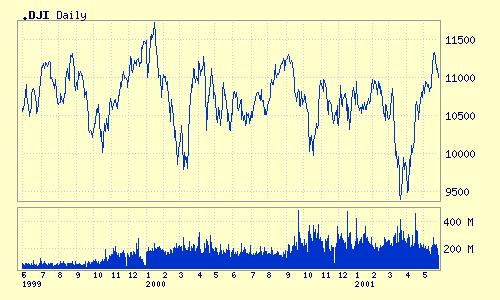
Full
text
Top of page
Analytikernas förlorade heder
Weje
Sandén, t f chefredaktör Veckans Affärer 2001-04-17
På flyget hem läser jag att Wall Streets mest uppburne
internetanalytiker, Henry Blodget, stämts på tio miljoner dollar av
en förbannad småsparare. Blodget anklagas för systematiskt
bedrägeri under flera år.
I USA är Henry Blodget en celebritet. Under fjolåret
intervjuades han inte mindre än 816 gånger i TV om sin syn på
börsen i allmänhet och internetaktier i synnerhet.
Gurustatusen grundlades 1998 när den då 33-årige
Blodget förutspådde att kursen för Amazon.com skulle stiga till
400 dollar. Aktien stod då i 243 dollar – redan det en utmanade
hög värdering, enligt andra förståsigpåare. Just
detta faktum gjorde att den då okände aktieanalytikern på den
lilla mäklarfirman, fick enormt stor uppmärksamhet i tidningar och
TV. Gång på gång återgavs Blodgets prognos, med
följd att Amazon.com tre veckor senare noterades i 400 dollar. Blodget
blev omedelbart hjälteförklarad och anbuden från de stora
firmorna haglade.
Merill Lynch bjöd bäst, samtidigt som man valde att kicka ut
sin tidigare internetanalytiker (han hade haft sälj på Amazon.com).
Henry Blodget har fortsatt att tala gott om internetaktier –
även långt efter det att kursraset började förra
året. På senare tid har han dock givit uttryck för viss
självkritik, men ännu i början av året hade han inga
säljrekommendationer på sina bolag.
Nu har alltså Henry Blodget stämts. Något liknande
är knappast aktuellt i Sverige. Men det finns all anledning att diskutera
de svenska analytikernas roll i den största spekulationsbubblan i modern
tid.
Det
framgår av veckans Special, där VA:s Richard Björnelid
försöker ge svaret på hur och varför IT-bubblan
inträffade.
Det finns många som har skäl att vara generade idag:
Styrelseproffsen som legitimerade och godkände excesserna,
riskkapitalisterna som satte marknadskrafterna ur spel genom att finansiera
dödfödda affärsidéer, PR-konsulterna som hjälpte
till att sälja in dem till media och entreprenörer som ägnade
mer tid att sälja aktier än att bygga företag. Det gäller i
allra högsta grad också media som varit alltför okritisk och
onyanserad i sin rapportering.
Men priset tar ändå analytikerkåren. Hur kunde så
många, som betalas så mycket för att nagelfara företagens
affärsidéer och balansräkningar, lockas med i karusellen?
Full text
Jfr Varför gör
prognosmakarna så stora kollektiva misstag?
Göran Albinsson
Bruhner
SvD 2001-10-01
A Primer on Depressions
By John H. Makin, April 2001
A depression follows a period of euphoria about the
outlook for the economy and the future earnings of "new" companies. The
euphoria becomes unsustainable, and the stock prices of the new companies
collapse. Large wealth losses replace large expected wealth gains. Consumption
growth slows, then turns negative, and stock prices of more companies fall
because weaker demand erases pricing power and, with it, prospective profits.
Demand falls further, and deflation sets in.
In a depression, the central bank discovers (to its
horror) that stock prices, not interest rates, become the major transmission
mechanism running from financial markets to the real economy. That is because
after a bubble earnings fall faster than any central bank can, or will, cut
interest rates, and when earnings, or more ominously, expected earnings, fall
faster than interest rates, then stock prices fall.
http://www.aei.org/eo/eo12776.htm
Why the US needs a recession
Samuel Brittan, Financial Times,
March 29, 2001
Almost the first economic article I wrote for the Financial Times was in
response to queries about whether there would be a US recession. In fact, there
will always be a US recession on the horizon. Like most market economies, it is
prone to occasional dips; and the most one can do is to be prepared and act to
combat any downward spiral.
Is the US already in a recession? The question is semantic. If a
recession is defined as a serious fall of growth below trend, the US has been
in recession since the last quarter of last year.
What is, however, pretty clear is that significant recessions are almost
impossible to predict. This emerges just as clearly from modern work on
complexity theory, expounded for instance by Paul Ormerod, as from the more
orthodox study by Christopher
Dow , Major Recessions, 1998).
Looking at the last three international recessions, in 1973-75, 1979-82
and 1989-93, he finds that in two cases out of three the forecasting
performance of the Organisation for Economic Co-operation and Development was
either poor or “a failure”.
Failures are particularly likely when the recession is due to a shift in
confidence or the bursting of a financial bubble, the timing of which is almost
unknowable. The same agnosticism applies to predicting the depth and length of
any recession.
Gavyn Davies of Goldman Sachs cites a study showing
Txt
The forecasting record this time round has if anything been worse. As Mr
Davies says, it seems likely that “the herd-like tendencies of forecasters
was being maintained” - or perhaps they were reacting to their
wrong-headed recession predictions after the Asian crisis of 1998.
What can be said with more assurance is that the US needs a
recession after a long and excessive boom. In saying this, I am doing no more
than following the implications of the mainstream analysis espoused by most
central bankers.
They have mostly accepted the view that there is something like a normal
degree of resource utilisation or employment level above which we are likely to
get not merely inflation but accelerating inflation.
My main departure from this mainstream is that I do not think that this
equilibrium rate - and therefore the safety limits to the growth rate - can be
estimated even approximately. We do not know how far it has been changed either
by labour market reforms or by the so-called revolution in information
technology.
There are, however, a good many indications that the US was growing in
the past few years at well above these safety limits. It was not merely the
stock market: the pressure on the whole economy, including labour markets, had
become too high.
It is of course undesirable to have a secondary depression over and
above the slowdown required to squeeze out inflation and reduce the investment
overhang; but that is very difficult to achieve in practice.
It is bad manners to say “I told you so” but we would not have
got to the present point if Alan Greenspan, chairman of the Federal Reserve,
had not put so much faith in the New Economy and its ability to suspend the
normal generalisations about business cycles and the economy.
There is a sufficient degree of recession in the US pipeline to avoid
having to advocate a deliberate and corrective slowdown.
Exact rates of output performance and inflation or deflation are outside
the control of central banks or other authorities. What they can do is to
pursue sufficiently expansionary policies to maintain a normal 4 per cent or 5
per cent a year growth of nominal demand, while leaving the market to sort out
the division between real growth and the price changes.
A panic policy of “cheap money and plenty of it” would (except
in Japan) either not work or stimulate a deceptive recovery leading to a
greater downturn in later years.
Samuel Brittan’s website is
www.samuelbrittan.co.uk
Top of page
Street cries
FT, March 17 2001
Welcome to the I-told-you-so market. Like fickle citizens who claim to
have been freedom fighters after the totalitarian regime falls, US stock market
commentators have rushed to demonstrate in recent weeks how they spotted the
collapse coming.
With exquisite timing, Warren Buffett, one of the few US investors who
can claim to have been part of the resistance all along, released his letter to
shareholders of Berkshire Hathaway, the investment company he heads, last
Saturday, on the first anniversary of the Nasdaq Composite's peak. A new wave
of investors had learnt some very old lessons, he wrote: "First, many in Wall
Street - a community in which quality control is not prized - will sell
investors anything they will buy. Second, speculation is most dangerous when it
looks easiest."
Right now, nobody believes speculation is easy. The Nasdaq is down more
than 60 per cent from its high of more than 5,000 and concern about the US
economy has infected the wider market.
The Wilshire 5000, the broad-based
index of all publicly traded shares that Alan Greenspan, the Federal Reserve
chairman, is said to watch, is 27 per cent below its peak.
This week, the
Standard & Poor's 500 joined it in bear market territory, down more than 20
per cent from its high, and
the Dow Jones Industrial Average dipped below
10,000 for the first time in five months.
The headline-grabbing slump in the main indices prompted even the
president to worry publicly about US investors' well-being this week. "I'm
concerned that a lot of Americans' portfolios have been affected," President
George W. Bush said during a visit to New Jersey on Wednesday, but added: "I've
got great faith in our economy."
Mr Bush is not the only influential figure weighing up the stock market
on one hand and the economy on the other. Mr Greenspan and his colleagues at
the Federal Reserve will have to pay attention to both next week when they meet
for the first time since the end of January to discuss monetary policy.
"The US economy, while it has certainly slowed down considerably, has
not fallen off a cliff," says Alan Skrainka, chief market strategist at St
Louis-based Edward Jones. "The Nasdaq is down 60 per cent but the US economy
isn't."
Employment, retail sales and housing data released in the last two days
indicate that the economy is stalling rather than diving into recession. The
University of Michigan's consumer sentiment index - which most analysts had
expected to fall further in March - rose slightly, according to figures
circulated yesterday.
"Clearly we see some slowdown but we don't see a recession, by any
means," says Deborah Cannon, president of Bank of America in Houston, Texas.
But so far there are surprisingly few signs of outright fear in the
marketplace. Investors have poured more money into money market mutual funds
but, according to anecdotal evidence, they have not started to flee equity
funds. Treasury bonds - the traditional haven of risk-averse investors - have
risen as the stock market has declined but there is little indication of a
headlong rush to quality as there was in 1998 when the Russian financial crisis
and collapse of Long-Term Capital Management precipitated a global liquidity
crunch.
Policymakers are conscious of the risks. Lenders and their supervisors
"should be mindful that in their zeal to make up for past excesses they do not
overcompensate and inhibit or cut off the flow of credit to borrowers with
credible prospects", Mr Greenspan told a banking conference this month.
Unfortunately for equity investors, Tuesday's Fed decision will be only
NT>
http://news.ft.com/ft/gx.cgi/ftc?pagename=View&c=Article&cid=FT3G5C6BEKC&live=true
What a difference a year makes
By Barry Riley FT, March 17
2001
There were plenty of smiles at a cocktail party hosted by pension fund
managers Phillips & Drew at the Eastbourne investment conference of the
National Association of Pension Funds this week.
Its "value" investment style has been prospering again, and although the
firm lost a lot of clients last year, this month it has retained a 2bn
management contract with the Greater Manchester local authority pension fund.
Yet it is only twelve months since Tony Dye was forced out as Phillips
& Drew's investment director. Attaining notoriety as London's Dr Doom, he
had been bearish for too long during the extended and extreme bull market.
The timing of his exit turned out to be perversely precise: within days
the global stock market bubble reached its peak of over-inflation and America's
Nasdaq Index subsequently collapsed 60 per cent.
More significantly, the broad S&P 500 Index was down 24 per cent at
its low point this Wednesday. London's FTSE 100 Index declined by a slightly
more modest 19 per cent.
Now Tony Dye is launching the Contra Fund, a European hedge fund in
which he can not only accumulate the shares of his beloved value companies but
he can indulge in the additional pleasure of short-selling overpriced growth
stocks.
He may, though, require a better sense of timing than he showed at P
& D.
http://news.ft.com/ft/gx.cgi/ftc?pagename=View&c=Article&cid=FT3BUJ94EKC&live=true
Det blir ingen mjuklandning
DN-ledare 2001-03-14
I backspegeln verkar det envisa fasthållandet vid ett mera
optimistiskt perspektiv därför nästan lite naivt.
Men de flesta prognosmakare, börsmäklare och andra ekonomiska
analytiker har varit lika goda kålsupare.
Man har talat om en tillfällig avmattning, en "mjuklandning"
för ekonomin eller en "normalisering". Vad som ökat oemottagligheten
för negativa signaler är förmodligen att den senaste
högkonjunkturen har varit onormalt lång, nästan åtta
år.
Top of page
Waking up to equity risk
Can the
global equity culture survive its first bear market?
Mar 8th 2001 The
Economist
WE ASK all our readers to observe a one-minute silence on March
10th to mark the first anniversary of the Nasdaq peak. Over the
past year this index, once the beacon of Americas new economy, has tumbled by
55%.
Klas Eklund
på SvD:s ledarsida 2000-08-11 För 20 år sedan
inledde Ronald Reagan en våg av skattesänkningar i
västvärlden. När USA sänkte sina skatter skärptes
trycket på andra att följa efter. Under en period blundade
många i Europa och en rad ekonomer (däribland jag själv)
hävdade att Reaganomics var ett oansvarigt tänkande. Men vi hade fel.
USA har ryckt åt sig ett stort försprång och har världens
mest framgångsrika ekonomi.
Americas broadest stockmarket index has lost more than 20% of its value.
Markets around the world are now, on average, at least one-fifth below last
years peak, as share prices have also tumbled from Tokyo to Frankfurt, Sao
Paulo to Seoul.
Over the past year, around $4 trillion has been wiped off the value of
American shares alone, a sum equivalent to 40% of the countrys GDP.
The collapse in share values after the stockmarket crash of 1987 was
only half as big, at 20% of GDP. Welcome to the global bear market, the
grizzliest for a generation.
Nowadays, falling share prices hurt economies more than they used to
because stockmarkets are everywhere much bigger not just in absolute terms but
also in relation to national income. As a result, Americas economy may yet face
a recession that was not supposed to happen (see article).
But is even more at stake than the course of the business cycle in the
United States and elsewhere? Might the fall in share prices spell the end of
the publics passionate new fondness for equities? If so, that would be a more
significant change than you might suppose.
The 1990s will be remembered as the start of the Internet age, but also
the decade when the worldnot just Americadiscovered shares. Global stockmarket
capitalisation hit $35 trillion last year, 110% of global GDP, up from 40% in
1990.
Stockmarkets used to be seen as the reserve of pinstriped brokers and
their wealthy clients. No longer. Over half of all Americans now own shares,
twice as many as on the eve of the 1987 crash. Share ownership is even higher
in Australia, an economy which not so long ago was run by trade unions.
In Germany, where cautious investors used to put their money in bonds,
one-fifth of adults are now shareholders, twice as many as three years ago.
Even poor countries, even communist onesChina is bothhave become crazy for
shares.
Will the slump in share prices kill this emerging equity culture?
Plainly, it depends on how much worse, if at all, the share-price slump gets,
and how quickly it is reversed. Share prices might recover as swiftly as after
the crash of 1987. But by many traditional yardsticks they remain overvalued.
And just as stockmarkets overshoot at the top, they often undershoot at the
bottom.
Falling share prices have already dented enthusiasm for shares in Japan
and many emerging markets. But after a pause, strong structural forces should
continue to support the eq>Txt
Keynesuity culture in the long term. In particular, as
state pay-as-you-go pension schemes strain under the weight of ageing
populations, governments around the world are keen to encourage a shift to
private pensions. This will fatten the funds that invest in equities.
After an 11-year bear market in Japan it is hardly surprising that less
than 10% of households still own shares. Here, too, a rapidly ageing population
poses a big challenge to pension finance. In the short term, on the other hand,
a severe bear market would make it even harder to privatise state-run
social-security systems, such as Americas.
Meanwhile, companies are struggling to cope. The supply of fresh equity
capital has more or less dried up in America in recent months. This has had
severe consequences further down Americas capitalist food chain, because
venture capitalists rely on the exit route of an IPO to get their money back
(ideally multiplied many times over).
Entrepreneurs with bright ideas are finding it hard to raise fundsa
state of affairs that could do serious harm to prospects for further
innovation. Small individual investors, especially, have lost some of their
enthusiasm for equities.
In America, day trading over the Internet is not the national pastime it
was; these days it is regarded more as a mild form of mental illness. Actually,
that is no bad thing. Small investors need to take a cautious long-term
approach to the stockmarket.
With luck, the new equity culture will survive, but with added wisdom.
The popularity of shares ought to reflect the underlying profitability of the
companies that issue them, not delusions of instant riches at no risk.
It ought to be guided too by something closer to intelligent analysis
than the comments of one American dotcom analyst this week. Asked to explain
why his recommended stocks were down 79% since the start of last year, he
replied: The market went from saying, We like companies that are growing
quickly but are losing a lot of money, to saying, We want to see earnings. Its
very hard to predict a 180-degree turn like that.
Actually, it was dead easy to do so.
Enough of a bear market to discredit the dispensers of such drivel can
only be salutary.
Top of page
Don’t mention the R-word
The Economist 1 mars 2001
IS THE flurry of gloomy economic news in America giving you nightmares?
Fear not. According to a recent survey, only 5% of economic forecasters predict
that the American economy is heading into recession. But before you drift back
into a peaceful slumber, remember that the dismal scientists have a dismal
record in predicting recessions. Not only are their forecasting tools blunt,
but many also seem to have an inbuilt bias against uttering the dreaded R-word.
Consider forecasters’ record during America’s past two
recessions. In late 1981, when we now know that the economy was already in
recession, the average forecast for GDP growth in 1982 was over 2%. In the
event, output fell by 2%. In August 1990, the very month that America dipped
into its next recession, the consensus forecast was for 2% growth in 1991;
output actually declined by 0.5%. By chance, the average forecast for growth
this year is again close to 2%. But, of course, this time is different: the
forecasters couldn’t possibly blunder again. Could they?
To be fair, economic forecasting is even harder than weather
forecasting. At least weathermen know whether it is hot or freezing right now.
Economists, in contrast, have to forecast the immediate past, which is
constantly being revised. However, there are also much less excusable factors
at work, such as the “tell ’em what they need to hear” syndrome
or the wimpish tendency to run with the gang. Predicting a recession is never
popular, especially if you work for an investment bank. Economists who do not
want to jeopardise their career may prefer to stay close to the consensus
forecast. Better to run the risk of being wrong in good company, they reckon,
than be right and an outcast.
There have long been suspicions about the objectivity of research done
by investment-bank analysts, who, even as the ceiling falls in, advise their
clients to “buy”, “hold” or “accumulate”
(apparently different from “buy” or “hold”) rather than
sell. Coincidentally, these banks earn fat fees for flotations or merger deals
from the companies they analyse. Investment banks, which have made billions out
of the boom, also have a vested interest in remaining bullish about the economy
at large. Most Wall Street firms are still officially forecasting no recession
in America. But an alarming number of their economists have privately admitted
to The Economist that they believe that the risk of recession is higher than
their published forecasts say. They are not alone in their dishonesty.
International organisations such as the IMF are no doubt just as inhibited
about forecasting a recession in the country that is their biggest shareholder.
So as not to alarm their clients, economists are also swiftly redefining
a “soft landing”. A few months ago this was widely viewed as growth
of around 3%. Today, many economists, reluctant to admit they were wrong, are
counting anything short of outright contraction as a soft landing. Shame on
them: a slowdown in growth from a rate of 5% early last year to, say, zero this
year would certainly feel like a hard landing.
Economists can always quibble about what “recession” means.
The popular definition—two consecutive quarters of decline—is too
crude. It might make more sense to define a recession as a period when the
unemployment rate rises by at least one percentage point—that is, when GDP
growth falls significantly below its potential rate. Alternatively, there is a
less technical solution. When your neighbour loses his job, it’s a
slowdown. When you lose your job, it’s a recession. When an economist gets
sacked, that’s a depression. Economists afraid to say what they think
deserve to be a bit depressed.
"One of the most striking features of the present chapter in stock
market history is the failure of the trading community to take serious alarm at
portents which once threw Wall Street into a state of alarm... Traders, who
would formerly have taken the precaution of reducing their commitments just in
case a reaction should set in, now feel confident that they can ride out any
storm which may develop. But more particularly, the repeated demonstrations
which the market has given of its ability to 'come back' with renewed strength
after a sharp reaction has engendered a spirit of indifference to all the
old-time warnings. As to whether this attitude may not sometime itself become a
danger-signal, Wall Street is not agreed." The New York Times (Sept. 1,
1929)
"The economy is showing secular productivity growth of a magnitude not
seen in decades. Inflation remains under control. The U.S. boasts budget
surpluses as far as the eye can see. The build-out of the Internet, so rich in
promise, is still in its embryonic stages. The stock market excesses of early
this year have largely been purged from the system, without exacting any
systemic damage. In short, the Goldilocks economy is alive and well and the
bull rules."
Barron's (August 28, 2000)
Martin Wolf, A testing year for the world
Financial Times, January 3, 2001-01-03
This is, for the purist, the first year of the third millennium. As
befits such a year, it will be a challenging time for the world economy.
The first test is for Alan Greenspan.
Views on the chairman of the US Federal Reserve fall into two camps. The
larger one believes his institution has mastered macro-economic fine-tuning.
The smaller camp believes he has helped create a bubble economy.
If the growth of US demand slows smoothly to about 3 per cent, with no
big declines in the stock market and a modest depreciation of the dollar, the
first group can feel vindicated. If not, it cannot.
The second test is of the “new economy”.
Not long ago, believers thought that the business cycle was dead,
profits were irrelevant to technology companies and the US was in the middle of
an unparalleled technological revolution.
2000 gave the lie to the first two propositions. But what is the
plausibility of the third? Even the Organisation for Economic Co-operation and
Development accepts that the potential rate of growth of the US economy is 4
per cent. This implies long-term growth in labour productivity of a little
below 3 per cent, close to double the 1973-95 trend. If so, productivity growth
should remain robust even during this year’s slowdown.
The third test is for the US stock market.
Those who believe that the US miracle is just another bubble economy
point to the extraordinary valuations in the stock market. This, they insist,
generated unsustainably high rates of private sector investment and
unsustainably low rates of private sector savings.
At minus 11.6 per cent, total returns on US stocks last year (with
dividends reinvested) were the lowest since 1974. Yet even this was but a
modest offset to the staggering 270 per cent cumulative return enjoyed over the
previous five years (a compound rate of 30 per cent a year).
If the bubble story is right, last year’s negative return will be
followed by more miserable years. If not, returns will soon be back to
positive, albeit presumably more modest, levels than in the second half of the
1990s. What happens in 2001 will indicate which it will be.
The fourth test is for the euro.
Launched with optimism, it spent almost all of its first two years
sinking abjectly against a currency its founders had hoped it would rival.
Finally, towards the end of 2000, the euro began to show some strength as the
US economy weakened, bouncing back from a low of $0.83 on October 25 to $0.94
by the end of the year. 2001 will indicate whether this is a durable reversal
or a temporary respite for what one analyst rudely labelled a “toilet
currency”. If the former, the euro’s proponents would feel great
relief. The European Central Bank would also enjoy greater freedom of manoeuvre
in response to a sharp slowdown than if the currency had continued to remain
weak.
A fifth test concerns unemployment in the euro-zone.
After years of high and rising unemployment, the trend started to turn
in 1997. Since then the unemployment rate has fallen from a peak of 11.7 per
cent in 1997 in the euro-zone as a whole to 8.9 per cent in October 2000.
Employment rose from 118.5m in 1997 to an estimated 125.4m last year. The test
for the European economy is whether it can continue to generate jobs and lower
unemployment. This depends partly on how far the ECB stabilises the economy but
also on whether the recent rise in the employment-intensity of growth will be
sustained.
The sixth test is for Japan.
Here, yet again, there are polar views: one is that the economy is
finally on the mend; the other is that it remains on the critical list, with
the semblance of vitality solely explained by unsustainable fiscal
transfusions.
The optimistic view of Japan rests on an expected recovery in
consumption along with increasingly strong investment driven by the adoption of
information technology and the need to replace outdated capital. This will more
than offset the weakening of the external account as the US economy slows.
Meanwhile the fiscal deficit is set to remain unchanged: the OECD forecasts
general government financial deficits at about 6 per cent of gross domestic
product over the next two years.
The counter is partly that the financial sector remains very weak.
Worse, just as inflation makes the profitability of net debtors appear worse
than it is, so deflation makes it appear better. Smithers & Co, a
London-based investment adviser, estimates that the true return on
non-financial corporate equity was 2.7 per cent in fiscal year 2000, not the
published figure of 6.5 per cent, hardly the ideal backdrop for a needed surge
in investment.
The underlying challenge remains that of balancing demand with potential
supply. This is an economy with a gross national savings rate of about 30 per
cent of GDP but it also has a declining labour force, an unprofitable corporate
sector and an exceptionally high ratio of capital to GDP. A return to recession
this year would force policymakers to try something radically new.
The seventh test is for emerging market economies.
Russia is particularly intriguing. Goldman Sachs estimates economic
growth last year at 7 per cent, after 3.2 per cent in 1999. True, this is a
modest turnaround given the huge decline of 44 per cent in the (admittedly
defective) measures of GDP between 1989 and 1998. Yet it is at least a sign
that the bottom has been reached. Another such year would suggest that the
Txt
Txt< recovery is more than a temporary reversal helped by a jump in oil prices.
Also important this year will be whether Turkey remains on its exchange
rate peg, how Latin America, particularly Mexico, copes with a US slowdown and
whether east Asian economies dependent on US markets are able to sustain their
recoveries from crisis. More broadly, the ability of emerging market economies
to survive a slowdown in the US will be the clearest possible test of how far
they have strengthened after the financial crises of the 1990s.
My last test is for the UK.
Here everything looks almost bewilderingly healthy, with a strong fiscal
position, robust currency, low inflation, modest unemployment and a manageable
current account deficit. The International Bank Credit Analyst even described
the country as a safe haven in its December review. A turbulent 2001 would show
whether the economy has been transformed or not.
Yet 2001 will be first and foremost the testing year for the US. Is the
world about to witness the popping of a bubble economy or a smooth adjustment
from temporary overheating to sustained and rapid growth? If, after a
record-breaking nine years of expansion and a modest slowdown the US takes off
yet again, we can reasonably conclude that the notion of a new economy is more
than mere fool’s gold.
More
by Martin Wolf
More about New Era
Top of page
"Many of today's investors were still in diapers during the great
stagflation of the 1970s. Those who weren't will never forget the darkest
period in modern financial market history."
Stephen Roach Morgan Stanley Dean Witter
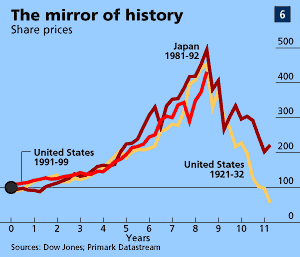
The Return of STAGFLATION
Stagflation: a term coined by
economists in the 1970s to describe the previously unprecedented combination of
slow economic growth and rising prices.
http://www.gold-eagle.com/editorials_00/blanchard123000.html
The Perfect Storm - Inflation with Dollar Collapse or Depression with
Hyperinflation
http://www.gold-eagle.com/editorials_01/puplava010201.html
Den som vill kan muntra upp sig med tankar av Mats Johansson och Klas
Eklund, som trots sina skiftande bakgrunder, är eniga om att
EMU är
jättebra....
Felet med Mosesteorin
SvD-ledare
2000-03-02, utdrag
Efter decennier av skleros och Delorium har EU mycket
att lära av den ekonomiska förnyelsen i USA, som tog sin början
under Reagan-åren. Aven statsministern bör ta sig tid att studera
Prodi-programmets förslag till reformer.
Perssons ekonomiska filosofi samman fattas numera i sentensen om sju
feta år, följda av sju magra, den s k Mosesteorin.
Den stämmer inte på USA, som har upplevt en ekonomisk
framgång av historiska mått över de senaste decennierna.
Trots flera börschocker, av vilka vi sannolikt inte har sett den
sista, förefaller den amerikanska modellen överlägsen den
svenska och den europeiska; inte i alla avseenden, men många. ..........
I så fall bör vi fortsätta att vända blicken bort
från den amerikanska modellen och till siste arbetslös hålla
fast vid alla de gamla krusbärsdogmerna. Då har vi inget att
lära av det ekonomiska språnget i väster. Då kan
vi lugnt fortsätta att irra i öknen och yra om sju år av olika
vikttillstånd.
Klas Eklund på SvD:s ledarsida 2000-08-11
För 20
år sedan inledde Ronald Reagan en våg av skattesänkningar i
västvärlden. När USA sänkte sina skatter skärptes
trycket på andra att följa efter. Under en period blundade
många i Europa och en rad ekonomer (däribland jag själv)
hävdade att Reaganomics var ett oansvarigt tänkande.
Men vi hade fel. USA har ryckt åt sig ett stort
försprång och har världens mest framgångsrika ekonomi.
The governor of the Bank of England, Sir Edward George: "it's not a
nightmare scenario"
The governor of the Bank of England, Sir Edward George, has warned that
the United Kingdom is likely to be affected by the economic slowdown in the
United States.
BBC 2000-12-29
He said the current data did not suggest anything "deeply damaging to
our situation" and that it was "too soon to become seriously concerned", but
warned the "biggest cloud on the horizon" would be "a sharper slowdown in the
United States than we expect".
"We will see slower growth than we expected", Sir Edward said, "but it's
not a nightmare scenario".
LETTERS TO THE EDITOR: History’s biggest credit bubble will
collapse
Financial Times; Dec 19, 2000 By KIM EVANS
Sir, Prof Rudi Dornbusch has it half right (”A rendezvous with
bankruptcy”, December 15). The US does matter - and he glosses over the
extent of our problems. Yes, Japan is in parlous circumstances and yes, unless
they let their debts liquidate and markets clear, there is no solution on the
horizon.
US indebtedness is a much bigger problem. It now exceeds Dollars
2,600bn. The vaunted US surplus is a chimera, as the Federal budget is in deep
deficit. Why? The unfunded Social Security and Medicare obligations of the US,
coupled with unfunded government workers’ retirement, are a black hole. If
there were an actuarial requirement to provide for these obligations, the US
budget would show a deficit by one reckoning that pushed Dollars 1,000bn a
year.
The purported ”surplus” is due primarily to capital gains
taxes and exercise of options by the US’s senior executives. The gap
between average worker and CEO has never been greater, at a ratio of 475 times,
as a result of options.
Before 1995, Nasdaq and personal consumption in the US had a weak
correlation of 0.24. Since 1995, this correlation has increased to 0.74. As the
Nasdaq bubble further collapses, a negative wealth effect will occur, lowerin/A>
Txt
g
corporate profits, wage gains and capital gains.
The US savings rate will increase from a negative rate currently,
resulting in diminished US profitability. Rising joblessness means more
government payments. Presto! Lo and behold, the deficit reappears.
Since 1995, broad money in the US expanded by Dollars 2,600bn and total
credit by Dollars 9,300bn, yet nominal GDP was up only Dollars 2,700bn. In the
second quarter of 2000, credit expanded by Dollars 1,400bn, a record pace.
Credit has been growing at 4-5 times the rate of GDP growth. Consumer credit
has never been greater, mortgage indebtedness as a percentage of total housing
value has never been greater and US corporate indebtedness has exploded as US
executives have bought back shares to make their options profitable. Downgrades
by credit agencies, rising personal and corporate bankruptcies and wide credit
spreads indicate a systemic credit problem. Pimco’s Bill Gross said to
avoid corporates ”at any cost”. Profit downgrades increase daily.
The US debt situation and credit bubble make Japan look prudent
fiscally. No amount of Fed legerdemain can overcome the collapse of the
greatest credit bubble in history.
Top of page
Pushing On A String
Sean Corrigan Capital Insight 22
November 2000
http://www.capitalinsight.co.uk/Home/Home.asp
Back in the early 90s, global interest long-term rates - as measured by
our IRS index, weighted for outstanding global OTC positions and adjusted into
USD - were in excess of 10% as the UK attempted to cool the Lawson Boom, the
Bundesbank was making Helmut Kohl pay for his 1 Ost = 1 West decision,
Greenspan was pricking the latest debt bubble in the US and Mieno was all-too
successfully restoring sanity to Japanese asset markets.
Rates then halved as the ERM crumbled, Japan imploded and America’s
banks began to domino. Soon, however, bust began to turn again to boom, and it
was time to lurch onto the other side of the boat in an attempt to keep it from
capsizing under the weight of its own contradictions. The Fed’s 1994
tightening - and the associated leveraged and structured derivative cascade -
took us screeching back over 8% before Mexico collapsed and Japan begun to pump
dangerous amounts of liquidity into the system in order to reverse the
Yen’s debilitating rise.
Then the Bubble began in earnest and interest rates embarked upon a
fairly uninterrupted decline to their nadir of 3.8% in the early Spring of last
year. Not only was this unprecedentedly low, for the modern age at least, but
it represented a global zero real rate if we compare it to OECD composite
indices and it came at a time when the ability to manufacture credit had
received an enormous (and still only dimly-understood) fillip from the launch
of the Euro and the consequent consolidation of European banking and capital
markets......
Full article
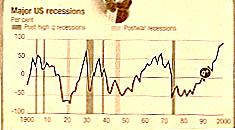
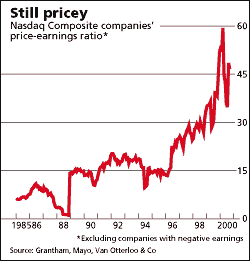
The Credit
Bubble Bulletin - by Doug Noland
At Gold Eagle
Corporate-Bond Market Faces a Gloomy Outlook
From Wall
Street Journal 2000-10-18
Faced with unrelenting bad news, the U.S. corporate-bond market is
staggering through its worst period since the bleak days of 1998.
Though it had been a strong year for corporate bonds until recently,
investors' losses have mounted of late, corporations are finding it difficult
to sell their bonds and Wall Street dealers are becoming gun-shy about trading
them for fear of getting stuck with bonds while prices are falling.
If the problems get worse, the U.S. economy could feel the pinch as
companies find it difficult to raise financing.
Treasury securities, the safest bonds, still sell like hot cakes (they
rallied Tuesday as stocks continued to fall). But other, riskier bonds suddenly
are struggling. Taking the biggest hit: junk bonds, otherwise known on Wall
Street as high-yield bonds, a major source of capital for many growing
companies that pose a higher credit risk. The proportion of junk bonds trading
at distressed prices surged during the past month to the highest level since
the early 1990s, when the market was paralyzed by recession and the collapse of
Drexel Burnham Lambert.
Nearly one in four junk bonds is trading at distressed levels, defined
as yielding 10 percentage points or more over Treasurys, says Martin S.
Fridson, chief high-yield strategist at Merrill Lynch & Co. The distress
ratio "is a leading indicator of the default rate [for corporate debt], so it
suggests some further pain coming," Mr. Fridson says.
Tuesday morning, Gary Goodenough decided to sell $12 million of
top-rated corporate bonds, which normally would be a snap for a professional
money manager. Not now. When he picked up the phone and asked six Wall Street
dealers for bids, two passed. Three made bids that weren't close to the market
price. The sixth gave an initial price indication, but said he would only buy
the bonds at a lower level.
A year ago, Mr. Goodenough would have hung up the phone. Tuesday, the
co-head of fixed-income investments at MacKay Shields Financial in New York
said, "Sell 'em" to the sixth dealer. Even though he wasn't happy with the
price, Mr. Goodenough was relieved to get out of his position amid a tumbling
corporate-bond market -- where it suddenly has become much harder just to get
in and out of positions.
"There's been a massive erosion of liquidity," says Margaret Patel,
manager of the $120 million Pioneer High Yield Fund, referring to the ability
of investors to easily get in and out of bond positions without moving prices.
The average junk bond is trading at 80.65 cents on the dollar, down from
more than 84 cents in early September, and almost 90 cents at the beginning of
the year, according to Merrill Lynch. Junk bonds now trade at their lowest
level since March 1991.
Junk bonds sell at a yield of 7.1 percentage points above comparable
Treasurys, markedly higher than the 4.5-point
Txt
If bond issuance remains difficult, it will put pressure on an important
area of financing for U.S. and global companies, potentially hurting economies
around the world. Further, the premium that investors are demanding for riskier
bonds could be a signal that the U.S. economy's growth is set to slow
substantially, perhaps resulting in a recession.
"I lean toward a hard landing" for the U.S. economy, says William Gross,
of Pacific Investment Management Co., the bond heavyweight.
Top of page
Is the end in sight?
From The Economist, October 18, 2000
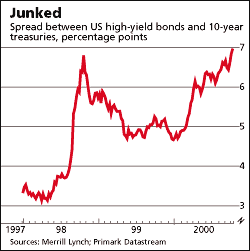
Wall Street is rediscovering fear—this week in its high-tech
stockmarkets, but more particularly in the junk-bond market THERE is trouble
brewing in the world’s capital markets, especially at their most
speculative end. Although the blue-chip Dow Jones Industrial Average has fallen
by only a bit—well, 10% actually—this year, Nasdaq, the main market
for high-tech shares, has had a torrid time. Since its high point in March, it
has fallen by some 40%, and it shows few signs of hitting bottom. The profits
of technology companies are failing to meet expectations—and even the rare
ones that do, such as Yahoo!, find that this is not always enough to spare
their share price a beating. Telecoms firms are saddled with huge debts.
Internet firms are near-untouchable. At mid-week, the Nasdaq Composite index
had fallen for 13 of its 15 most recent trading days.
So much for shares. But an even scarier story may be unfolding in a
market mostly ignored by those who day-trade Nasdaq’s dreamy paper: that
for corporate debt. In recent weeks, disappointing profits have meant that some
blue-chip companies have seen their investment-grade debt pummelled. The
victims include Xerox, Eastman-Kodak, and just about every telecoms firm
(“death, taxes and the long-term deterioration of the phone sector are
among the few certainties in life,” wrote Credit Suisse First Boston in a
recent report).
After announcing bad results, yet again, last week, the spread on
Xerox’s bonds over Treasuries tripled to 330 basis points. Hitherto,
investment-grade bonds had generally stood above the fray. Cowboy junkies The
fray has, in particular, surrounded those bonds without an investment-grade
rating: described by Wall Street’s marketing folk as “high-yield
bonds”, but formerly (and perhaps again) known simply as “junk”.
These bonds, particularly those issued by non-blue-chip telecoms and tech
companies, have been by far the worst of a poorly performing bunch. Merrill
Lynch’s high-yield index is now nearly as ugly as in 1998, during the
panic over the failure of Long-Term Capital Management (LTCM), a hedge fund
that owned lots of junk
This week, some big investment banks were rumoured to have lost a
fortune—$1 billion is the gossips’ favourite sum—on junk debt
they underwrote but could not shift even to their most gullible customers.
Among the names bandied about in the market were Morgan Stanley Dean Witter,
Deutsche Bank and CSFB. Each denied, more or less, that it had lost lots of
money on junk debt.
Since Credit Suisse bought Donaldson, Lufkin & Jenrette (a
high-yield-bond specialist), $12 billion—coincidentally, the price it paid
for DLJ—has been wiped off Credit Suisse’s market value.
Investment banks hold many billions of dollars of debt and have lots of
risky loans on their books. One market participant reckons that there is,
perhaps, $25 billion at serious risk in the big investment banks’
portfolios. It is conceivable, he says, that among them, they could lose $10
billion of this. If so, the grim reaper seems likeliest to be the telecoms
sector—which is fast looking less like the foundations of a glorious
Internet future and more like another outing for the emperor’s new
clothes.
http://www.economist.com/finance/displayStory.cfm?Story_ID=393171
The largest bond fund manager in the world is warning investors to
avoid corporate bonds at all costs.
Financial Times 2000-10-18
William Gross, managing director of Pimco, the Allianz-owned US fund manager,
fears the US economy is heading for hard landing and says the current
environment for the fixed income markets is the most uncertain he has seen
since he began trading in the 1970s.
"Spread product [corporate debt] is in for some grim reapings in the
next month and the next few quarters," said Mr Gross, whose fund manages about
$200bn in assets, and is considered the most influential in fixed income
markets.
The fund manager's comments, at a New York dinner, have added to the
considerable gloom that has descended on the corporate bond market in recent
weeks. It has been hit by falling share prices and concerns that the economy's
growth may be slowing more than expected as default rates rise.
Corporate bond spreads have widened dramatically in a variety of sectors
as a result, drawing comparisons from some analysts to the crisis that swept
credit markets after Russia's default in late 1998.
Mr Gross has recently moved much of his portfolio into mortgage-backed
securities, such as debt from Ginnie Mae, the home lending agency. Such bonds
offer higher credit quality than corporate debt, and higher yields than
traditional Treasury bonds.
Bankers are hopeful that a $7bn offering from Unilever will be completed
this week despite the market turmoil. The Anglo-Dutch consumer products company
will use the funds for its acquisition of Bestfoods.
Nordstrom's, the US department store chain, however, has been forced to
sweeten terms of an expected $250m offering as investors have grown more wary.
Underwriters were marketing the deal earlier in the week to yield 250 basis
points over Treasuries. But investors say the spread may now exceed 300 basis
points.
Other deals that underwriteFONT>
Bubble Trouble
By John H.
Makin
AEI, Economic Outlook, November, 2000-11-09
The American
Enterprise Institute for Public Policy Research is dedicated to preserving
and strengthening the foundations of freedom - government, private enterprise,
vital cultural and political institutions, and a strong foreign policy and
national defense – scholarly research, open debate, and publications.
Founded in 1943 and located in Washington, D.C., AEI is one of
America’s largest and most respected ”think tanks.”
A stock market bubble exists when the value of stocks has more impact on
the economy than the economy has on the value of stocks.
The U.S. stock market bubble is bursting - hot sector by hot sector,
starting with the Internet bubble, which has already burst, and continuing with
the information technology communications (ITC) sector bubble, which is in the
process of bursting.
The collapse of the hot sectors has also pulled down the stocks of
brokerage houses and banks that have been cheerleading for and financing those
sectors. Finally, the contagion will spread to more basic stocks such as Home
Depot, whose shares dropped sharply after announcing an earnings disappointment
in mid-October.
The collapse in 2000 of the hottest sectors of the stock market will
probably spread to other sectors and could well cause a U.S. recession next
year and possibly a global recession.
Fulll text at
http://www.aei.org/eo/eo12216.htm
Storm clouds gather
Barry Riley, FT, October
14
Momentum was the great theme in the global bull market in equities,
which finally appeared to peak last March. The downturn began a little earlier
outside the technology-based sectors (though there were signs of a double top
in some countries early in September). Now a Middle East war threat reminds us
of event risk of the kind that last hammered the stock market in 1990.
During the bull market, investors chased the fashionable stocks and
sectors ever higher. Those people looking for basic value and recovery
potential usually did very badly.
In the uptrend it did not matter that there was no conventional value to
justify the scarily high prices of high fliers. Now there is no value to
support their sinking prices.
The Nasdaq Index, in which became concentrated much of the US stock
market's value, but also most of the risk, has fallen by 25 per cent since the
beginning of September.
Asian markets have already entered a substantial bear market, with Tokyo
down by 26 per cent and Taiwan off by 42 per cent since peaks last spring. The
Nasdaq has declined by 39 per cent since the early March top.
The stock markets have arguably been driven by a remarkable, but
unsustainable, burst of corporate profits growth. Earnings per share growth in
2000 is expected by analysts to be 16 per cent in the US, 20 per cent in Japan
and 25 per cent in Continental Europe.
Even in the better-performing markets the earnings bonanza is
unsustainable. The US market is already being undermined by important
individual company downgrades, ranging from Intel to Home Depot.
Then there are the credit markets, which can also usually be relied upon
to send up some smoke signals of trouble just ahead. Admittedly the banks, and
their regulators, are determined not to repeat the regular past mistakes, which
have usually been concentrated in the real-estate sector.
But it is complacent to rely on lessons from old crises; the next
problem usually emerges from a totally unexpected direction. This time it is
the new-economy sector, especially tele-communications. Junk bond spreads over
government bond yields have been widening, and the ability of telecoms
companies (even substantial ones) to refinance temporary bank borrowings
through the bond market is suddenly in doubt.
We can see a classic pattern here, as repeatedly rehearsed in real
estate in the past. At one stage, in the middle of the bull market,
entrepreneurs and investors are obsessed with growth. The more grandiose the
ambitions, the better. Mobile phone giants are paying out something over $100bn
to European governments this year, just for the rights to use extra parts of
the radio spectrum. This is a symptom of over-investment; then the
realproblem turns out to be one of overcapacity.
This week Motorola, one of the mobile phone leaders, warned of a
slowdown. The company's already weak share price crashed further, and is now
down 66 per cent from the peak.
Throughout the technology sector it is time to ponder on the longer-term
consequences of such meltdowns: not just whether it will become difficult to
finance negative cashflows but whether it will prove possible to retain key
staff when the stock option plans become worthless.
Beyond that, the threat is that the whole process of leveraging
companies, partly through stock buybacks, concentrating the growth potential
into equities but offloading downside risk into bonds and bank credit, may come
unstuck.
In the US, credit quality has already been deteriorating during the
boom. Much worse could happen if there is a serious economic slowdown
aggravated by an oil famine. So far, however, there is little sign of any loss
of confidence in the banking sector - though banks stocks wobbled on Thursday.
Banks are viewed by investors as secure alternatives to the dangerous tech
wrecks. Mostly, the scare stories have been confined to investment banks, which
may have suffered from losses on junk bond positions and the halting of the
lucrative flow of new stock market flotations.
Yet it would seem prudent to declare an end to the long global bull
market which has been driven by the extraordinary expansion of the US economy.
Over the five-year period 1995-99, the S&P 500 Index multiplied in
value more than threefold, equivalent to average annual growth of 26 per cent.
The puncturing of the bubble is scarcely surprising. In this space las000000">Txt
Txt
t
new year's day I forecast that bonds would beat equities in 2000, more
particularly in the second six months. So far this year the total dollar return
on the FTSE World Index has been minus 11 per cent, and on the J.P.Morgan
Global Government Bond Index minus 2 per cent. Bonds are ahead, then - if you
have avoided telecoms paper.
Top of page
Samuel Brittan: Watch the
dollar, not the euro
Financial Times, October 12
The biggest flaw
in the world economy is the US current account deficit, which could place a
strain on the currency
När börsen faller är det inte
självklart att sätta sina pensionspengar i aktier även om
placeringshorisonten är lång.
Ur DN 2000-10-10
Och börsens kräftgång ser ut att kunna fortsätta.
IT-aktierna rasar och drar med sig hela börsen. Årets tidigare
uppgång på aktiemarknaden är helt uppäten och
generalindex pendlar kring noll. Och IT-aktierna har inte fått fast mark
under fötterna ännu.
Peter Malmqvist, börsanalytiker på
Aragon, tror på en fortsatt nedgång för börsen. Den som
ska placera sina PPM-pengar kan därför göra klokt i att avvakta
med aktieplaceringarna. Räntefonder är ett bra alternativ tills
börsoron lagt sig. - Jag skulle själv inte satsa några
pensionspengar på aktier just nu, säger Peter Malmqvist.
Han säger att den som satsar på aktiefonder och ser dem
sjunka kanske 10 eller 15 procent förmodligen bestämmer sig för
att byta till räntepapper i stället. Och sedan vänder
aktiemarknaden upp igen och pengarna placeras om ytterligare en gång. -
Man riskerar att bli en sådan som hoppar mellan tuvor och min erfarenhet
är att man då oftast hamnar mitt emellan, säger Peter
Malmqvist.
The Coming Great
Debt Liquidation Crash and Depression
A soft
landing for Greenspan? Debatt i Financial Times
Dollar in danger
David Hale, FT,
September 5 2000
The writer is chief global economist at Zurich Financial
Services Group
The US dollar has been so resilient for so long that most commentators
cannot conceive of circumstances in which it would experience a sharp
correction. Foreign demand for US assets remains so strong that there is little
reason for investors to lose faith in the short term. But once the US
presidential election is over confidence could be tested by a variety of policy
surprises.
The second great risk posed by the presidential election is that it
could set the stage for a clash between monetary and fiscal policy next year.
The US currently enjoys such a large federal budget surplus that it will be
impossible to prevent fiscal policy becoming more expansionary. The total
surplus is projected to be $4,500bn over the next 10 years, or $2,500bn
excluding Social Security.
In addition to the risk of inflationary overheating, Mr Greenspan is
also concerned at the size of the US current account deficit and the danger
that fiscal stimulus could increase it further. During the late 1990s, the US
private savings rate fell sharply as the government built up large surpluses.
If the government now reduces its surplus without any offsetting change in
private savings, the current account deficit would easily expand to 6-7 per
cent of GDP.
In the 1980s, fiscal stimulus initially helped to bolster the value of
the dollar by increasing real interest rates. But it is unclear if tax cuts and
higher spending would be as positive in 2001-2002 because of the changes which
have occurred in the US’s external financial position since the early
Reagan years.
The US will soon have a deficit on its international investment account
of 20 per cent of GDP, compared with a previous peak of 24 per cent in 1894.
The expansion of the current account deficit to 6-7 per cent of GDP when there
is already a deficit on investment income could at some point frighten the
foreign exchange market and set the stage for a dollar correction.
By Philip Coggan, FT, September 5 2000
The bullish case is
that the last six months have sorted out the technology sheep from the goats
and investors are indulging in some sensible bargain-hunting.
I simply
can’t believe it. Valuations remain at extremes. The price-earnings ratio
on both the telecoms and the software sector is over 80.
The market’s
top quartile stocks have a rating five times the lowest quartile stocks - that
is down from a peak of 6.5 in March but still well above the early 1990s when
the dispersion never climbed above three.
Fondavgifter bankernas nya guldkalv - Inga
sänkningar i sikte trots miljardvinster.
Av Anna Björe, DN
2000-08-29
Bankerna uppvisar rekordvinster och en stor del kommer från
landets alla fondsparare. Sedan årsskiftet har SEB tjänat 1.812
kronor på varje fondsparare. För Handelsbanken är motsvarande
summa 562 kronor. Men några sänkta fondavgifter blir det inte, trots
att vinsten för de fyra storbankernas kapitalförvaltning var mer
än 3,6 miljarder kronor.
Fond- och kapitalförvaltning är lönande för
bankerna. I flera fall har de fördubblat vinsten på
kapitalförvaltningen under de sex senaste månaderna. För SEB:s
del utgör vinsten från kapitalförvaltningen mer än en
fjärdedel av bankens totala vinst.
I begreppet kapitalförvaltning ingår inte bara
fondförvaltning, men fondförvaltningen särredovisas inte.
För det mesta ingår exempelvis fondförsäkringar och
förvaltning av privata förmögenheter också.
Samtidigt har avkastningen på ett urval av bankernas breda fonder,
där det mesta av fondkapitalet investerats, varierat kraftigt. Sju av
SEB:s breda fonder har gått 4 procent sämre än index de tre
senaste åren, enligt uppgifter som Fondstatistik tagit fram åt DN.
Vissa fonder har gått väldigt bra, andra har gått
mindre bra och där får vi skärpa oss, säger Claes-Johan
Thureson, chef för SEB fonder.
Enligt honom använder SEB sina vinstpengar till att köpa in
bättre förvaltningsresurser för att i förlängningen ge
fondspararna bättre avkastning Någon sänkning av
avgifterna är däremot inte aktuell, trots att vinsten på
kapitalf
Top of page
Books for the bosses on the beach
Martin Dickson, FT, August
4, 2000
Holidays can be a useful time for business people to raise their eyes
from the day-to-day grind and take stock of the wider social and economic
context in which they are operating. For this group, the literary holy grail is
that rare book that entertains, stimulates the intellect, and encourages
lateral thinking.
Unfortunately, the biggest business issue of the day - the internet
revolution - has produced remarkably few books which come anywhere near this.
Almost all are breathless, boosterish or adulatory.
Not so The Social Life of Information (Harvard Business School
Press), which looks at the interaction between information technology and human
intelligence and concludes that information is not the same as knowledge; that
it takes human flair and enthusiasm to create wisdom.
A strength of the book is that it is written not by luddites but two men
close to the cutting edge: John Seely Brown is chief scientist at Xerox's Palo
Alto research centre, home of some of computing's biggest breakthroughs, while
Paul Duguid is an academic at the University of California, Berkeley.
Michael Lewis captures some of the flavour of Silicon Valley in The
New New Thing (Hodder & Stoughton), an uneven but entertaining portrait
of Jim Clark, the larger-than-life serial entrepreneur who created the internet
browser company Netscape.
Anyone with severe market withdrawal symptoms should read Irrational
Exuberance (Princeton), a critique of the Wall Street bull market by Robert
Shiller, Yale economics professor, who examines the psychological factors (herd
behaviour, sports-like media coverage and new age thinking) behind the rise of
the Dow and reaches some chilling conclusions.
For a historic perspective, The Go-Go Years by John Brooks
(Wiley) is a classic account of 1960s exuberance (with some eerie parallels to
now) and its spectacular demise. For takeover junkies, Taken for a Ride: How
Daimler-Benz Drove Off With Chrysler by Bill Vlasic and Bradley Stertz
(Wiley), presents a breathless and US-centric but entertaining account of
Daimler's swallowing of Chrysler.
Globalisation is another big business issue, but books on the subject
tend to be dull or platitudinous - not great beach reading. Better to delve
into two works, published a few years ago, that put in sweeping historical
context the factors that have made some countries rich and others poor.
The Wealth and Poverty of Nations by David Landes (Little, Brown)
offers the analysis of an erudite historian. Guns, Germs and Steel by
Jared Diamond (Vintage) presents an extremely original scientist's-eye
perspective. A book to change your view of the world.
For those who prefer their literature classical rather than post-modern,
Anthony Trollope's The Way We Live Now (Oxford) is a tale of a great
financier's fraudulent machinations in the 1870s railway business, and a satire
of a society in the throes of bull market excess. But on second thoughts,
perhaps that is a little close to home.
Is VoiceStream Worth the Price?
Herald Tribune, July 25, 2000
The $50.7 billion price for VoiceStream Wireless Corp., a cellular
service provider based near Seattle, set a dizzying record for acquisition
costs in the telecommunications industry, based on price per customer, and left
rivals in awe of the leap in expansion costs.
''Two weeks ago, no one would have believed that anyone could pay
$20,000 per subscriber for any mobile service anywhere in the world,'' said
Fabrice Farigoule, telecommunications analyst in Frankfurt at the B. Metzler
Bank.
Gabriel Stein about the dollar
Financial Times 2000-07-19, by
Daniel Bogler
The greenback's strength reflects inflows of foreign money as
international investors have chased the high real returns generated by assets
in the booming US. As a by-product, a strong dollar has helped to keep a lid on
inflation, financed the country's growing current account deficit and prolonged
the boom.
But this virtuous circle could rapidly turn vicious. According to
Gabriel Stein of Lombard Street Research, another steep rise in foreign
purchases of US equities in the first quarter of this year shows that the US is
building up a "dangerous dependency on 'hot' capital flows" just as the Asian
economics did in the run-up to the 1997 crisis.
Txt
Tx>To avoid a similar debacle and to keep on plugging a current account
deficit of some 4.5 per cent and growing, US assets must remain more attractive
than any alternative. This means US stocks and bonds would need to continue to
outperform other markets.
This is difficult to envisage, given rising growth in Europe and most
emerging markets and, indeed, so far this year US equities have lagged behind
Canada, Germany, France, Italy and Sweden. It is also incompatible with the
aims of the Fed, which wants - and needs - a period of restraint from the
markets in order to slow down the economy.
For investors this looks like a classic bear trap. Even if the economy
does not succumb to one or more of the risks outlined above, the Fed's success"
will entail lower returns from US financial assets.
Even a soft landing then, might not amount to the best of all possible
worlds for the markets.
Jeff Madrick: Will the Market Crash?
The New
York Review of Books, Cover Date: August 10, 2000
The uncertainty of future profits and dividends, it may seem, leaves a
particularly wide margin for error in the evaluation of stock prices. But even
so, many and perhaps most economists believe that stock prices usually reflect
a reasonable estimate of a company's future performance, and that stock prices
deviate from this intrinsic value only temporarily. It is not necessary,
moreover, that most investors be right about stock prices. A relative handful
of well-informed investors will sell or buy stocks if their prices are
irrationally driven too high or too low.
In fact, so "efficiently" do these investors gather and evaluate new
information that it is extremely difficult for one well-informed investor to
have an advantage over others. Rarely, however, have the movements of the stock
market tested the validity of this thesis as they do today.
It is hard to
open the financial pages of the newspapers and avoid a discussion about whether
there is speculative "bubble" in stock prices that is about to burst.
[more]
All this comes at a justifiable price, reflecting both PaineWebber's own
admission that it lacks a global presence and the systematic undervaluation of
brokerage stocks on Wall Street. Despite a 47 per cent premium, UBS is paying
just 18 times expected 2000 earnings or around 3.8 times book value.
Morgan Stanley - admittedly a stronger all-round franchise - trades on a
similar earnings multiple and over six times book without a whiff of takeover
speculation.
FT Lex 2000-07-13
Top of page
Analysis of companies' net worth suggests that
Wall Street's high-flying stocks remain fundamentally over-valued
From
Marintin Wolf, FT, June 27, 2000
The probability that real prices on Wall Street will be lower at the end
of 2008 than at the end of 1998 is 85 per cent. This is a startling statement.
Yet if history and economic theory remain guides to the future, it is also
quite correct.
Its underlying logic is spelled out in a recent book by Andrew Smithers,
a London-based investment adviser, and Stephen Wright, a Cambridge University
academic. (Valuing Wall Street:
Protecting Wealth in Turbulent Markets, McGraw-Hill 2000.)
My colleague Philip Coggan has already reviewed the book (FT April 19
2000), but its argument deserves another look. It is too important to ignore.
It is conventional wisdom that it always makes sense to buy and hold
stocks. In the long run, this is true. But, as Keynes said, in the long run we
are all dead. It has not been true for the time horizons relevant to most
investors. The book shows that there were many years in the last century when
it was a very bad idea to buy stocks if one's time horizon was 20 years, or
less.
What is needed to identify such bad years is an indicator of fundamental
value. There is such an indicator: Tobin's q, after the Nobel-laureate
economist, James Tobin.
It is the ratio of the stock market value of companies to their net
worth. Today, q says that it is more than twice as expensive to buy companies
through the stock market than it costs to create them.
Over the long term, the two values have to converge. The question is
how. Will it be through a rise in corporate net worth or through a collapse in
the stock market's valuation?
The answer to date is clear: over the past three-quarters of a century,
the correlation between changes in q and in stock prices is very high.
Those bad years for investors were also years of relatively high q.
Since q has recently been higher than at any point in the previous 100
years, the conclusion is that the market is highly overvalued and likely to
fall.
When an altimeter leads to so unpleasant a conclusion, people react by
thinking it must have become unreliable. The core propositions of those who
reject q's uncomfortable message are two.
The first is that traditional estimates of net worth are no longer
valid.
The second is that the adjustment to the high q will occur not through a
fall in stock prices, but through investment, further stimulated by a lower
cost of capital.
The first is clearly wrong. The second is logically possible, but at
best unlikely.
The most important arguments under the first heading concern so-called
intangible assets. Jan Hatzius of Goldman Sachs makes the argument as follows:
"Unmeasured intangible assets have most likely grown faster than
physical assets... This is because in the process of economic growth,
industries that intensively use intangible capital, such as technology and
entertainment, tend to grow relative to industries that do not, such as basic
manufacturing and services."
But the view that corporate net worth is seriously underestimated for
this reason is implausible, for at least three reasons.
First, much investment in intangible assets is already inclut
Txt
ded in net
worth.
Second, the measured return on capital must include the return on
unrecorded intangible assets. If, as people argue, such assets are a large
fraction of the total, then the measured rate of return on capital should be
higher than ever before. The rate of return on corporate capital did achieve a
good cyclical rise in the 1990s. But it remains well below the level it
achieved in the 1960s.
Finally, these moderate actual returns on corporate capital are also
inconsistent with the one good reason why corporate assets may be more valuable
today than before - a rise in monopoly. In any case, for every new alleged
monopolist, such as Microsoft or Intel, one can mention weakened old ones, such
as AT&T and IBM.
Thus the belief that the staggering rise in q can be explained by the
growth in unrecorded assets is nonsense.
Mr Hatzius accepts this, noting that unmeasured intangible assets would
have had to increase by $12,500bn since 1990. There is no reason to believe any
such thing.
If the rise in q cannot be estimated away, the second line of attack is
to argue that it is perfectly reasonable. Here two points are made.
One is that it reflects improved prospects for productivity.
Another is that there has been a fall in the equity risk premium.
Again, neither of these explains q's rise convincingly.
There is no obvious reason why higher prospective productivity growth
should raise the value of existing assets, even if it is true. Accelerated
technical change is as likely to reduce the value of such assets. Moreover,
rational investors should expect returns from higher efficiency to be bid away
by competition in favour of workers and consumers. Indeed, if the required
return on equity investment has been reduced by a falling risk premium, as many
argue, this gain will be more than bid away.
This leaves the last possibility - that adjustments to q will occur not
through a fall in equity prices, but via an expansion in corporate net worth. A
fall in the equity risk premium (and so of the corporate cost of capital) could
then help explain both the increase in stock market value and the subsequent
surge in investment.
This is conceivable, but implausible, not least because there is little
good reason to believe that the equity risk premium has fallen.
But two additional points can be made.
First, it could take a half century for investment alone to bring q back
towards its historic average. The slow pace at which the capital stock grows
explains why adjustments to q have, in the past, occurred through the price of
stocks instead.
Second, people are not behaving as though the prospective real return on
equity is lower than for any extended period in the past two centuries. In
surveys, investors still talk of the exceptionally high returns enjoyed since
the early 1980s. Meanwhile, far from financing themselves with the supposedly
cheap equity, companies are doing the reverse.
In recent years, US corporations have been enormous net buyers of
equity. This hardly suggests they believe equity finance is unusually cheap.
Try as one might, the q ratio's recent levels remain disturbing. It is a
theoretically and empirically sound indicator of market value. It is also
extraordinarily high.
Nobody has given a compelling explanation for this, other than the
obvious one.
The only sensible alternative is that the desired return on equity is
now far lower than ever before. Yet this looks like a fairy story, if one
without a happy ending.
In the past, collapses in q have meant falls in stock prices that have
heralded recessions. Will this story end any differently?
From The euro fights back by Barry Riley, FT, June 9, 2000
There are worriers around. This week, the Bank for International
Settlements, the central bankers' central bank, emerged from its usual
obscurity in Basle to publish its annual report. "The global economy now stands
on the brink," it announced. "But," it added unhelpfully, "the brink of what?"
The danger of a nasty global rebalancing, focused on a tumble by the US dollar,
seems to underlie its anxieties.
Central bankers and journalists are habitual gloomsters. People have to
rely on stockbrokers and the promoters of mutual funds to spread sunshine.
Pessimism has begun to lift: as the leading economies slow down ahead of
a soft landing, the threat of sharply higher interest rates is fading and we
should be able to concentrate on the wonderful story of technology-led change
and inflation-free growth. Think of the US investors who have made so much
money by buying the dips over the past five years.
But central bankers and journalists don't easily believe in miracles.
Unconstrained optimism has regularly proved costly in the past. The Japanese
miracle, which at one time terrified corporate America, fizzled out in 1989.
The Asian miracle had a good run but eventually crashed in 1997. As for the UK,
the Lawson miracle encapsulated the usual features of booming growth, rocketing
asset prices and a yawning but (for a while, at least) easily-financed trade
gap. Yet, it hit the buffers in 1988.
It is the huge imbalances that catch the eye at present, such as a US
current account deficit heading towards $400bn a year.
However, the investment flows may be just as important. Indeed, there is
something of a chicken-and-egg problem here. Do the investment flows happen
because countries find they are piling up excess dollars through trade? Or do
the trade gaps widen because institutions or companies around the world are so
keen to invest in the US that they are driving the dollar to uncompetitive
levels?
Either version of events suggests unsustainability, though the second
might well prove longer-lasting.
In an old-fashioned, divided world economy, the rebalancing pressures
would be high. In those circumstances the US, Japan and the euro-zone should be
more or less financially self-contained. But, in a globalised economy, they
need not be.
If Japan wa
nts to sustain a high personal savings rate but Americans
spend their way towards a negative one, that will be possible for an extended
period. However, the Japanese must be ready to invest overseas and the
Americans must accept the responsibilities and drawbacks of being the world's
biggest debtors; the costs are much greater than just those of reassuring
foreign hoarders of greenbacks that their wealth is not threatened by the
redesign of the notes, a problem the US is now having to address.
As for the euro-zone, the ECB seems determined to consolidate the
recovery by the euro against the dollar of 7 per cent since the low point on
May 17. It has been the sharpest rally during the whole period of downwards
drift (aggregating 25 per cent at its worst) since the new currency was born 17
months ago.
The ECB might have realised that its low interest rate strategy could
have encouraged so-called "euro-carry" trades (the borrowing of euro to be
switched into higher-yielding dollar assets). This is a rather pale version of
the Japanese yen-carry trade which was very substantial during the late 1990s,
driven by much wider interest rate differences. But that game ended last year
when several New York hedge funds lost money.
Carry trade distortions can generate persistent exchange rate trends,
but can also cause sudden sharp reversals when the risks of the currency
mismatching become painfully obvious and positions are unwound abruptly.
As the BIS describes in its annual report, much of the euro's slide can
be linked to the rapid development last year of euro-denominated financing,
encouraged by low interest rates, and the widening perception by borrowers that
the euro would prove to be a persistently weak currency. The ECB has repeatedly
refused to evade this psychological trap by directly intervening to support the
euro but, instead, it has now moved quite aggressively on interest rates.
The potential fundamental problems of Japan are considerably greater.
Japanese citizens are big savers, which is unfortunate in a country short of
demand; but, so long as they are content to stash the money away in (almost)
zero interest rate accounts, the system will remain stable. The trouble is, the
financial ratios will grow ever more frightening.
Rather similarly, the US financial system will remain stable as long as
foreigners are happy to channel $25bn a month into dollar securities or
corporate investments.
But it is easy to understand why all this is viewed nervously in Basle.
True, the brink is defined by my dictionary as the edge of a steep
slope, with some ambiguity about whether the gradient is upwards or downwards.
Perhaps the rest of the world is about to share in the economic acceleration
already enjoyed by the US.
Normally, though, brinkmanship involves tactics leading to the edge of
disaster.
On a trade-weighted basis, the dollar has suddenly dipped by 5 per cent,
eroding some of the protection that currency strength has given the US against
imported inflation.
Higher interest rates are required to hold back demand and inflation -
but lower rates are needed to support the US securities markets and keep
foreign investors happy.
Ghosts of Booms Past
By Robert J. Samuelson
Washington Post, February 8, 2001
It may be a sign of the times that a 10th-grade history teacher recently
assigned the following essay topic: What caused the Great Depression, and how
do economic conditions then (the 1920s) and now compare?
The parallels between the 1920s and today are intriguing and (of
course) unnerving, because the Depression was -- after the Civil War --
America's greatest social calamity. In 1933 joblessness hit a record 25 percent
of the labor force. Indeed, unemployment remained in double digits from 1931
until 1940, when it was cured by World War II defense spending.
The Great Depression was terrifying because it was so resilient. Hardly
anyone thinks it could happen again.
Top of page
Financial
Times stories about Hard landing
America's Harder Hard Landing
By John H.
Makin
January 2001
Top of page
Risking a hard landing
Martin Wolf ,
Financial Times, December 6, 2000
Nobody can have made much money out of betting against Alan Greenspan.
But the US Federal Reserve’s redoubtable chairman is engaged in perhaps
his trickiest task: slowing the US supertanker while avoiding the recessionary
shoals. Most people confidently expect him to pull it off. Yet the likelihood
of failure is considerable.
According to the latest Economic Outlook from the Organisation
for Economic Co-operation and Development, real US domestic demand grew at an
average annual rate of 5.3 per cent a year between 1997 and 2000. Over the same
period, the growth of real gross domestic product averaged 4.6 per
cent.
Since even this impressive expansion lagged behind demand, the result
has been a sustained rise in the current account deficit, up from just 1.6 per
cent of GDP in 1996 to a forecast of 4.3 per cent this year.
Even though the OECD has raised its view of the potential growth rate of
the economy to 4 per cent a year, it estimates the current output gap - the
deviation of actual GDP from potential GDP, as a percentage of the latter - at
2.5 per cent.
Thus excess demand has shown itself in both the current account deficit
and unsustainable exploitation of domestic resources.
Against this background, the slowdown in the third quarter, with growth
falling to an annualised rate of 2.4 per cent, is exactly what Mr Greenspan
ordered. The big risk he runs is that the impact of this slowdown on confidence
will trigger a rapid unwinding of today’s huge private sector financial
deficit - or excess of investment over savings. This has happened to a number
of other high-income economies over the past 20 years. The universal result has
been recession.
I discussed this vulnerability in a recent article for Foreign Policy.
The Mother of all Meltdowns: what a Wall Street Crash will do to the
world,
Foreign Policy, September/October 2000
www.foreignpolicy.com.
Between 1992 and 2000, the US private sector moved from a financial
surplus of 5 per cent of GDP, about 2 percentage points above its 1986-93
average of 2.7 per cent, to a historically unprecedented deficit of just over 5
per cent. This swing of 10 per cent of GDP in the US private sector financial
balance has, in turn, been the principal engine of demand for the US economy
and, to a significant extent, for the world.
Behind the swing in the US private sector’s financial balance have
been both rises in the share of private investment and declines in the share of
private savings in GDP. In 2000, private sector investment should reach 18.5
per cent of GDP, according to the International Monetary Fund, up 3.3
percentage points from its 1986-93 average. Meanwhile, private sector savings
in 2000 should be about 13.4 per cent of GDP, well down from the 1986-93
average level of 17.9 per cent.
Why should US private investment have been so buoyant and private
savings so weak? The answer is confidence, as shown in - and reinforced by -
the soaring value of equities. Between August 1994 and August 2000, the real
wealth (in 2000 prices) embodied in the stock market rose by $11,400bn - more
than a year’s GDP.
The impact of this enormous increase in paper wealth on savings is
difficult to determine. But it must have been substantial. Why should people
bother to save as much as before when the stock market painlessly delivered,
over a period of just six years, an increase in wealth greater than cumulative
gross savings (never mind net savings) over such a period? But rising stock
market valuations not only give a good reason to reduce savings. They have also
stimulated investment.
The swing of the US private sector into financial deficit is a
reflection of a virtuous circle: limited inflationary pressure; rising
profitability and accelerating productivity growth; optimism among consumers
and investors; soaring equity values; an improving fiscal position; powerful
foreign demand for US assets; a strong dollar; and back again to limited
inflationary pressure.
The question now is whether the recent collapse in the value of
technology stocks, combined with slowing economic growth, could turn that
virtuous circle into a vicious one.
In other high-income countries afflicted by significant declines in
asset prices, swings in the net financial balances of the private sector have
been as much as 10 per cent of GDP within a few years. That would bring US
private sector financial balances back to where they were in 1992.
Such a reversal could follow a big collapse in confidence. That, in
turn, would be reflected in - and multiplied by - a further big fall in equity
prices. Since the market, excluding technology, media and telecommunications
stocks, continues to trade at historically high price-earnings ratios - even
though earnings are at cyclical peaks and the economy is slowing - the risks of
this cannot be negligible.
Optimists insist that the tools of fiscal and monetary policy, combined
with adjustment to the external balance, could offset the impact on economic
growth of even drastic private-sector retrenchment. Formally, that is correct.
But Japanese and British experience suggest that this can be difficult to
achieve.
In the UK, for example, the general government’s financial balance
collapsed from a surplus of just under 1 per cent of GDP in 1989 to a deficit
of 8 per cent of GDP only four years later. According to the OECD, five
percentage points of this deterioration reflected deliberately expansionary
fiscal policy. Even so, the economy contracted sharply. Similarly, Japan’s
general government financial balance moved from a surplus of just under 3 per
cent of GDP in 1990 and 1991 to a deficit of 7 per cent last year. More than 8
percentage points of this deterioration reflected deliberate easing. Yet Japan
has suffered a decade of stagnation.
It is implausible that US fiscal policy would, or could, be used with
enough aggression to offset more than a modest swing in the private
sector’s net financial balance, although a President George W. Bush might
give it a good try. The so-called built-in fiscal stabilisers - the decline in
tax revenues and increases in spending that automatically follow recessions -
would merely cushion the impact, although at the price of a return to big
fiscal deficits.
Monetary policy might be still more ineffective. In the context of a
stock market collapse, the household sector would want to rebuild its wealth,
not take on more debt. The corporate sector’s willingness to invest would
be curtailed by declining equity valuations and slowing economic growth.
The immediate impact of an aggressive loosening of monetary policy would
probably be on the exchange rate and the external account. Yet difficulties
could then arise.
The Federal Reserve might be constrained by fear of a very weak dollar.
In 1999, a current account deficit of $339bn was more than financed by $228bn
in net foreign private sector purchases of US non-government securities and
$130bn in net inflows of foreign direct investment.
If this inflow turned into an outflow, the US would have to finance both
that outflow and the current account deficit. This could be done only with huge
inflows of short-term speculative capital or purchases of dollars by foreign
governments and central banks. Moreover, to the extent that the US is able to
offset recession by improving its external balance, it will be exporting its
problems to the rest of the world.
The US must now move smoothly to slower growth of demand and output
without shaking underlying confidence. If this is to happen, the US private
sector must remain both able and willing to run its unprecedented financial
deficit. Possible? Yes. Certain? Hardly, is the only possible answer.
More
by Martin Wolf
Spare a thought for the poor beleaguered central banking community.
Yes, they’re in nice, safe public sector jobs. But their reputations are
starting to fade.
Philip Coggan, FT, August 27 2000
Not long ago, confidence in central bankers was astonishingly high. They
were the men (there is the occasional woman, but the profession appears to have
a marble ceiling problem) who had worked out how to control inflation. Alan
Greenspan, in particular, could walk on water.
The surge in the price of oil has clearly compounded the dilemma. One
response would be to ignore this development. Core inflation remains subdued.
The oil price is much less significant to the global economy than it was in the
1970s. To the extent that higher oil prices do have an effect, it will be to
dampen demand, as wealth is transferred from consumers in the US, Europe and
Japan to producers in the middle east and Latin America.
The problem with ignoring the oil price rise is that it will hand a
smoking gun to the central banks’ critics. At this stage of the economic
cycle, when no-one is quite sure whether the world economy is on the verge of a
new era or an inflationary boom, central banks are very vulnerable to the
”wasn’t it obvious?” attack.
Wasn’t it obvious, they will say, that high oil prices, high
stock markets, the weak euro, the US current account deficit, rising debt
levels (take your pick) would lead to disaster?
Top of page
Survey Puts Analysts Into Two Camps Over Fed's Ability to Curb
Inflation
By CONSTANCE MITCHELL FORD
Staff Reporter of THE WALL STREET JOURNAL
July 3, 2000
NEW YORK -- Economists are confident that the Federal Reserve will
engineer a soft landing this year for the U.S. economy, where growth continues
to expand but at a slower, more sustainable pace.
However, economists are deeply divided over whether the soft landing
will succeed in keeping inflation under wraps.
The consensus estimates of the 55 economists who participated in The
Wall Street Journal's latest semiannual forecasting survey call for annualized
growth in inflation-adjusted gross domestic product of 3.6% in the second
quarter, 3.4% in the third quarter and 3.2% in the fourth.
Those forecasts indicate that analysts believe the economy has already
begun to slow from the red-hot pace of recent quarters and will continue to
slow throughout the year. GDP grew at an annual rate of 5.5% in the first
quarter of this year and a blistering 7.3% in the fourth quarter of last year.
Essentially, the forecasters appear to fall into two major camps: the
optimists and the pessimists. The optimists believe that the Fed, which has
been raising interest rates for the past year in an effort to steer the economy
toward a 3.5% to 4% annual growth rate, will pull off the perfect soft landing
by slowing growth just enough to cut off inflationary pressures while keeping
unemployment stable.
"I'm betting on the Fed," said economist Nicholas Perna, of Perna
Associates in Boston. Federal Reserve Chairman Alan Greenspan "is the master of
the soft landing, having successfully slowed the economy through higher
interest rates without causing a recession in 1994-95 and even in 1987-88."
The pessimists also believe that the Fed will engineer a soft landing --
at least in the near term -- but they worry that the Fed's actions haven't been
aggressive enough to contain inflationary pressures. And they see evidence of
accelerating inflation in the tight labor market, in rising commodity prices
and in the huge and growing current-account deficit.
A few even worry that when it becomes obvious later this year that the
Fed wasn't vigilant enough in its inflation fight that interest rates will have
to rise further, raising the possibility that growth could falter and the
economy could slip into a recession next year.
"I think we all recognize that there are various imbalances that must be
worked out," says Robert DiClemente, chief U.S. economist at Salomon Smith
Barney in New York. "The key between the two camps is do we or don't we get
into a tough inflation fight."
OECD Economic Outlook, No. 6, 2000:
The United States economy has now recorded its longest
upswing this century and it continues to be spurred by strong consumer demand,
business capital formation and, increasingly, exports as the global recovery
gains momentum. However, the recent strength of domestic demand is not
sustainable and inflationary pressures are now becoming apparent, while the
current account deficit has risen sharply, to above 4 per cent of GDP. The
challenge for the authorities is to achieve an orderly reduction in demand
growth to prevent overheating and avoid the need for a much sharper subsequent
tightening of policy. The task facing the monetary authorities has been made
more difficult, however, by the strength of financial markets and is
complicated by the uncertainty about the extent to which new technology and
structural change have raised the economy’s non-inflationary potential.
Notwithstanding significant improvements in trend productivity, the monetary
tightening that has already taken place is unlikely to restrain demand growth
sufficiently. Hence a further tightening of monetary policy is called for and
federal funds rates may have to rise to above 7 per cent by next August to
ensure a soft landing.
The Need to Fear a Hard Landing
By John H. Makin, American
Enterprise Institute, June 2000
Financial markets are pricing a soft landing for the U.S. economy as
the Federal Reserve raises interest rates to slow demand growth and the rise of
inflation. Simultaneously, the economic data appearing this spring contain the
seeds of a hard landing. The resolution of this disconnect between market hopes
and economic reality will produce a continuation of the extraordinary
volatility in equity markets and a spread of volatility to fixed-income,
commodity, and currency markets. Strange as it may seem, markets need to fear a
hard landing before they can settle down.
Right now, market insouciance notwithstanding, the outcome in the
contest between a hard and a soft landing is too close to call. But it is time
to start thinking seriously about ways to tell the difference between the two.
A soft landing would mean that about 50 basis points more of Fed
tightening, putting the Fed funds rate up to 7 percent, in addition to the May
16 Fed rate increase of 50 basis points, would slow the economy down to 3.5
percent growth—quickly enough to avoid much more than the 3.7 percent
year-over-year headline inflation already evident this spring, not to mention
the 4.3 percent wage inflation reported recently in the quarterly Employment
Cost Index.
In a soft landing, the dollar won’t fall much and stocks won’t
fall much more.
The catch is that such benign conditions won’t do much to slow U.S.
demand growth.
In a hard landing, not seen since 1979-1980, inflation is stubborn,
continuing to rise as the economy powers ahead or, worse, refusing to fall even
as growth begins to slow. Inflation has momentum, and it doesn’t stop
rising even as the Fed keeps raising interest rates. During the prelude to a
hard landing, the Fed raises interest rates, but inflation goes up even more so
that the real cost of borrowing keeps falling and households and businesses
aren’t deterred from spending.
Full
text
Top of page
A Soft Landing?
By Robert J. Samuelson
Washington Post, June 21, 2000
Modern economics makes itself intelligible by adopting everyday
analogies. If inflation worsens, we say the economy is "overheating." If the
Federal Reserve raises interest rates, it's "applying the brakes." If it cuts
rates, it's "stepping on the gas." The metaphor of the moment is "soft
landing." The economy slows enough to avoid higher inflation but not so much
that it suffers a "hard landing" (a recession). It's an enticing vision--which
may or may not come true.
The trouble with these analogies is that, even as they clarify, they
oversimplify. The case for a "soft landing," though plausible, may not come
true because the economy is not an airplane and Alan Greenspan - chairman of
the Federal Reserve Board - is not its pilot.
The main difference involves control. Pilots have a lot of it. Landings
and takeoffs are routine. By contrast, the Federal Reserve tries to steer the
nearly $10 trillion U.S. economy through one tiny instrument: the obscure Fed
funds rate. This is the interest rate on overnight loans between banks. When
the Fed funds rate moves, the ripple effects spread to other short-term rates
(on home-equity loans, business loans), long-term rates (on mortgages, bonds),
exchange rates, the stock market and popular psychology. But the connections
aren't always the same or entirely predictable.
To shift analogies: the Fed has a small lever (the Fed funds rate) to
move an immense boulder (the economy).
Confidence in the "soft landing" stems from the current boom -which has
consistently defied pessimists - and a fervent faith in Greenspan. His record
surely warrants respect.
The economic expansion, now in its 10th year and the longest in U.S.
history, has already experienced one "soft landing." Between February 1994 and
February 1995, the Fed funds rate went from 3 percent to 6 percent. Some
economists feared a recession. It never came.
Greenspan prides himself on acting preemptively: judging economic
conditions and altering rates to prevent major problems. After Asia's financial
crisis in 1997 and 1998, the Fed cut rates. Beginning in June 1999, it started
raising them again on the theory that the boom - if unrestrained - would create
inflationary wage and price pressures.
Sure enough, these seemed to appear in early 2000. Through May the
consumer price index has risen at an annual rate of 3.6 percent compared with a
2.7 percent rise for all of 1999. The employment cost index - a measure of
labor compensation -increased 4.3 percent for the 12 months ending in March. A
year earlier, the gain was only 3 percent.
But right on schedule, it seems, the slowdown arrived:
Retail sales- everything from food to cars - dropped in April (0.6
percent) and May (0.3 percent).
In May the unemployment rate inched up to 4.1 percent from 3.9 percent,
and private-sector jobs declined by 116,000.
Housing construction has weakened, with new-home starts in May--at an
annual rate--10 percent lower than in December.
"Consumers have been on such a spending binge that while they say it's
a good time to buy a car or house, they've already bought a car or house," says
economist Cynthia Latta of Standard & Poor's DRI. "And if you're not
building as many new homes, you don't need as many new appliances."
The economy seems to be landing softly. But could this picture be
wrong? Well, yes.
For starters, the slowdown may be a mirage- a "temporary payback" for
the rapid growth of late 1999 and early 2000, says economist Ira Kaminow of the
Capital Insights Group. In the last three months of 1999 the economy grew at an
astounding annual rate of 7.3 percent. People may have bought in December what
they would have bought in May.
Once this effect wears off, the economy may resume growing at more than
4 percent--faster than the Fed wants--and require further interest-rate
increases. (Since mid-1999 the Fed has raised the Fed funds rate from 4.75
percent to 6.5 percent. It will consider interest rates at a meeting next
Tuesday and Wednesday.)
Or the slowdown may prove worse than expected. "Lower-income household
debt is very high," says Mark Zandi of Regional Financial Associates. "That may
be the economy's Achilles' heel."
Even in 1998, about a fifth of households with incomes of less than
$50,000 needed 40 percent or more of their after-tax income to pay interest and
principal on debt, he reports. Higher gasoline prices are another possible
problem. They could depress consumer confidence and spending, says Susan Sterne
of Economic Analysis Associates. Jobs, profits, the stock market and corporate
investment could suffer.
None of these economists yet predicts a recession. In the Standard
& Poor's DRI outlook, the economy grows nearly 5 percent in 2000 and slows
to 3 percent in 2001. Unemployment hovers around 4 percent. As slowdowns go,
that's spectacularly benign. On the other hand, forecasters have often missed
major economic turning points.
Everyone is dealing in educated hunches. The imagery of a "soft
landing" promotes a false sense of mastery. Pilots know how far and fast their
planes can fly. With radar, they have a good sense of weather and terrain. Our
economic vision is more clouded. Statistics and studies give incomplete or
conflicting answers about current conditions (say, inflation) and the economy's
potential growth rate.
The larger point is that the economy responds to its own rhythms: new
technologies, products, popular moods, management practices, government
policies. The Fed is only one influence, although an important one.
In the 1960s and 1970s, the metaphor of choice was "fine tuning."
Government could sustain "full employment," it was said, by tweaking
various policy dials--taxes, spending, interest rates. The effort failed
notably. This history is worth recalling, because it suggests that today's
hyperconfidence could usefully be accompanied by some humility.
För bankkoncernerna som helhet
är fonder en extremt lönsam affär.
Dagens Industri
2000-05-15
Marknadens fyra största fond- och kapitalförvaltningsbolag
fick in sammanlagt 7,8 miljarder kronor i fondförvaltningsavgifter
förra året.
Men den största delen gick inte till förvaltning, det vill
säga analys, köp och försäljning av aktier. Dit gick bara
mellan 17 och 24 procent av förvaltningsavgifterna.
Uppemot tre fjärdedelar av avgifterna var ren vinst för
bankerna.
Åtminstone utifrån ett fondspararperspektiv sett. Kontoren i
de allra flesta storbanker, fick drygt hälften av
förvaltningsavgifterna som ersättning för fondservice och
fondförsäljning.
Det är inte lätt för en vanlig fondsparare att bilda sig
en uppfattning om vad de förvaltningsavgifter man betalar varje år
egentligen går till. Någon sådan redovisning ingår inte
i de redovisningar som fondbolagen skickar till sina kunder.
Däremot kan fondernas egna ekonomiska redovisningar beställas
från fondbolagen. Men de kopierade A4-luntor som skickas är
svåra att tränga igenom för en vanlig fondsparare. Speciellt
som fondbolagen ofta har flera dotterbolag.
Redovisningsprinciperna skiljer sig kraftigt åt från
fondbolag till fondbolag och en jämförelse är mycket svår
att göra. Inte ens informationscheferna på två av de
största fondbolagen kan, på rak arm, svara på frågor
kring årsredovisningarna, utan måste konsultera kollegorna på
redovisningsavdelningen.
Varken Nordbanken Fonder eller Handelsbanken Fonder redovisar hur mycket
pengar som fondbolagen betalar bankkontoren för service kring fonder, det
vill säga försäljning, rådgivning med mera.
Det gör däremot SEB Fonder, som från i år kallar
ersättningen till bankkontoren för en förvaltningskostnad. Detta
trots att bankkontoren inte har något som helst inflytande över hur
fonderna förvaltas.
Språkbruket i övrigt skiljer sig, även det, kraftigt
åt mellan fondbolagen. Det som SEB kallar förvaltningsarvoden, och
som är fondförvaltningsavgifter som fondspararna betalar,
benämner Nordbanken Fonder som nettoomsättning och Handelsbanken som
rörelseintäkter.
Hur mycket de enskilda fondförvaltarna tjänar på att
sköta ens fond finns det ingen information om.
Top of page
Soros: Euro may 'disintegrate'
BBC 2000-05-08
George Soros: markets must be regulated Speaking to BBC News Online, Mr
Soros said that markets would continue to view the single currency as a
"one-way bet," which could easily tumble to below $0.80 and even risked
"disintegration" as a currency.
Mr Soros warned that the world's next financial crisis was likely to
originate in the relationships among the world's biggest countries, not in the
"periphery" as during the Asian crisis of 1997.
In particular, he was worried about the growing imbalances in the US
economy.
He warned that the US was running an unsustainable current account
deficit, and that the dollar could come under pressure in the event of a stock
market crash.
And he said that the consequences of a "hard landing" where the US was
forced to raise interest rates to defend the dollar, would be severe for the
rest of the world.
Mr Soros spoke to the BBC at the sidelines of a conference on reforming
the global economic architecture sponsored by the Centre for Economic Policy
Reserch and the UK's Economic and Social Research Council.
Mats Johansson i högerspalt
på ledarsidan i SvD 2000-04-16:
Det är ingen större
dramatik i det att börsen ibland korrigerar sig. Det gör
marknader.
Intervju i SvD 2000-03-19 med
Finansinspektionens chef Claes Norgren
400 år med bubblor och hysteri
Devil take the hindmost - a
history of financial speculation
Författare: Edward Chancellor
Den 8 juli 1932 hade Dow Jones index rasat med 90 procent från
toppnoteringen 1929. Historikern och journalisten Edward Chancellor gör i
denna bok en historisk exposé av finansbubblor och spekulationshysteri
de senaste 400 åren.
Mest spännande att läsa är de kusliga likheter som finns
mellan 1920-talets "nya era” och våra dagars "nya ekonomi". Då
som nu frångick spekulanterna vedertagna värderingsregler, som som
nu intecknades framtida värden i börskurserna, dom som nu blev aktier
en folkhysteri.
När sedan kraschen kom berodde den inte på någon
påtaglig enskild händelse.
Det var det psyk,logiska klimatet som förändrades.
Plötsligt blev pessimisterna fler än optimisterna och börsen
föll. Radio Corporation of America, den nya teknologins flaggskepp under
1920-taljet som fördubblat kursen till 160 dollar på tio dagar 1928,
rasade ner till 2:5o dollar när marknaden nådde botten 1932.
Även 1920-talet hade sina IT-bubblor.
Källa: SvD Näringsliv
Devil
Take the Hindmost : A History of Financial Speculation
Chancellor, Edward
(May 1999)
Devil
Take the Hindmost
Paperback - 400 pages Reissue edition (June 2000)
Greenspan's
growing dilemma FTs Gerard Baker explains why the US Federal Reserve has opted
for a market-driven approach and considers the risks involved - 9 Apr 2000
Long View: Waking up
the bears, By Barry Riley - 9 Apr 2000
Top of page
Vilka ekonomiska risker finns med börshysterin?
Ur
Dala-Demokraten 5 april 2000
Mest uppenbar är förstås faran för en allmän
kursnedgång som i ett enda slag utplånar åratals sparande.
Till och med riksbankschefen Urban Bäckström har varnat för det.
Och inte bara aktieinnehavare råkar i såfall illa ut; blir krisen
djup kan den utmynna i en allmän ekonomisk nedgång, med
accelererande arbetslöshet som följd. Grundproblemet är helt
enkelt att gapet mellan börskurser och vinster nu nått historiskt
svindlande djup. Gigantiska pappersförmögenheter kan över en
natt raderas ut.
Vilka sociala risker medför börshysterin? Varje tid har sina
drömmar. Länge nu har drömmen om snabba och arbetsfria inkomster
på börsen dominerat. Lite för många unga människor
tycks mer intresserade av NASDAQ-börsen än av kunskaper i t ex
matematik, kemi, biologi. På sikt undermineras den mark ekonomierna
bygger på. Hur mycket ekonomisk egennytta tål ett
samhälle?
Kanske är detta dock det värsta: Historielösheten.
I måndags morse diskuterade jag 1929 års börskrasch med
moderaten Per Westerberg, den f.d. ministern i Bildt-regeringen. Konsekvenserna
av den svarta tisdagen var förödande: världsekonomin drogs
samman och ur djupen uppsteg den massarbetslöshet som till sist gav
nazismen makten.
Westerbergs svar på min reflexion var följande: Ibland
går börsen upp och ibland går den ner. Så blundar en
frälsare för konsekvenserna av sin lära.
Ändå förstår jag Westerbergs oreserverade
glädje. Vi rör oss ju in i det slags samhälle som högern
alltid drömt om.
Vem säger emot?
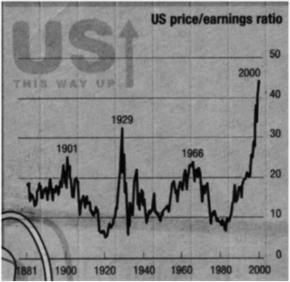
Fler diagram - more charts - click
here - klicka här
Growing too fast for comfort
A rapid
rise in productivity has raised the US growth rate but brought with it an
unsustainable level of demand
Martin Wolf, FT, 4 Apr 2000
Something remarkable is happening in the US economy. Yet while
everyone agrees on this, people disagree on what that something is. To some it
is a bright "new economy". To others it is the bubble to end all bubbles.
Yet these views are not as opposed as they may seem to be. It is
perfectly possible for genuine improvements in underlying economic performance
to generate a destabilising asset-price driven surge in demand. It is not only
possible, but probable, as Alan Greenspan has been stressing.
The chairman of the Federal Reserve explained how he sees underlying US
performance as follows, in a speech delivered on March 6. "In the last few
years, it has become increasingly clear that this business cycle differs in a
very profound way from the many other cycles that have characterised
post-second world war America. Not only has the expansion achieved record
length, but it has done so with economic growth far stronger than expected.
Most remarkably, inflation has remained largely subdued. A key factor behind
this extremely favourable performance has been the resurgence in productivity
growth."
For close to a quarter of a century, economists have struggled to
understand the phenomenon described by Robert Solow, the Nobel laureate from
the Massachusetts Institute of Technology, who asserted that "you can see the
computer age everywhere but in the productivity statistics".
Now it can even be seen there. An unpublished paper by Stephen Oliner
and Daniel Sichel, economists at the Federal Reserve in Washington DC,
concludes that "the use of information technology and the production of
computers accounted for about two-thirds of the one percentage point step-up in
productivity growth between the first and second halves of the 1990s".*
Their analysis uses a standard growth-accounting framework, in which
increases in labour productivity reflect a rising ratio of capital to labour
and overall technical progress, which is known as "multi-factor productivity"
(MFP). The annual growth of labour productivity in the non-farm business
sector, they argue, jumped from 1.61 per cent between 1991 and 1995 to 2.67 per
cent between 1996 and 1999. Almost half of this increase (0.46 percentage
points of the total rise of 1.06 percentage points) is due to increased
availability of information technology; and roughly a third (0.35 percentage
points) is due to technical progress in the production of computers and
semiconductors.
Why has it taken so long for this technological revolution to show up in
the productivity numbers? Jeremy Greenwood of the University of Rochester, New
York argues that this should be no surprise. This is exactly what happened
during the first and second industrial revolutions in the UK in the late 18th
century and the US in the late 19th century.** Then too, the initial impact was
an apparent reduction in productivity growth, as costs were incurred in
understanding and developing the new technologies. Then too, there was an
increase in inequality caused by the scarcity of people competent with the new
technologies.
This phenomenon of slow adaptation and diffusion would help explain the
second striking feature of today's changes: the absence of any improvement in
productivity growth outside the leading country. Labour productivity in Japan,
Germany and the UK is forecast by Goldman Sachs to grow even more slowly
between 1995 and 2000 than between 1977 and 1995 (see chart). It is expected to
grow only marginally faster in France. But, as before, the opportunity to catch
up remains open to the laggards, provided they make the necessary adaptations
to policy and business behaviour.
Yet before accepting that the jump in US productivity growth is both big
and durable, it is useful to go back to the work of Robert Gordon of
Northwestern University cited in my column on the new economy of August 4,
1999. Prof Gordon concluded that the underlying improvement in productivity
growth between the two halves of the 1990s was only 0.3 percentage points, all
of which was explained by accelerating productivity rises in computer
manufacturing.
According to Mr Oliner and Mr Sichel, new data available to the end of
1999 raise the increase in underlying productivity growth to 0.6 percentage
points. The chief reason for the remaining difference between Professor Gordon
and the Federal Reserve paper is that the former ascribes much of the recent
productivity rise to the cyclical surge in growth. The authors of the Federal
Reserve paper omit the cycle on the grounds "that separating cycle from trend
is difficult, particularly in the midst of an expansion".
This is true enough. But it also ignores a possibly crucial distortion.
From 1996 to 1999, the US economy grew at an annual average rate of 4.1 per
cent. Over the same period, real domestic demand rose at an astonishing annual
average rate of 5.3 per cent. Making this unsustainable combination possible
were the twin safety valves of falling unemployment and a growing current
account deficit: the unemployment rate fell by 11/2 percentage points from the
end of 1995, while the deficit grew by more than 2 per cent of GDP between 1995
and 1999.
Mr Greenspan ascribes this disturbing surge in demand to the
productivity improvement. In his March 6 speech, he argued that "the pick-up in
productivity tends to create even greater increases in aggregate demand than in
potential aggregate supply" - the transmission mechanism being rising asset
prices. The chart, taken from a new book by Robert Shiller of Yale University,
demonstrates that the market values corporate earnings more highly than at any
time since 1880.*** And, notes the Fed chairman: "The evidence suggests that
perhaps three to four cents out of every additional dollar of stock market
wealth eventually is reflected in increased consumer purchases."
The resulting unsustainable surge in demand does not only affect
monetary policy. It must also qualify any assessment of productivity growth.
Since 1995, productivity has grown even faster than before the sudden growth
collapse that followed the first oil shock, in 1973. But how durably it has
risen cannot be known until the unsustainable demand it has helped cause is
back under control.
* The Resurgence of Growth in the Late 1990s: is Information
Technology the Story? March, 2000.
** The Third Industrial
Revolution, Federal Reserve Bank of Cleveland Economic Review, 2nd quarter,
1999
*** Irrational Exuberance, Princeton University Press, 2000.
Jfr Carl Bildt samma
vecka
More
by Martin Wolf
First a Japan Bubble, Now an America Bubble
International
Herald Tribunde, April 3, 2000
By Sebastian Mallaby The
Washington Post
- Back in the 1980s, when Japan's economy was riding high, foreign
correspondents had a wonderful time deriding its excesses. Grandmothers were
trading market tips in tea salons. Young women seemed permanently affixed to
French designer handbags. Salarymen toiled night and day, then recovered by
inhaling condensed oxygen and consuming gold leaf with their sushi.
Finally Japan's bubble burst, and in retrospect the meaning of these
signs was clear. A society that had taken to swallowing gold leaf was bound to
be swallowing its pride soon after.
Well, a decade later, oxygen bars have arrived in New York and
Hollywood. And Uncle Sam's Casino in Cripple Creek, Colorado, offers oxygen
hits in eight delicious flavors, peppermint and tangerine among them. Americans
are not eating gold leaf, but some are wearing suits with gold woven into the
pinstripes. For those without $14,000 to spare, ties with 18-karat gold thread
can be had for a mere $260
Or consider household pets in bubble-era America. The Kennel Club in Los
Angeles offers its canine guests theme-decorated cottages complete with TV and
VCR, not to mention workouts to balance the chicken teriyaki on the menu.
Japan's firms drove the salarymen like slaves, then made it up to them
with weekend retreats, golf club memberships and other attempts to secure
loyalty. Now the corporate campuses of America's computer firms offer
everything from exercise to entertainment. Texas Instruments is even willing to
arrange a mechanic to repair an employee's vehicle.
In the four years leading up to the end of 1989, Tokyo's stock market
index rose by an average of 29 percent a year. From 1995 to 1999, the S&P
500 grew at an annual rate of 26 percent.
Western analysts blanched when Nippon Telegraph and Telephone shares
were floated on the Tokyo stock market in 1987 at a price-earnings ratio of
250. After Palm Pilot floated recently, its share price quickly rose to more
than 1,000 times earnings.
Japan's boosters said stock prices were justified by the country's work
ethic, social cohesion, savings culture, managerial style, whatever. America's
boosters cite the country's entrepreneurial ethos, openness to change,
technological brilliance, whatever.
Japan was said to be conjuring unprecedented efficiencies from keiretsu,
or networks of firms. Americans are wild about networking, too. John Doerr,
Silicon Valley's venture capital king, has the nerve to use the Japanese term:
His Web site boasts that he has created America's very own keiretsu.
Japan's stock market boom produced corruption in grand style. America's
boom may be creating something of a dot-con economy. In a climate that values
born-yesterday firms at many times their revenues, the temptation to pump up
those revenues is often overwhelming - Web firms advertising with each other
and reporting the ad ''sales'' as income, or counting as income the sale of
goods produced by someone else, even though the Web firm is only getting a
commission.
As in Japan, the party will eventually go sour. But the Japanese
comparison suggests that the hangover will not be as great. Japan had a double
bubble, in the stock market and also in real estate, whereas American property
prices are out of control only in the frothiest patches of the New Economy.
In Japan, moreover, the financial authorities actually contributed to
the bubble. They encouraged investors to think that they would support the
market if it crashed. They connived at accounting tricks that fueled the
speculative frenzy. In America, Alan Greenspan's misgivings about giddy stocks
are widely publicized, and the Securities and Exchange Commission is getting
ready to clamp down on virtual accounting.
Japan's bust proved especially damaging because of the structure of the
country's financial system. Banks owned piles of shares, so the crash wiped out
much of their capital. They lent against the security of shares and property,
so the crash eliminated the banks' ability to recover loans. As a result, the
banks were left too weak to lend. The resulting credit drought lies behind
Japan's decade-long recession.
In America, banks are less exposed to the bubble. They are not major
owners of stock, and they tend not to rely on shares as collateral. They are
not, in any case, as important as banks are in Japan. American companies rely
less on loans than on venture capital and equity financing.
If the stock market crashes in America, the pain will be distributed via
mutual funds and day-trading accounts to millions of shareholders. It will
trigger personal bankruptcies, mortgage defaults and an end to the consumption
boom. But it will not create the prolonged malaise that comes when you cripple
the financial system.
End of the Boom?
Robert J. Samuelson
Washington Post,
March 28, 2000
We may have gotten a small foretaste last week of the endgame of the
Internet investment boom. The hallmark of any boom is unbridled confidence,
which conceals and condones practices that--in a less giddy climate--would seem
sloppy, unethical or illegal. The Internet has been so profitable for so many
that people instinctively confuse economic success with moral infallibility.
This can't last forever, if only because human nature isn't perfect--even the
human nature of the people behind the Internet and computer booms.
What happened last week provided a cautionary tale. Early Monday,
MicroStrategy--a prominent software company--announced that it was revising its
1999 financial results. Sales would drop roughly 25 percent from $205 million
to about $150 million. Profits would change from a reported 15 cents a share to
a loss of between 43 cents and 51 cents. The reaction was swift. On Monday,
MicroStrategy's stock plunged 62 percent, from $226.75 to $86.75.
Bombarded by shareholder suits, MicroStrategy will have ample
opportunity to explain its actions. No one can yet say whether it committed
fraud--or was the victim of overly conservative accounting rules. "I don't
think we made a mistake," says MicroStrategy chairman Michael Saylor. "The
technology has outstripped accounting guidelines." He says the company merely
booked revenues it had in hand and that auditors insisted be spread over the
life of software contracts. However the episode ends, it suggests that the
high-tech frenzy has created an ethical quagmire.
There are huge pressures to project optimism--and prop up stock prices.
The line between what people genuinely believe and what serves their economic
interests has blurred. Perhaps some people can no longer see the line.
Stretching accounting rules (if that is what MicroStrategy did) is a flagrant
trespass. But others are more subtle, ambiguous and, possibly, pervasive.
Questions abound about underwriting practices, the independence of stock
"research," and the use of stock options.
Consider IPOs. These are the "initial public offerings" of stocks by
private companies selling their shares to general investors. The business is
hugely profitable for the underwriters--the brokerage houses that handle the
sales. According to Jay Ritter, a professor of finance at the University of
Florida, the underwriters typically get about 7 percent.
Now, suppose that Whoopee!.com has a $100 million IPO. Why would anyone
buy Whoopee!.com? Well, it helps if the Wall Street underwriter has a popular
stock analyst whose recommendation will push up the price. The best-known
Internet analyst is Mary Meeker of Morgan Stanley Dean Witter. In 1999, she
reportedly made about $15 million. (The figure, cited by the Wall Street
Journal, isn't denied by the firm.) She was paid so much in part because she
helped attract so much underwriting. In 1999 Morgan ranked second in IPO
underwritings at almost $14 billion, just behind Goldman Sachs ($14.5 billion),
reports Thomson Financial Securities Data.
"The conflicts of interest are immense," argues Ritter. Stock analysts
are increasingly "cheerleaders," he says. Their pay depends on the firm's
underwriting, which depends on enthusiastic research reports. Glum Internet
analysts aren't wanted. (Morgan Stanley Dean Witter has a different view:
Meeker does prescreen Internet companies that the firm underwrites; but this
review helps eliminate weaker candidates. "There are lots of companies that
would like to be underwritten by Morgan Stanley Dean Witter," says a
spokesman.)
Capitalism is about risk and reward. If there's risk, some people will
lose. Companies fail. Business plans flop. The dot-com phenomenon won't (and
shouldn't) be any different. That is not the issue. But to work, capitalism
requires reasonably reliable information. If it's skewed, then the risk-reward
equation becomes skewed.
Logic suggests that IPO underwriting standards have eroded--and they
have. Before Netscape's IPO in 1996, companies going public generally were
profitable, says finance professor Jeremy Siegel of the University of
Pennsylvania. Now, most run losses. One reason is that they're younger. In
1995, the average IPO firm was 8.1 years old. By 1999, it was 5.2 years.
Of course, this is a godsend for venture capitalists and company
founders, who can cash out more rapidly. It's also a bonanza for underwriters.
But some companies are--almost certainly--being taken public by promoters who
suspect that the firms will never be profitable. Sooner or later, some
investors will suffer huge loses. "Fleecing" is the word that springs to
mind.
Whose moral responsibility is this? Good question. There are others. For
example: Are stock options being overused? Critics believe they may hurt
shareholders by draining a company's wealth.
These are ethical--as well as business--questions. They are hardly being
asked. (An exception: an excellent recent cover story in Fortune magazine.) The
answers aren't easy. As Siegel notes, investors clamor for speculative stocks,
despite well-known dangers. "It's the gold rush, like the 1850s," he says.
"There's a tremendous amount of stock envy." Josh Lerner of the Harvard
Business School says there have been other IPO eras--say, biotech issues a
decade ago--when most companies were unprofitable. It's the nature of the
beast.
Perhaps. But qualifications may be irrelevant. While the boom proceeds,
almost everyone tolerates its excesses, including moral lapses. Winners
outnumber losers. Resentment is muted. But let the boom stumble, and the
climate might alter. Disappointment and losses mount. Some seem to have
profited at others' expense. Recriminations grow. The anger and outrage going
down may be as exaggerated as the indifference going up. Other deflated booms
have followed this cycle: the 1920s' U.S. stock boom; the S&L scandal of
the 1980s; Japan's recent "bubble economy."
In good times, people often do things that--with hindsight--look less
than upstanding. The MicroStrategy case may be misleading. Or it might
portend a larger reckoning.
Top of page
Europe's illusion about America's weakness
Gerard Baker, FT,
2000-03-28
In spite of the measures adopted by Europe's leaders this weekend aimed
at closing the competitive gap with the US economy, they remain ambivalent
towards America's runaway growth of the last few years.
On the one hand - as pledges to deregulate telecommunications,
liberalise financial markets and kick-start development of information
technology industries reveal there is a grudging but strengthening
acknowledgement that America has been doing something right. The rhetoric is
still couched in mildly disdainful terms that suggests Europe can improve on
the US model. European leaders believe it can achieve an elusive synthesis of
economic success and social cohesion by refusing to go down the "market
society" route of cheap labour and minimal social protection. Yet there is
clearly an acknowledgment that there are lessons to be learnt. In their less
public assessments of US
performance, some continental European officials make no attempt to
disguise their belief that US growth is one of the most egregious examples yet
of "casino capitalism". They believe the elevated demand growth has been fed
not by real growth in productive potential, but by a speculative binge, a
national loss of financial self-control.
Even as they seek to emulate the internet explosion, some of them view
dotcom market fever as an excess that will result in inevitable collapse. Let's
see what people make of this great American model when the downside of social
and economic flexibility leads to rapidly rising unemployment, impoverishment
and social unrest, they murmur.
This posture - reluctant admiration mediated by anticipated
schadenfreude - misses the most important economic lesson of recent
years on both sides of the Atlantic. Without action to make European labour
markets more like the US - the one thing politicians in Europe rule out -
attempts at engineering an innovative, entrepreneurial economic culture will
fail.
The emphasis in European criticism of the US on the social costs of a
freewheeling economic system equally misses the true Weakness in America's
economic resurgence. Ironically, it is also a weakness that European action to
make labour markets more flexible could help to address.
One of the abiding features of the US economy in the last 30 years has
been a structural balance of payments weakness that acts as a constraint on
domestic economic growth. The problem, first identified
by the economists H.S. Houthakker and S.P. Magee in 1970, is that the US is
much more willing to import from abroad than are other countries to import from
the US. In economists' language, income elasticity of demand for imports in the
US is higher than the rest of the world's income elasticity of demand for US
exports.
This means that if income in the US and the rest of the world are
growing at precisely the same rate, the US current account will steadily
deteriorate. And over time, this imbalance will need to be addressed by a
steady depreciation in the value of the US dollar, which is a source of
potential instability for the world economy.
Since this phenomenon was first identified, the fundamental imbalance it
implied has not mattered all that much. Throughout the 1970s, 1980s and the
first half of the 1990s, US demand grew at lower average annual rates than the
rest of the world's. The pronounced slowdown in US productivity growth that
began after 1973 ensured two decades of relatively sluggish income growth that
failed to match the European, still less Japanese, performance.
Though it was the cause of much economic soul-searching in the US it had
least had one benefit - the gap in income growth kept the US current account in
broad balance with the rest of the world. When the US enjoyed brief spurts of
growth above the global average - in the mid-1980s for example - the effect on
the current account was dramatic and negative. But these were followed by a
quick reversion to the longer-term pattern of sub-par US growth and either
current account balance or, at worst, small and manageable deficits.
But since 1995, the US has moved into an extended period of
siguificantly faster growth than the rest of the world. The downside of the
productivity acceleration is clearly evident in the rapid deterioration of the
current account - with the deficit now close to 4 per cent of GDP. If this is
indeed a new era of more rapid US growth - or even of merely US growth parity
with the rest of the world - the structural imbalance at the heart of American
demand will loom larger than at any time since it first emerged 30 years
ago.
America's critics say the imbalance represents a chronic US inability to
save enough to finance its investment. In strictly arithmetical terms, this is
of course true, since the savings-investment gap is simply the counterpart of
the current account. But a striking feature of the last few years is that the
gap has been caused not by dwindling savings but by accelerated investment.
In other words, the structural problem is a global one. The US economic
renaissance is simply providing the best opportunities for investors from
around the world. The long-term answer to this long-term problem lies not in
depressing US growth - though of course that is what the Federal Reserve is
forced to do in the short term - but in raising potential elsewhere.
Genuine action by European countries to cut their structural
unemployment by eliminating the penalties against hiring workers will raise
their domestic demand, increasing the attractiveness of European investment
opportunities. For good measure, it would help reduce potentially dangerous
global imbalances and foster that greater international economic stability they
talk so much about. That really would be something to celebrate.
Dangers of excess credit
Philip Coggan, FT, 27 Mar 2000
Everyone can agree that two things have been happening in the past five
years. The US stock market has been rising, and so has private sector debt.
However, not everyone would agree on how and if the two phenomena are
connected.
Have consumers been borrowing to put money in the stock market or has
the rise in the stock market meant that consumers have felt more comfortable
with a higher level of debt?
As usual it depends on which statistic you look at. Some would point to
the dangers implied by household margin debt, which is running at 3.5 per cent
of disposable income.
Others would cite the fall in the ratio of household debt to assets from
23.5 per cent at the end of 1994 to 21 per cent at the end of 1999. The latter
statistic clearly indicates the "wealth effect" of rising share prices on
household balance sheets.
Too great a focus on the consumer, however, might be missing the point.
According to Lombard Street Research,
private sector debt jumped from 168 per cent of GDP in 1994 to 205 per cent in
1999.
The biggest culprit was not the consumer but the financial sector, whose
debt jumped from 54 per cent of GDP to 80 per cent during the same period.
Where is all this credit going? It may well have helped fuel the bull
market for equities. After all, the availability of greater credit means
greater demand for equities at a time when supply has been falling.
But that still leaves a puzzle. Why has the rise in stock markets not
"washed through" to the rest of the economy? Excess credit cannot really stay
in the stock market. For every buyer of shares, there is a seller that ends up
with cash.
Only if the corporate sector was a net issuer of equity, could the stock
market really absorb excess credit. But as noted above, corporations have been
reducing the supply of equities through takeovers and share buy-backs.
One possible answer could be that the deflationary forces prevailing in
the past five years have been far more powerful than we thought.
Global competition and technological advance would have led to outright
deflation in the western economies were it not for credit growth. In short, the
money has washed through the stock market after all. And that money has
benefited one sector in particular.
Edgar van Tuyll, a strategist at
Pictet in Geneva,
has found a clear correlation between past episodes of high return sectors (the
Nifty Fifty in the early 1970s or Japanese property in the late 1980s) and
excess credit creation. And the model neatly fits the performance of the
internet sector in recent years.
Mr van Tuyll defines excess liquidity as a situation where credit grows
faster than the economy - as measured by the relationship between commercial
bank credit and GDP.
He believes that, after a period of lengthy economic growth, investors
desert the security of government bonds (pushing yields higher) and pile into
the high risk "flavour-of-the-month" sectors.
Higher bond yields create a problem for most parts of the stock market.
But investor enthusiasm often means that earnings expectations in the
fashionable sectors rise faster than the discount rate. The result is a very
narrow stock market in which only a few shares are going up.
The pattern reverses when interest rates rise fast enough to reduce the
growth of liquidity below that of the economy. Unfortunately, as Mr van Tuyll
remarks, this is not a precise art and it is far from clear how much rates have
to rise to put the brakes on. Certainly the US Federal Reserve's five increases
to date do not seem to have done the trick.
If this model is correct, there are big dangers ahead. If much US
private sector debt is (explicitly or implicitly) collateralised by equity
prices, then quite a small fall in share prices could have a big effect.
We have seen this before in 1994, when leveraged investors were forced
to bale out of bonds or in 1998 when they abandoned high-yield debt. Markets
can temporarily break down.
If the liquidity tap is turned off, there is little in the way of
fundamentals to help underpin some new economy shares (often no earnings or
dividends, sometimes not that much in the way of sales).
It will be a long hard drop to the bottom.
Top of page
New economy savaged by the same old bears
By Alfred H. Kingon - 3 Apr 2000
Spring is here, hibernation is over, and the bears are out again.
Warnings from Wall Street eminences such as Albert Wojnilower ("Some of us
believe that the speculation has gone so far that there is no easy or painless
way out") and perpetual harangues from Austrian School economists such as Kurt
Richebacher suffuse the air we breathe. Even Goldman Sachs' Abby Joseph Cohen,
whose optimism has always been tempered, suggested raising cash last week.
Making the biggest splash however, at least from a scholarly
perspective, is Robert J. Shiller, a distinguished economist from Yale
University. His book Irrational Exuberance is a wonderful history and
analysis of market booms and busts.
Three times in Wall Street's past 100 years, incredible speculative
binges have grown, and grown, and grown yet again only to give way to wicked
mornings after. There was 1901, most famously the 1929 crash and ensuing
Depression, and the long 17 years of equity stagnation starting in 1966.
Shiller and his fellow doomsayers believe that the current market boom,
in other words madness, has created a bubble - indeed the biggest bubble of
them all - and will be followed soon by at least long-term stagnation if not
outright devastation.
It is not that there is no real basis for optimism, the learned sceptics
agree, with technology breakthroughs fundamentally transforming our economy,
but the Wall Street hype has transformed rational optimism to market lunacy,
or, in polite and now overused terms, "irrational exuberance".
Heaping ample doses of blame on Wall Street analysts, strategists and
brokerages, as well as the purveyors of optimistic news such as Business Week,
CNBC and many others, including Alan Greenspan's Federal Reserve, the bear pack
accuses these folk of perpetuating a huge and unsustainable swindle on a
gullible investing public.
They have sold unsuspecting innocents on such falsehoods as "the new
economy", "in the long run stocks always go up", "inflation is dead", "the
traditional valuations can't be used any more". And, the one I like best -
conveniently used to explain away every bubble in history (including the
miracle of Japan in the excessive 1980s): "It's a new era".
The bears make convincing cases that valuations are ridiculously high,
volatility has reached dangerous levels, many marginal companies are selling at
levels way beyond blue sky, and a significant number of investors are, to say
the least, managing their personal finances imprudently.
Conceded, but, more importantly, so what?
The problem with these sceptics is that they don't answer the two most
important questions: when will the bubble burst and the bull die? And what will
follow?
Remember that the legendary Greenspan "irrational exuberance" speech was
made in late 1996, almost three and a half years back and, more significantly
for investors, some 5,000 Dow Jones points ago. For the most part, the same
bears were in full roar back then.
Indeed, some of the naysayers have been crying danger since the early
1990s and urgently urging equities avoidance. How would you like to have missed
the last five years or more by heeding their call?
What distresses investors most is the periodic "pockets" of suddenly,
steeply declining equity prices. These bouts of dizziness seemingly do the same
percentage damage in a fraction of the time that was needed in the past to
correct excesses.
Think of the reaction to the Asian crisis in the fall of 1997, and of
the profound fears stirred after the Russian default, along with the
near-demise of Long-Term Capital Management, the hedge fund replete with Nobel
laureates, in autumn 1998.
The bulls disappear, the bears give a roar or two, and famous market
technicians wring their hands on cable television and incite panic selling - a
sure sign that we are near the bottom.
So what if the bull goes on for another five years? It could happen. It
has always seemed to me that the first rule of investing and trading is to know
what you don't know.
Of course, the bull market will end. I said so myself on these pages
nearly five months ago. But neither the bears, nor the bulls, nor I know when
or what will trigger its demise.
It may or may not have anything directly to do with the economy; it may
be geopolitical or something seemingly far removed, but, whatever its cause, it
will be seen only in hindsight as the catalyst for fundamental mood change.
Yet remember, please, that the greatest gains in previous speculative
binges have occurred in their final years.
The second question, of course, is: what will happen after the markets
top? What if it is not the devastation of the 1930s but rather the stagnation
of the 1970s (or the "golden recession" of 1990s Japan)?
After all, it really is a new economy, it really is the information age,
there really is globalisation and the world's central bankers do indeed have
the benefit of the knowledge gleaned since the Depression.
During the so-called "sober seventies", bear market and all, there were
areas of equity success amid overall broad trading ranges. And certainly, if
warranted, a portion of assets could be shifted to fixed income of one sort or
another.
Devastation, of course, is possible. The contributing factors are there
for all to see: personal debt, public debt, leveraged derivatives, the Nick
Leesons of the world - I need not go on. But is it a probability, or merely a
possibility?
When have the known dangers caused anything more than needed adjustments
throughout financial history? It is the unknown, the wildness that lies in
wait. Or, to put it another way, when the excesses are so great and so
commonplace that no one pays them any heed: that is the time to watch out.
Yes, the bears' growling ought to be considered, but as before, the
ageing bull - albeit prone to the maladies of old age such as the distressing
corrections that come along - just may survive another year. Or two. Or three.
Or more.
Alfred H. Kingon is a former assistant secretary of the US Treasury,
secretary of the cabinet during the Reagan administration, and was US
ambassador to the European Union from 1987 to 89. He is principal of Kingon
International, an investment firm.
Irrational Exuberance
Robert J. Samuelson
Washington
Post, March 22, 2000
Alan Greenspan faces long odds in trying to nudge the stock market to
where he'd like it to go. The chairman of the Federal Reserve has argued that
the buoyant market--by making Americans feel so much wealthier--has triggered a
consumer spending spree that threatens inflationary wage pressures. To avoid
that, Greenspan's Fed has been raising short-term interest rates. Yesterday, it
increased the so-called Fed Funds rate to 6 percent. This was the fifth
increase since June 1999, when it was 4.75 percent.
The idea is to dampen spending and the ravenous appetite for stocks.
Anyone who thinks this will be easy should read "Irrational Exuberance," a new
book by Yale University economist Robert J. Shiller. Beyond arguing that the
present market is a "speculative bubble," Shiller contends that investor
psychology is so given to herd behavior that it's almost impossible to
manipulate or even influence. The market can "go through significant mispricing
lasting years or even decades."
We know this from history. In the 1920s, stocks more than tripled. By
1929, they were highly overvalued; the economy was about to collapse.
"Basically, a giant Ponzi scheme"
Fraud which has lost $50bn
Bernard Madoff has been charged. Among the banks which have been hit are Britain's HSBC and RBS, Spain's Santander and France's BNP Paribas
BBC 15/12 2008
Ponzi's Scheme by Mitchell Zuckoff
and other books about Manias, Bubbles & Market History
Where is the S-word (Stagflation)?
The high debt levels actually make deflation LESS likely, not more likely, because the current monetary system - the world's greatest-ever Ponzi scheme - could not survive a bout of genuine deflation.
Steve Saville, 6/2 2006
Irrational Exuberance
The Ponzi Paradigm
PAUL KRUGMAN
New York Times, March 12, 2000
Charles Ponzi wasn't the first to try it, but he has joined Dr. Bowdler
and Captain Boycott among those whose names will forever be terms of abuse. And
the classic scam that bears his name -- using money from new investors to pay
off old investors, creating the illusion of a successful business -- shows no
sign of losing its effectiveness.
Robert Shiller's terrific new book, "Irrational Exuberance," contains a
brief primer on how to concoct a Ponzi scheme. The first step is to come up
with a plausible-sounding but complicated profit opportunity, one that is
difficult to evaluate. Ponzi's purported business involved international
postage reply coupons. In a more recent example, Albanian scammers convinced
investors that they had a profitable money-laundering business.
From that point on it's all a matter of timing and publicity.
About
the book at Amazon
Big-Cap Tech Stocks Are a Sucker
Bet
Wall Street Journal, March 14, 2000
By Jeremy J. Siegel, a
professor of finance at the Wharton School and author of "Stocks for the Long
Run" (McGraw Hill, 1998).
James Grant: Climate control for the New
Economy
Financial Times 06-Mar-2000
The purest examples of New Economy businesses are those that, while not
actually generating a profit, command a mammoth stock market capitalisation.
Pacific Century CyberWorks - which, at the ripe old age of 10 months, has just
acquired Hong Kong Telecom - is a worthy example. Others include Akamai,
Amazon.com, Ariba, Buy.com, Level 3 Communications, Priceline.com, Red Hat, VA
Linux Systems and Verticalnet. The 10, a mere sample, have a combined stock
market capitalisation of Dollars 176bn.
Greenspan Hoped To Prick Stock Market `Bubble' In
'94
Wall Street Journal, March 2, 2000
Federal Reserve Chairman Alan Greenspan thought a "bubble" existed in
the U.S. stock market as far back as 1994, two years before his warning about
"irrational exuberance" among investors prompted a U.S. lawmaker to reprimand
him for causing a slump in global stock prices.
Transcripts released Wednesday of meetings of Fed policymakers in 1994
show that Greenspan expected to "prick the bubble in the equity markets" when
the Fed began raising interest rates for the first time in five years in
February 1994. The Fed raised its key federal funds rate a total 2.5 percentage
points that year to prevent the economy from overheating.
Greenspan, stung by the furor that followed his "irrational exuberance"
speech now refuses to say publicly whether U.S. stock prices are inflated. He
argues instead that "to spot a bubble in advance requires a judgment that
hundreds of thousands of informed investors have it all wrong" and that
"betting against markets is usually precarious at best."
The Dow Jones Industrial Average has climbed 57% since Dec. 5, 1996,
when Greenspan posed a rhetorical question in a
speech to the American Enterprise Institute: "How do we know when
irrational exuberance has unduly escalated asset values, which then become
subject to unexpected contractions as they have in Japan over the past
decades?" The index is about 260% higher than its level in February 1994, when
the Fed began its last aggressive campaign to cool the economy.
Back then, Greenspan had no trouble describing rising stock prices as
symptomatic of a "bubble." On March 24, a month after the Fed raised the funds
rate a quarter percentage point to 3.25%, Greenspan told his colleagues: "When
we moved on February 4th, I think our expectation was that we would prick the
bubble in the equity markets. What has in fact occurred is that...while the
stock market went down after our actions on Feb. 4, it went down quite
marginally on net over this period."
At the March 24, 1994, meeting, he called the 1987 U.S. stock market
crash "perhaps the only major stock market crash in history that actually was
beneficial to the economy." The crash, he said, "stripped out a high degree of
overheating and sort of got right to the edge of where the overheating got into
the muscle of the economy and stopped."
Top of page
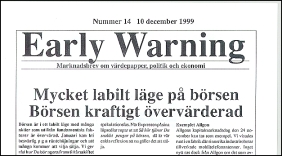
DI 2000-02-14 Stockholmsbörsen dyrast i Europa, utdrag
Med ett P/e-tal runt 40 är Stockholmsbörsen nu Europas
högst värderade.
I dag värderas Stockholmsbörsen till ett P/e-tal på
39,5. 40 gånger vinsten Det innebär att bolagen i OMX-index
värderas nästan 40 gånger högre än årets
förväntade vinst. Jämfört med andra viktiga europeiska
börser är det den absolut högsta värderingen.
Milano, Madrid och Frankfurt ligger runt 37 medan Europas största
börs, London, värderas till ett P/e-tal på blott 22,7.
Vad innebär då ett P/e-tal på 40? Anta att
avkastningskravet är 9 procent, vilket bara är 3 procent över
dagens räntenivå. En tolkning är då att börsen
är rätt värderad, förutsatt att företagsvinsterna i
all framtid kan stiga med minst 6,5 procent per år.
Detta är extremt mycket när inflationen är nära noll
och den långsiktiga tillväxten ligger på max 3 procent.
Stockholmsbörsen är alltså mycket högt
värderad både jämfört med andra börser och sett ur
ett ekonomiskt perspektiv.
Dagens börsvärdering är i termer av vinster mer än
dubbelt så hög som för bara lite drygt ett år sedan. I
slutet av 1998 låg P/e-talet på 17,3.
Jämfört med 1996 är dagens P/e-tal nästan tre
gånger så högt.
Stockholmsbörsen är även högt värderad om man
jämför med USA. Det breda S&P 500-indexet värderas till P/e
25,3, och där ingår också en hel del tillväxtaktier.
Panic in the bond markets - FT Lex 2000-02-05
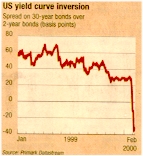
Panic in the bond markets; rumours of collapsing hedge funds and huge
losses on Wall Street. Hang on - following the near-collapse of Long-Term
Capital Management just 15 months ago, this was not supposed to happen
again.
Obviously, whatever temporary seif-restraint hedge
funds, banks and brokers exercised in the aftermath of that scare has
dissipated and greed has regained the upper hand. Over the past couple of
months, these folk have colleetively placed a massive bet on a steepening of
the US yield curve by huying eurodollars and short-dated notes and shorting
long dated bonds.
That gamble went disastrously wrong this week as the
Federal Reserve increased interest rates and the US Treasury announced a $30bn
debt retirement scheme, concentrated on the long end. That provoked a stampede
into 30-year Treasuries and led to a sharp inversion of the yleld curve.
Perhaps the Treasury deserves some criticism for not
spreading its buy-back across the maturity range. But the operation itself was
weil flagged. The hon's share of the blame must go to the traders. According to
the US Commodity Futures Trading Commission, "large speculators" (meaning hedge
funds) had built up an underlying $7bn short position on the 30-year bond, the
biggest since its records began.
Clearly the lesson of LTCM - that liquidity risk is just
as dangerous as any other financial risk - has been forgotten only too quickly.
The only comfort is that this time the pain seems to be
spread more evenly across Wall Street, so the fall-out should be more
containable.
Top of page
The Biggest Boom Ever
By Robert J. Samuelson, Washington Post, January 26, 2000
We are about to rewrite history. Unless a recession begins in the next
few days, this boom will soon become the longest in the American experience. In
February, it will have lasted 107 months. The current record is 106 months
between February 1961 and December 1969, according to the dating of business
cycles by the National Bureau of Economic Research. By and large, Americans are
behaving as if recessions are a relic of the past, even though everyone must
realize that the boom will end someday--and might end badly.
As with all records, people will celebrate and assert bragging rights.
President Clinton always claims credit and will almost certainly repeat the
claims in tomorrow's State of the Union. Alan Greenspan, chairman of the
Federal Reserve Board, is idolized for his presumed role. The murkier truth is
that the boom's causes remain obscure and, to the extent they can be
identified, reflect a protracted and largely nonpolitical process.
Low inflation has been the critical catalyst. In the past, rising
inflation has doomed expansions through higher interest rates, increased labor
costs and squeezed profits. Consumer spending, housing construction and
business investment all suffered. Yet, inflation now remains tame. By various
measures, it's running between 1 percent and slightly more than 2 percent a
year. This is lower than in 1990 (between 4 percent and 6 percent by the same
measures) and defies the conventional tendency of inflation to worsen as the
economy "heats up."
To explain tame inflation, I'd cite three factors:
* The Fed: Paul Volcker, chairman of the Fed between 1979 and 1987,
crushed inflationary expectations. In the 1960s and 1970s, these had become
ingrained. Companies raised prices because they expected customers would pay.
Workers expected pay raises to compensate for higher prices--and then some. The
Fed blessed the process by creating more money. Its permissive policies rested
on the prevailing--but faulty--theory that a bit of inflation aided economic
growth. By 1980 inflation had reached double digits. Volcker tightened money,
increased interest rates and caused a savage recession. In 1982 unemployment
neared 11 percent. Though brutal, the downturn stifled wage and price
increases. By 1983 inflation was 4 percent. President Reagan sanctioned
Volcker's policy by muting criticism. Since then, Greenspan's Fed has pursued
"price stability" and has raised interest rates (as in 1994) to prevent
inflation's upward creep. Presidents Bush and Clinton have emulated Reagan's
self-restraint.
* Better Management: Through the 1970s, corporate managers were rarely
fired. Their job tenure rivaled university professors'. In the 1980s, things
changed. Managers became vulnerable to job loss for many reasons: the
recession; foreign competition; deregulation in the airline, trucking and
communications industries; "hostile" corporate takeovers; the growth of new
discounters (Wal-Mart, Home Depot). Self-preservation made managers more
ruthless. They cut costs to raise profits. Old plants were shut. Layoffs and
"downsizings" became common. Again, the immediate consequences were often cruel
and (as with Volcker's recession) widely deplored. But the lasting effect was
less inflationary behavior.
* New Technology: As everyone knows, business investment in computers
and communications has exploded. The presumption is that these investments
enable companies to do things faster and cheaper--they raise "productivity."
Firms can minimize unneeded inventories or speed the processing of customer
orders. Higher productivity can be magical. If a company improves productivity
3 percent, it can raise wages 3 percent without increasing prices or
sacrificing profits. And productivity has improved. In recent years, it's
approached 3 percent a year, up from 1.6 percent in the 1980s.
We're enjoying the fruits of purged inflationary psychology. Luck may
also have helped. Economist John Makin of the American Enterprise Institute
notes that the Asian financial crisis--which first seemed to threaten
recession--may have prolonged the boom. It reduced inflationary pressures by
"cutting the [worldwide] demand for raw materials" and stimulating cheap
imports into the United States from debtor countries. It also prompted the Fed
to cut interest rates in late 1998, providing "a tremendous tail wind for the
U.S. economy and stock markets."
There are many plausible reasons that the boom won't last forever.
Productivity gains could prove temporary. Inflation might increase, with low
unemployment pushing up wages. The Fed is already sufficiently worried that
it's raising interest rates. Or the prevailing boom psychology might prove
fatal. Undeniably, Americans have gone on a spending spree. Since 1991, for
example, personal after-tax income has risen 47 percent (with no correction for
inflation); meanwhile, consumer spending has risen about 57 percent. The gap
between the two--financed by borrowing or selling stocks--totals almost $400
billion annually. Spending can't perpetually outstrip income.
One reason it has is the effusive stock market. Consumer confidence has
risen with consumer wealth, real or on paper. Much of the market's increase
reflects genuine economic gains (lower inflation, higher profits). But some
reflects sheer speculation.
In a recent report, analyst Steve Galbraith of Sanford C. Bernstein, an
investment house, confirmed that there's less long-term holding of stocks--and
more trading for instant profits. In 1999 the Nasdaq's turnover was 221
percent. This meant that the market's total number of shares was bought and
sold not just once during the year but more than twice. In 1990 turnover was
less than half that. "Of the 50 stocks with the highest returns [increases] on
the Nasdaq only 15 made money," writes Galbraith, and "the average turnover in
this group was 600 percent" (shares were bought and sold six times). On the New
York Stock Exchange, turnover has nearly doubled since 1990 to 79 percent. Not
surprisingly, margin debt--borrowing by investors to buy stocks--jumped 62
percent in 1999 to $229 billion.
So, the boom is making history, but its history isn't finished. We'd all
like it to glide along forever. Perhaps it has years to go. But it could be
sowing the seeds of its own destruction.
Top of page
Euphoria cannot last
Samuel Brittan, FT, January 20, 2000
It is unlikely that the new elite of central bankers and technical
advisers has learned how to avoid financial bubbles
The pendulum of fashionable financial opinion has swung from predictions
of doom round the time of the emerging market crisis little more than a year
ago to one of euphoria. Political leaders are more restrained than financial
market enthusiasts. But even Larry Summers, US Treasury secretary, has
delivered an upbeat message.
He is not only optimistic about the US, which will soon announce the
longest ever period of sustained economic expansion. He is also, by his
standards, relatively optimistic about other developed countries after years of
criticising them for not doing enough to sustain growth.
He envisages a soundly based upturn in Europe and at least some
improvement in Japan, even if the latter does not go far enough. It is just
when such optimism is in the air that one should keep a weather eye for
trouble.
The threat is the familiar one of an overvalued US stock market, which
finds a less extreme echo in the other bourses of the world. But there are two
subtleties that have escaped attention.
First, the financial bubble is not simply a sideshow in a booming US
real economy. It is an essential part of that boom. The private sector is
running an unprecedented financial deficit, which can only be maintained
because the soaring value of financial assets - and to a lesser extent real
estate - provide the impression of ever increasing wealth. Should that change,
the proverbial hard landing would not be far away.
Second, it is possible to say in the case of most economic threats
whether the potential problem is one of inflation or recession. But when the
threat comes from financial markets, the problem is twofold; first an
unsustainable inflationary boom, which is then followed by a bust.
Financial bubbles have been a feature of capitalism from the beginning
and it is unlikely that the new elite of central bankers, advised by
econometricians, has learned how to eliminate them.
The interesting question is how stretched the bubble is, and what the
effects are likely to be when it bursts.
An analyst at Phillips & Drew, Alistair McGiven, has made an attempt
to quantify the degree of Wall Street overvaluation. By traditional measures
this is extreme.
The dividend yield on the S&P 500 is much lower than at any time
since 1910. So is the earnings yield, with the exception of the depression year
1932, when presumably earnings collapsed even faster than equity prices.
The novel feature is his attempt to adjust for forces in the new economy
”that may plausibly influence fair values and so justify current market
levels”. He does so by adjusting these yields for more optimistic market
expectations about inflation, a lower equity risk premium and faster trend
output growth. He maintains that adjusted measures have been able to predict
the market except for the last, fabulous couple of years. On the basis of these
adjusted earnings and dividend yields, he estimates the US stock market is
still about 50 per cent above fair value.
What I find fascinating is that Neil Williams, the global strategist of
Goldman Sachs, which has hitherto taken a more optimistic view, is now
beginning to issue warning noises. His analysis suggests that the global equity
market looks expensive relative to past levels ”but not excessively
so”, if one excludes the information technology sector. In statistical
terms, the valuation of the market is about one standard deviation
”richer” than the recent average.
Turning to IT valuations, he admits that these look very expensive on
any standard measure, but estimates that future earnings growth implied by
current valuations are ”not far out of line on what technology has
achieved in the last five to 10 years”.
Maybe. But when he adds up the earnings growth rate necessary for both
the IT and non-IT sectors to offer ”a decent equity risk premium”, he
finds that the ”required growth rate in market earnings comfortably
exceeds the likely growth rate of the wider economy”. Although he remains
”neutrally weighted” towards stocks, he adds that they are
nevertheless ”vulnerable to unpleasant surprises on either the earnings or
the interest rate fronts”. Or as I would summarise it, the risks are on
the downside.
Coming to aspects where I feel more at home, the Goldman Sachs central
simulation suggests that the share of global GDP taken by profits would have to
rise to 19 per cent within 10 years to justify current valuations - a level
unknown for a quarter of a century.
Supposing we look back still further, what do we find? For the US alone,
the share of profits in GDP was higher for a period in the mid 1960s than it is
today. But both the world and US economies are far more competitive, and there
are more pressures on profit margins, than 30 or 40 years ago. So it is
difficult to see a sustainable increase to anything like these levels. Indeed,
the share of domestic non-financial profits has been gradually declining
recently.
Top of page
From The Wall Street Journal 2000-01-21
Happily tallying up your profits on the stock of Microsoft and Intel?
They're nothing compared with what Microsoft and Intel are earning on their
stock investments.
The companies' profits from investments-which are entirely separate from
their operating income-are eye-popping: Intel recently booked $327 million
(E323 million) in quarterly earnings from sales of stock it owns.
Microsoft, in its latest quarterly report, had $773 million in profits from
selling such investments.
It isn't just American technology companies that are making lots of
money in the stock market: General Electric Co. and Delta Air Lines, among
others, are making significant investments in other companies, often
venture-stage enterprises, then sometimes realizing nice gains when the stocks
of those companies climb. To the extent the stocks are sold and the gains
realized, they flow to the companies' bottom lines.
While supercharging the profits of some big U.S. companies, these
stock-sale profits raise an interesting - and to some a question. Are stock
prices giving a significant boost to fits that are fueling the euhoric stock
market? Or, put another way, stocks to some extent feeding on themselves rather
than on real growth in their businesses?
That is the worry of some market watchers who analyze company earnings.
The contribution these investments make some companies' earnings may be
difficult to repeat, they note, and may mask be quality of the underlying
business. And if the stock market were to correct sharply and the market for
hot IPOs cool off, many of those gains would dry lip or perhaps even turn to
losses.
The US example
FT-leader, January 4, 2000
As the US economy speeds into the New Year in a blaze of
self-congratulatory euphoria, the rest of the world seems unable to make up its
mind whether to look on in admiration or alarm.
Reform-minded politicians and economists in Europe and Asia hold up US
economic success as a model for change in their own countries. The virtues of
flexible labour markets, fleet-footed capital markets and a low-tax,
deregulated business climate, point the way ahead for their own economic
renaissance, they argue.
Critics reject the notion that there is anything to be learned from this
transitory US success. The strength of the expansion, they say, is down to
nothing more than speculative over-excess, built on unstable internet hype. It
will, they predict, end as all such periods have ended, in a spectacular crash
that will undermine once and for all the notion that the so-called US model
amounts to more than casino capitalism.
There is clearly a risk that speculative excess may undermine US
performance perhaps even early in the new century. Less than a decade ago it
was, after all, still fashionable to tout Japanese virtues of long-term
planning, stable banking relationships and lifetime employment as the way
ahead. What is most striking this time in the US is the context of its economic
performance - the exploitation of modern technologies that are raising
productivity and living standards. In a number of critical fields the US has
shown that its market-oriented flexibility is highly effective at managing
change and producing prosperity.
America is clearly able to operate its economy at a lower level of
unemployment than can most continental European economies. The jobs created are
not all hamburger-flipping minimum wage drudges. The fastest growing area of
job creation in the last few years has been in the high-tech sector. And while
inequalities have certainly widened, the last three years have produced the
first real gains in income for average and low earning Americans. Europeans
should look with respect at the ease with which US companies are able to hire
and dismiss workers. US success should also encourage them to continue to roll
back the multilayered social programmes that raise the cost of working.
The story of a bubble – and its aftermath
By
definition, a market bubble is not a very obvious affair. If the man on the
street begins to see what by all accounts is a bubbly market, he will act
rationally, or so the academics believe, and find a safer haven for his
savings. Which means that in principle, if markets were truly rational and
relied on tried and trusted measures of investment value, then bubbles could
never develop.
http://www.gold-eagle.com/gold_digest_99/joubert121399.html
Franzén varnar ras på
börsen
Finanstidningen 99-12-21
"En korrigering måste komma", säger Riksgäldens chef Det
är upplagt för ett ras på Stockholmsbörsen. Dagens
värderingar är orimliga, menar Riksgäldskontorets chef Thomas
Franzén. Han är kritisk till aktierådgivarna som inte
informerar om riskerna.
"Dagens höga aktiekurser gör att vi snart kan få se ett
stort ras på börsen", säger Franzén.
Han pekar på det orimliga i aktiekurser som förutsätter
att företagens vinster generellt skall öka avsevärt mycket mer
än den totala tillväxttakten de kommande åren.
"Gapet mellan förväntningarna på aktiekurserna och
tillväxten i världen kan inte bestå på sikt. Man
måste få en avkastning som närmar sig de nivåer som
ekonomin växer med", säger Franzén.
En blick i backspegeln ger vid handen att en rimlig avkastning på
en aktieplacering är cirka 5 till 7 procent realt, det vill säga
inflationen borträknad. Och det är dessa nivåer som marknaden
måste börja räkna med, inte de skyhöga nivåer som
idag finns inprisade i kurserna, framhåller Franzén.
Men han betonar att det inte är går att räkna med den
avkastningen från dagens kursnivåer. Efter de senaste årens
kraftiga uppgång kan det krävas ett markant börsfall för
att den långsiktiga avkastningen ska hamna på normal nivå.
"Det måste komma en korrigering på marknaden", säger
Franzén.
Han framhåller att många företag idag spår att
avkastningen på det egna kapitalet kan ligga kring 15 till 20 procent.
Det är inte hållbart i en värld där inflationen är
mycket lägre än tidigare. Även företagen måste
fundera på vad som är en rimlig avkastning på sikt, menar
Franzén.
P/e-talen, som visar vilka vinstförväntningar som finns
inbyggda i dagens aktiekurser är rekordhöga med historiska mått
mätt. Börsens P/e-tal var i december 1996 14.
Det ska jämföras med dagens dryga 30. Tittar man på
enskilda företag framgår det att p/e-talen skjutit i höjden,
och det gäller inte bara den upphaussade IT-sektorn.
Klädgiganten H&M:s p/e-tal uppgick till 26 i december för
tre år sedan. Idag ligger det på hela 61. Även folkaktierna
Nokia och Ericsson uppvisar liknande utveckling.
"Många företag är rädda för att diskutera
dagens avkastningskrav", säger Franzén och framhåller att det
är dags att ta bladet från munnen. Även aktierådgivarna
bör ta ett större ansvar, anser han:
"Jag tycker inte att aktierådgivarna, på ett
seriöst sätt, informerar om alla de risker som är
förknippade med att placera på börsen idag."
Blir många placerare besvikna och misstänksamma mot marknaden
kan svängningarna bli kraftiga och utvecklingen sämre de kommande
åren.
Därför att det viktigt, menar Franzén, att
aktierådgivarna talar om för placerarna att vi kan stå
inför ett kraftigt fall och att de senaste årens utveckling inte
är långsiktigt hållbar.
Jfr SEBs råd till
småspararna
Klockan klämtar för börsen Affärsvärlden nr
49 1999
Det hände sig vid tiden före den stora finans- och
fastighetskrisen att från börsen utgick ett slags känsla att
alla företag borde ha fastigheter och finansverksamhet och att alla borde
äga dessa aktier... "Nya ekonomin", "nya konjunkturmönster" samt
"e-handel" - se där aktiemarknadens nya budord. Det är dessa
nyckelbegrepp som till stor del ligger bakom att många börsplacerare
i år har blivit rikare på den 50 procentiga uppgången.
E-handeln är lika het som bränd julglögg och
följaktligen värderar börsen alla e-handelssatsningar till
självklara vinster. Och enligt flera aktiebedömare slipper
företagen hädanefter ifrån triviala problem med upp- och
nedgångar i efterfrågan, ty i den "nya ekonomin" så
försvinner de traditionella konjunkturmönstren.
Självförtroendet på aktiemarknaden är på
topp. En stor del av värdetillväxten har kommit bara under de senaste
två månaderna. Aldrig tidigare har börsen varit så
högt värderad. Men för dem, som har hunnit med att se både
uppgångar och fall på den svenska börsen, ringer klockorna.
Och det är inte fråga om några vackert klingande juleklockor,
utan kraftiga varningsklockor.
Många är tecknen som pekar
på att börsen håller på att bli rejält
överhettad. Affärsvärlden har varit med i nästan hundra
år - vi började analysera aktier redan 1901. Vårt evangelium
inför denna millenniets sista jul blir därför något av en
hälsokur: Vi vill nämligen påminna om tongångarna
på börsen för tio år sedan.
1989 var börsen
osårbar - trodde många. Ett år senare hade den rasat med 30
procent. En fasansfull finanskris hade skakat om så gott som alla
börsbolag. Inte alla lyckades överleva på börsen de
kommande tio åren. Men här finns förstås också
något gott att lära.
En lärdom är att börsen inte
bara styrs av en eller ens ett fåtal faktorer - då var det finans,
nu är det internet. Året är 1989, och Stockholmsbörsen
står på topp. Bortsett från två år har
börsen stigit under hela 80-talet, med i snitt 25 procent per år.
Flera av börsbolagen värderas till all-time-high, något som
faktiskt oroar vissa bedömare. Under de sena höstmånaderna
vänder börsen också nedåt, och Affärsvärlden
konstaterar i ett av årtiondets sista nummer: "En tioårig
uppgång är bruten. Stockholmsbörsen är på väg
nedåt. Högvärderade bolag, sämre konjunkturutsikter och
nya möjligheter att köpa aktier utomlands - det talar för att
Stockholmsbörsen har passerat toppen."
Läs mer i veckans nummer
av Affärsvärldennr 49 1999
Top of page
US MARKETS: Ageing bull FT, Lex, December 20 1999
The US bull market of the past two decades has been driven by two broad
forces: a revival in corporate profitability, and the decline in inflation that
has allowed investors to attach higher valuations to that stream of profits.
The latter trend is substantially complete: inflation is close to zero and
valuations have shifted from cheap to expensive. That leaves earnings growth as
the prime determinant of future stock market performance.
No worries here, say Wall Street's finest. US analysts expect S&P
500 earnings to jump a blistering 17 per cent in 2000, according to First Call
- the same as this year, which saw the rebound from the emerging markets
crisis.
Even the more sober, top-down strategists forecast growth of 10 per
cent. Investors' long-term expectations are scarier still. Assuming an
(optimistic) equity risk premium of just 2 per cent, research group BCA
calculates that earnings would have to rise by nearly 15 per cent a year for
the next 10 years and by 8 per cent a year over the next 30 to justify the
market's current heights.
Subtract inflation and that implies real growth of more than twice the
historical average.
It is hard to see how these targets can be reached, however fervently
one believes in new paradigms.
Granted, the US is in a long-run, technology-led upturn that is boosting
productivity and thus the economy's non-inflationary speed-limit - from say,
2½ per cent to 3½ per cent in real terms. That is a huge
achievement.
But, for the corporate sector at least, it is being balanced by a number
of other factors. The first is labour costs. While hourly wage growth is
subdued at 3½ per cent, once other forms of compensation are taken into
account overall labour costs are growing at closer to 5 per cent - exceeding
productivity growth of around 4 per cent. On top of that, many companies face
persistent downwards pressure on prices, from computers to detergents.
Corporate debt is rising and so are interest payments as a percentage of
profits, after having dropped sharply for most of this decade. Finally, all
that high-tech capital investment is pushing up depreciation charges.
National incomes data based on tax returns - a broader measure than the
earnings of S&P 500 companies alone and one less susceptible to accounting
shenanigans - suggest US corporate profit margins actually peaked in 1997 after
rising sharply for nearly a decade. Intuitively, that makes sense: over the
long haul, corporate profits simply cannot grow faster than the economy.
To be fair, the S&P 500 should grow more rapidly than the corporate
sector as a whole. Not only does it contain many of the country's biggest and
most dynamic companies. About a third of their earnings come from overseas,
where competitive US groups can win market share.
But it is unlikely that those factors will be enough to bridge the gap
between domestic economic growth of, say, 6 per cent (3½ per cent real
growth and 2½ per cent inflation) and investor expectations of many more
years of double digit earnings increases.
The US stock market remains vulnerable to disappointment.
Krisen är redan på väg -- en österrikisk blick
på den nya ekonomiska eran
av Mattias Svensson, kolumnist i
Metro
Vissa tror att inflationens och konjunkturnedgångarnas
tid är förbi i den nya ekonomiska eran. Men företrädare
för den österrikiska ekonomiska skolan varnar för inflation,
trots att priserna inte stiger. Problemet är att dagens högkonjunktur
drivs av en penningmängdsökning, som är skadlig för
långsiktig kapitalbildning och framtida välståndsskapande. En
lågkonjunktur måste komma så småningom men bör
utlösas så snart som möjligt, eftersom det är en
ekonomiskt sund anpassningprocess. Det österrikiska perspektivet visar att
dagens penningpolitik står fjärran från laissez-faire.
För marknadsanhängare finns all anledning att se kritiskt på
dagens penningpolitik, som trots vissa friheter väsentligen är en
form av statsinterventionism.
http://www.smedjan.com/frame/databas/1st.asp?nr=358
When Will the Bubble Burst?
by George Reisman
http://www.capitalism.net/stockmkt.htm
Gunnar Örn: USA kraschlandar inom ett
år
DI 1999-11-15
Varför ska världens rikaste land behöva låna pengar
av omvärlden? För att hålla köptrycket uppe på New
York-börsen?
Eller för att stötta dollarkursen? Även om det inte varit
den ursprungliga avsikten har effekten blivit just den, och alla bävar
för vad som ska hända när valutaströmmarna vänder.
USAs utlandsupplåning, alltså underskottet i den amerikanska
bytesbalansen, är snart uppe i 4 procent av BNP. Så stort har det
inte varit sedan 1987, strax före den beryktade börskraschen i
oktober samma år.
Världens finansmarknader väntar nervöst. Om underskottet
ska sluta växa måste USA antingen börja exportera mer eller
importera mindre. Men det är svårt att se hur den omställningen
ska ske utan att både börsen och dollarn rasar på kuppen.
Minskad importefterfrågan kräver att de amerikanska
hushållen börjar öka sitt sparande och drar ned på sin
konsumtion. Det skulle emellertid dämpa den ekonomiska tillväxten i
USA.
Ökad export kräver att de amerikanska företagen blir mer
konkurrenskraftiga. Om amerikanska produkter ska göras billigare i
omvärlden - och utländska varor dyrare på den amerikanska
hemmamarknaden - förutsätter det en svagare dollar än i dag.
Nu finns det en del experter som invänder att USAs underskott inte
behöver vara något problem, så länge det lånade
utländska kapitalet används till produktiva investeringar. Här
har de en klar poäng. Det slitna uttrycket "leva över sina
tillgångar" behöver inte vara tilllämpligt här.
Ekonomiprofessorn Gustav Cassel definierade det så här i
början av seklet: "Ett land lever inte över sina tillgångar
så länge underskottet i bytesbalansen är mindre än de
samlade nettoinvesteringarna i landet."
Tesen upprepades i mitten av 1970-talet när Sverige åter fick
stora underskott i bytesbalansen. Bland annat av SNS Konjunkturråd, som
då bestod av Villy Bergström, Sven Grassman, Erik Lundberg och
Göran Ohlin: "Så länge vi inte kommit i närheten av
gränsen för vår kreditvärdighet ökar kapitalimporten
våra möjligheter att sänka inflationstakten och öka den
inhemska produktionen och sysselsättningen", hette det i 1977 års
rapport.
Men allt beror på hur pengarna används. Sverige lyckades inte
hoppa över 1970-talets kriser med hjälp av lånade pengar.
Tvärtom, nyinvesteringarna krympte i takt med att bytesbalansunderskotten
ökade. Utvecklingen tvingade fram två kraftiga devalveringar under
1981 och 1982.
Tio år senare rasade investeringarna så kraftigt att de inte
ens räckte till att ersätta utslitet kapital, samtidigt som
bytesbalansunderskottet rakade i höjden. Även detta tvingade fram en
kraftig försvagning av den svenska kronan.
I slutändan beror allt på vilka investeringar som görs.
Grovt uttryckt kan man säga att Sverige för 100 år sedan
lånade till järnvägsbyggen och vattenkraft. 100 år senare
gick pengarna till lyxsanering av betongförorter à la
Brandbergen.
För att modifiera Cassels tes, kan man säga att ett land lever
över sina tillgångar när det lånar till konsumtion eller
improduktiva investeringar.
Dessutom, om alla länder finansierade sina nyinvesteringar med
lån, skulle det till slut inte finnas några sparare kvar att
låna av.
Under vissa omständigheter är det förmånligt
för ett land att låna (importera kapital), ibland att spara
(exportera kapital). Tumregeln är att mogna industriländer
tjänar på att exportera kapital till snabbväxande "emerging
markets", eller tillväxtmarknader.
Dagens amerikanska underskott är ungefär lika stort, mätt
som andel av BNP, som det svenska var 1982 respektive 1992.
Skillnaden är att de amerikanska nyinvesteringarna är
betydligt högre.
Men utvecklingen i USA de senaste åren påminner
ändå en hel del om 1987: med krympande inhemskt sparande, stark
dollar, växande underskott i utlandsaffärerna, stigande räntor
men ändå rekordhöga P/e-tal på börsen.
Betyder det att historien måste upprepa sig? För att få
svar på den frågan räcker det inte att bara titta på
makrostatistik över nettoinvesteringar och valutaströmmar. Man
måste gå på djupet och titta på hur
investeringskapitalet används på mikronivå. Kan amerikanska
bjässar som Intel, Microsoft och Cisco använda sina
fordringsägares pengar mer effektivt år 2000 än de kunde 1987?
Gör amerikanarna överlag intressantare och mer produktiva
investeringar än européer och japaner? Har
USA, som världsledande nation inom IT och Internet, rentav blivit
en "emerging market" som drar till sig investeringskapital från hela
världen?
Om så är fallet kan amerikanerna fortsätta låna av
omvärlden med gott samvete. Om inte, är den nuvarande utvecklingen
helt ohållbar. Då har vi en kombinerad börskrasch och
dollarkollaps att vänta inom en inte alltför avlägsen framtid.
.... mera optimistiska tongångar
Remarks
by Chairman Alan Greenspan Before a conference sponsored by the Office of the
Comptroller of the Currency, Washington, D.C. October 14, 1999
Top of page
FT-leader, Saturday October 16,1999
Greenspan and the markets
Alan Greenspan's warning on Thursday that banks should set aside
reserves in case of a market collapse was just the latest in a series of hints
the Fed chairman has given about overvaluation of equity markets. Yet, together
with some unfavourable figures for US producer prices, it was enough to give
the markets a serious jolt. Investors are getting jittery about the US
market.
The gradual upward creep of US bond yields over the past year was the
first sign that the markets were getting wind of a change in economic
conditions. Over the last few months, equity investors have also become more
cautious. Now both markets are uneasy about the prospect of further interest
rate rises.
The monetary policy decision that Mr Greenspan faces is fairly
straightforward. The two quarter-point interest rate rises over the summer have
not stemmed demand. Higher energy costs helped push producer prices up by 1.1
per cent in September, although much of this rise can be explained by one-off
factors in the tobacco and auto industries. Retail sales are showing no
slowdown. Unemployment looks set to fall. A further rise in interest rates
would be wise.
But in a country with a stock market which is by any conventional
measure overvalued, and with a large and rising current account deficit (the
consequence of an imbalance between private sector savings and investment), any
rise in interest rates has implications that go far beyond the control of
prices. The reaction to Mr Greenspan's speech shows once again how sensitive
the markets are to any hint of a change in monetary policy.
The US economy, for all its strength, is highly vulnerable to a market
setback. It relies on foreign investment to finance the gap between domestic
savings and investment. This has so far been forthcoming, because of the good
performance of US assets, and the sustained strength of the dollar.
But should either of these conditions change, the US may fall out of
favour. Already Japanese investors have been turning away from US Treasuries
because of the slide in the dollar against the yen.
Yesterday's falls in the stock market and the dollar could make
investors elsewhere more wary too. If the US were to experience a big market
crunch, interest rates on assets would have to rise to attract foreign funding
back into the country. This would have a contractionary effect. In addition,
the spending spree of US consumers, prompted as it was by the wealth effect of
higher equity prices, could come to an end. The Fed would of course react to
limit the damage, but nevertheless the correction could be very painful.
Yet it is hard to see how the Fed could have avoided this problem.
Monetary policymakers are ill-equipped to deal with imbalances in asset prices
or the exchange rate, because these react to interest rate movements in an
unpredictable way. Mr Greenspan has chosen to base monetary policy decisions on
domestic price conditions, rather than trying to manipulate the markets
directly. His efforts to keep the lid on asset prices have been limited to
cryptic remarks in speeches, with the result that his pronouncements have
attained an almost mythical status among investors.
The Bank of England faces similar difficulties, although on a much
smaller scale. The economy seems to be adapting fairly well to the sustained
strength of sterling, so much so that an interest rate rise has been necessary
to keep demand in check. Whilst most of the economy is now on an even keel,
though, the housing market has been accelerating. The Bank's dilemma is that a
rate rise large enough to control house prices would stifle the rest of the
economy.
Continental Europe shares the US phenomenon of rising bond yields, but
its position at an early stage of the economic cycle means that its policy
choices are very different.
High yields
Bond yields are high compared with inflation. This, together with the
appreciation in the euro over recent months, amounts to a de facto tightening
in monetary policy. Given that inflationary pressures are virtually absent
across most of the euro-zone, this means that the European Central Bank may not
have to move rates by as much as the markets are expecting. Bond yields may yet
ease again. And the wave of mergers and acquisitions taking place within the
euro-zone are likely to support European equity valuations for some time to
come.
Yesterday's market turbulence could turn out to be short-lived. Yet it
is a further reminder of the delicate task facing Alan Greenspan. Does he try
to deflate the markets gently, and risk triggering a crash - or does he say
nothing, and stand by and watch a bubble inflate?
From article WSJ, October 17, 1999
Despite Terrible Week for
Stocks, Advisers Urge Investor to Stay Put
"Nu gäller det att ha is i
magen"
The Dow Jones Industrial Average seems ready to hit 10000 again. But
this time there's no call for champagne and noisemakers of the sort that
greeted the stock market's first close above what the public called "Dow
10,000" in March. That's because this time, the milestone is poised to be hit
on the way down, not up.
But investment pros say there's no reason to panic. "If you're invested
for the long term, it's not going to be unusual to see stocks swing 20% off
historic averages," says David Bugen, an investment adviser in Chatham, N.J.
"It's painful, but unfortunately part of the price of investing in equities is
short-term volatility."
Another thing to keep in mind about the daily point moves: Because the
Dow is so high, it's a lot easier for it to move 100 or 200 points these days
than in the past. In 1987, a 500-point decline represented a fall of well over
20% -- a crash by any measure. But the equivalent percentage drop today would
require a fall of 2,000 points. In other words, don't get too excited by a
startling-looking decline of 200 points, or even 500 points. On their own, they
are fairly routine declines.
To put last week's market rout into perspective, Sam Stovall, senior
investment strategist at Standard & Poor's in New York, points out that
when Federal Reserve Chairman Alan Greenspan
first mentioned in 1996 that the market may be subject to "irrational
exuberance," the Dow was well under 7000.
"Even with the pullback to 10000," investors still have more than a 50%
gain, he says. "Even if we see a 20% pullback, it would still leave us at more
than 20% above where we were when Greenspan spoke those words." Mr. Stovall
adds, "If you had gotten nervous back then, you would have missed out on the
nice rise of the overall market."
Troubled societies often seek scapegoats, and in Bank of Japan Governor
Masaru Hayami the Japanese have got one made to order. Unless you've been
stranded on a desert island all summer, you probably know that the yen is surging, a phenomenon many believe could
pull the rug out from under Japan's nascent recovery.
Eric Lake, who runs his own commodity-trading-advisory and
money-management service (www.DowGuru.com), said three times this summer the
industrial average just touched and failed to break a trend line that he traced
back to Black Monday.
Most ominous of all, the average peaked on Aug. 25,
the same date it peaked in 1987. Noting that the market crashed 55 days after
its peak in 1929 and 1987, Mr. Lake said, "Oct. 19 is the target date: 55 days
out."
Eric Lake
about the 1929 Crash
Eric Lake
about the 1999 Crash
Top of page
A miraculous error
Martin Wolf, FT, September 29 1999
The
Federal Reserve inadvertently allowed unsustainable growth in the US, but this
helped to offset the collapse of demand elsewhere and avoid deep world
recession
More
by Martin Wolf
Lex, FT, September 9, 1999
The International Monetary Fund is hardly the first to question the
sky-high valuation of US stocks, but its arguments are no less convincing for
that. The fund agrees with the bulls that the near-tripling of US equities
since 1995 can probably be justified by lower interest rates - which boost
valuations by increasing the discounted value of future dividends.
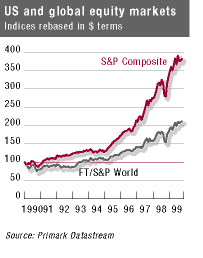
But now that US rates are rising again, how come shares are still going
up? This requires one of two things.
The first is an increase in real dividend growth, which is unlikely
given the maturity of the current economic expansion and the fact that
dividends are already growing at close to historic highs.
The other is a further decline in the equity risk premium, which is hard
to square with rising spreads in fixed-income markets.
The IMF notes other factors that might justify current prices, such as
robust productivity growth and greater popular participation in the stock
market. But it does not find them hugely convincing. And it warns, justifiably,
that any US correction would drag down international markets, whether they are
intrinsically overvalued or not.
But while the fund's logic is sound, its conclusions were yesterday
cheerfully dismissed by investors, just as they have ignored occasional gloomy
mutterings by Alan Greenspan, Federal Reserve chairman.
Just what might trigger a correction neither the IMF nor Mr Greenspan
seem prepared to reveal.
Top of page
A. Gary Shilling: author of "Deflation: How to Survive
and Thrive in the Coming Wave of Deflation" is president of A. Gary
Shilling & Company Inc. and an economist.
http://www.agaryshilling.com/
Göran Albinsohn Bruhner i SvD
99-09-07
Men när ni lyssnar till konjunktur skrytet från
Rosenbad bör ni betänka att en optimist som regel är
en otillräckligt informerad person.
Kraschvarning
Affärsvärlden nr 33 1999
Has Alan Greenspan joined the ranks of bubbleologists?
Bursting Mr. Greenspan's Bubble
By James K.
Glassman and Kevin A. Hassett.
Wall Street Journal,
September 3, 1999
Mr. Glassman and Mr. Hassett, fellows at the
American Enterprise Institute, are the authors of "Dow 36,000," just out from
Times Books.
Throwing Cold Water On Dow 36,000 View
Wall Street Journal, September 21, 1999
The latest sensation among investment books is a bestseller called "Dow
36,000," which argues that the Dow Jones Industrial Average should be worth
three times its current value.
Sound intriguing? Before you purchase the book - yet alone buy the
argument - take a moment to listen to
Jeremy Siegel, a
finance professor at the University of Pennsylvania's Wharton School.
Joined at the hip
James Grant in FT, August
16, 1999
Bond traders are displaying more signs of worry about the
state of the US economy than equity investors, but sooner or later credit
concerns will affect share prices
A time for wizardry
John Plender, FT,
August 21 1999
The great American public still has the spending bit between its
teeth. That much is clear from the surge in imports that made such a signal
contribution to this week's awful US trade figures.
U.S. Firms, Consumers Strain Under Debt
Despite a Boom
By GREGORY ZUCKERMAN
THE WALL STREET JOURNAL, 99-08-18
When the Bubble Bursts . . .
By
Edward Chancellor
author of "Devil Take the Hindmost: A History of
Financial Speculation"
(Farrar, Straus & Giroux, 1999).
Wall Street Journal, August 18, 1999
Tax Cuts: Bad for The Market
By Henry Kaufman
Washington Post, August 11,
1999
New York Stock Exchange member firms’ customer margin accounts,
which allow investors to borrow against a portion of their portfolios to
purchase additional stocks, surpassed $170 billion in April, reaching $178
billion in May before edging back by about $1 billion in June. That represents
a 25 percent increase versus December, 1998
CNBC
99-08-09
IMF Concludes Article IV Consultation with the United States On July
30, 1999
Although the performance of the U.S. economy had been
remarkable, Directors noted the contribution of possibly transitory factors and
cautioned that there were significant risks. Principal among these is the
danger of a substantial and abrupt decline in U.S. equity prices.
........ more
The real question facing the U.S. and
global economies whether the U.S. stock market bubble - and yes, it is a bubble
- will be deflated endogenously (that is, by natural market forces) or by the
Fed's ever-so-gently raising interest rates.
John H. Makin, American
Enterprise Institute
http://www.aei.org/eo/eo10752.htm
Decade of Greed II, by Robert J. Samuelson
Washington Post,July 14, 1999
An intriguing
paradox of the 1990s is that it isn't called a decade of greed. Only the 1980s
have acquired that stigma, even though the advance of individual wealth, the
explosion of personal fortunes and the obsession with money in this decade all
rival or exceed what happened in the last.
Greenspan also warned of a possible ``euphoric'' rise in stocks
fueling increased consumer spending.
``If new data suggest it is likely
that the pace of cost and price increases will be picking up, the Federal
Reserve will have to act promptly and forcefully so as to preclude imbalances
from arising that would only require a more disruptive adjustment later,'' he
said.
http://www.bog.frb.fed.us/boarddocs/hh/1999/July/Testimony.htm
Boom, boom America.
From
FT, Lex, July 28 1999
A Bull Turns Bearish And Becomes Outcast
Wall Street Journal, July 26, 1999
Bubbles do burst
Samuel Brittan, FT, July 22 1999
It's the growth, stupid. FT Lex, July 19,
1999
the market's price/earnings ratio is already at a sky-high 29
times for 1999
James Grant - Talking up the market
In its search for profits, Wall Street is playing the bull-market game
by highlighting positive news about companies. But even honesty and plain
speech are cyclical
When the Wall Street collapse does
arrive, just how bad will it be?
Tony Jackson, FT, 99-07-10
A severe bear market is something to fear
Philip Coggan wonders whether current stock market crashes
will plunge to past depths of financial dislocation - FT 98-09-03
This is not the time to be dreaming of 4 per cent
base rates. This is the time to be arranging a long-term fixed-interest
mortgage.
Martin Wolf on NAIRU, May, 1999
More
by Martin Wolf
Samuel Brittan on NAIRU and the prices on Wall
Street, May 1999
FT-leader, May 1, 1999, excerpts
US consumers to the
rescue
The meeting of G7 finance ministers and central bankers showed that the
world's economic leaders, rightly, remain concerned about the global outlook.
The big economies pledged to continue to support domestic demand, to bolster
world growth.
This will take little effort in the US. In the first three months of
this year the economy expanded by a remarkable 4.5 per cent, following growth
of 6 per cent in the previous three months. The IMF forecasts growth of 3.3
cent this year.
This may well turn out to be on the low side. With inflation remaining
weak and labour costs subdued, there is no sign that the Federal Reserve
intends to raise interest rates soon, despite such strong growth. If this
continues, equity valuations may begin to look less stretched.
It is the robust US that has kept the world economy turning. Last year,
US private sector spending accounted for almost half the increase in world
demand.
This year, Japan will suffer recession, and growth in the eurozone will
be weak - particularly in Germany and Italy. But such an uneven balance of
world demand brings substantial risks. US consumer demand, by sucking in
imports, has helped emerging markets to recover, and Japan to avoid collapse.
But the US current account deficit cannot continue to grow indefinitely
unless investors have an insatiable appetite for US assets.
Moreover, US consumers have financed their spending by running down the
savings rate to negative territory. This cannot continue indefinitely.
Policymakers must hope the path of adjustment for these imbalances is a
smooth one. But a sharp fall in the US stock market could upset this. So too
could a sharp fall in the dollar.
For the moment, a decline in the dollar remains unlikely. Japan's fall
may have reached bottom, but the economy will be stuck in recession this year.
With strong US growth and weak euro-zone activity, the dollar's strength
against the euro also looks fully justified.
Still, with the emerging markets crisis at last receding, the great
uncertainty now is whether Europe and Japan can recover, to take the strain off
the US consumer, before the US economy slows.
Alan Greenspan, Washington, May 6
The phenomenal performance
of the U.S. economy in recent years - largely a function of increasing
productivity - could end unless ``imbalances'' in the economy are addressed,
Federal Reserve Board Chairman Alan Greenspan said.
Greenspan also said the ``worst of the crisis abroad'' may be over, and
that many people think stock prices are overvalued. ``Of most concern is how
long this remarkable period of prosperity can be extended,'' Greenspan said in
the text of remarks to the Chicago Fed's annual Bank Structure Conference.
- There are imbalances in our expansion that, unless redressed, will
bring this long run of strong growth and low inflation to a close,'' he said. A
pickup in productivity "does seem to explain'' much of the favorable inflation
news in recent years. While it's led to excess capacity that is holding down
prices, the savings to companies are boosting corporate earnings. Perhaps too
high, he suggested.
The revaluation of business assets due to technological progress "has
induced a spectacular rise in equity prices that to many has reached well
beyond the justifiable,'' Greenspan said.
Remarks by Chairman Alan Greenspan
The
American economy in a world context
May 6, 1999
IMF, April 1999: Fears of a hard landing in the US
have been fuelled in part by the experiences of Japan, Finland, Sweden and the
UK following similar periods of falling net savings in the 1980s. To assess
the possible impact, the IMF examines a scenario in which the household saving
rate rises in response to a 30 per cent fall in share prices, with markets
overseas dropping by 15 per cent as a result.
Buffett: stocks 'dangerous'
Billionaire says downturn likely
after unprecedented rally of recent years March 3, 1999:
- Billionaire investor Warren Buffett believes the U.S. stock market has
seen virtually unprecedented increases in recent years and is in a "dangerous"
period that could see stock values drop sharply. Stocks have risen
"terrifically" over the past 15 years, driven higher by lower interest rates
and rising return on equity, Buffett told the ABC News "Nightline" program
Tuesday.
"After a while the very act of stocks going up starts drawing in other
people who get excited about the fact that their neighbor made some money ...
and that's when you get into the dangerous periods," he said.
Asked when the bubble would burst, Buffett said, "You never know. You
know that valuations are high, by historic standards. You know that the level
of speculation is high, by any historic standards, and you know that it doesn't
go on forever ... but you don't know when it ends."
Top of page
The world survived market toil
and trouble in 1998.
But beware, says Martin Wolf, the dangers are not
past
More
by Martin Wolf
Cracks in Wall Street - Samuel
Brittan in Financial Times (99-01)
Overvalued?
Stocks' Price Is Finally Right (99-01-12)
Not in 40 years has so much of the stock market's advance been so
concentrated in just a handful of stocks. In 1998, the Standard & Poor's
500-stock index advanced 26.7%. But the average stock in the index gained just
10.8%.
The difference results from the extraordinary gains of the largest
stocks, which have the biggest impact on the capitalization-weighted index. And
the largest stocks are, by and large, fast-growing companies for which
investors are paying ever higher price-to-earning ratios. Salomon Smith Barney
estimates that the 50 largest companies collectively returned 38% in 1998.
Greenspan's asset markets FT leader
98-12-19
The Economist December 1998 - Puncture ahead
US CONSUMERS: Spend, spend, spend - FT Lex
NOVEMBER 9 1998
FT leader 98-09-19 excerpts
The world's two largest economies
are now locked in a strangely symbiotic embrace. The US is the world's biggest
debtor and spender; Japan is the biggest creditor and saver. From these
diametrically opposed positions, the respective economies have nonetheless
reached a state where the effectiveness of monetary policy is subject to severe
constraints.
Japan is already close to a serious deflation, with the 10-year bond
yield falling this week to a scarcely believable 0.7 per cent. No one expects
the recent cut in Japanese overnight interest rates to 0.25 per cent to impart
much stimulus to the economy, though it will provide modest relief to the
troubled Japanese banking system. Monetisation - the modern version of the
printing press - by now looks imminent.
In the US, meantime, the collapse in the savings rate to 0.6 per cent of
disposable income in the second quarter, compared with its customary level in
the 1990s of between 4 and 6 per cent, is worrying. It means that interest rate
cuts may be of limited help in promoting further borrowing and spending,
especially when bankruptcies are running at record levels.
Capitalism is not in a global crisis. But there are difficult times
ahead - and not just for the emerging markets.
BBC 98-09-18:
A respected economic forecaster has warned that the world economy could
stall or even contract over the next 18 months as the financial crisis that has
hit Asia and Russia spreads throughout the world.
The Economist Intelligent Unit (EIU)
has issued one of its gloomiest ever reports on the outlook for economic
growth. Te EIU believes that, even if the financial crisis does not deteriorate
further, the world's economy is heading for a rough ride.
And there is a real danger that the global financial crisis could get
significantly worse, with problems in Asia and Russia spreading to Latin
America according to the research.
If that happens the world eonomy could grind to a halt or slip into
recession.
However the EIU does not believe that the economy will plunge into a
prolonged recession lasting several years as it did in the 1930s in the wake of
the Wall Street crash.
The EIU believes the key factor will be how the US Federal Reserve
reacts to the financial problems and whether or not it chooses to cut interest
rates.
Warren Buffett declined to offer an opinion on the stock
market's current valuation at a Berkshire stockholder meeting. But he did
disclose that Berkshire is holding $9 billion in cash.
Wall Street Journal 98-09-17
At the annual meeting of the Federal Reserve Bank of Kansas City in
Jackson Hole, Wyoming, over the weekend, some central bankers were privately
admitting that these are the worst global economic conditions they have seen in
their lifetime.
Thanks to the bull market, the measured wealth of American households
has doubled over the past three years. This has made consumers feel richer, and
as a result they have saved less and consumed more. In the second quarter of
this year America’s personal savings rate fell to a historic low of 0.6%,
with consumer spending jumping at an annual rate of 6%.
Rising share prices also made it cheaper for firms to raise equity
finance, so fuelling a surge in investment. The risk now is that this could all
go into reverse, as plunging share prices dent consumer and business
confidence. If the Dow Jones stays close to its current level of nearly 8,000,
then the impact on consumer spending may be small, as that still leaves the
market 25% higher than in December 1996.
But by such measures as price/earnings ratios or the yield gap, Wall
Street is still significantly overvalued — the more so since profit growth
this year seems to have flattened out.
Indeed, the real fear is that the new European Central Bank, anxious to
establish its credentials as guardian of the world’s second currency, the
euro, will be inclined to be too tough. Peripheral economies such as
Ireland’s and Spain’s have been showing signs of incipient inflation.
And the ECB is eager to inherit the fearsome reputation of the German
Bundesbank. Should the euro economies falter, there must be a risk that the ECB
will be too slow to respond by easing monetary policy.
First, until the early 1930s countries were on the gold
standard—under which their currencies were tied to gold. This restricted
their ability to ease monetary policy as economies went into recession after
the Wall Street crash of 1929.
Second, governments compounded their tight-money mistake with tight
fiscal policies, even in the depth of the depression. Rather than allowing
taxes to fall automatically as incomes declined, the Americans raised taxes in
1932 to balance the budget. Not only do governments have a better understanding
of macroeconomics today (Dennis, Feldt, Bildt, Wibble, Åsbrink och
Persson), but now that public spending takes a much bigger share of GDP, their
ability to stabilise demand is greater. Edited excerpts from
The Economist 98-09-04
What
Next? History Provides Conflicting Answers In October 1929, a two-day, 25
percent plunge in the stock market sparked the Great Depression; the Dow Jones
industrial average didn't match 1929 levels until the early 1950s. (Washington
Post)
More
by Martin Wolf
Top of page
Just Speculating November 10, 1996, NYT Late
Edition Byline: By John Rothchild
THE HIGH-RISK SOCIETY Peril and Promise in the New Economy. By Michael
J. Mandel. 227 pp. New York: Times Business/Random House. $25.
THE TROUBLE WITH PROSPERITY The Loss of Fear, the Rise of Speculation,
and the Risk to American Savings. By James Grant. 348 pp. New York: Times
Books/Random House. $30.
Professor Tim Congdon i Lombard Street Research Monthly Economic
Review, July 1988
excerpt
International financial commentators have become so obsessed with
Japan’s various failures that a very serious macroeconomic disequilibrium
now emerging in the USA has been almost unnoticed. A standard line has been
“the American economy will slow down when the full effect of the Asian
crisis comes through”. This is tantamount to saying that “the
American economy will slow down because the balance of payments is moving
heavily into the red”.
Indeed, the deficit on the current account of the USA’s balance of
payments in 1998 will be the largest that the world has ever seen. Hardly any
concern is being expressed by governments or in financial markets about the
medium-term implications of this development.
The scale of the deficit would be remarkable even if the USA were a
substantial lie creditor nation. But, in fact, foreign-owned assets in the USA
exceeded the USA’s foreign assets by over $1,300b. at the end of last
year.
The current arts account deficit in the first quarter (Q 1) was $47b.
and will undoubtedly increase, perhaps towards $60b., in Q2.
The current account deficit may be $230b. - $250b. in 1998 and a rather
higher figure of, say, $300b. in 1999 and 2000.
The USA’s negative position on its international investments
(“its net debt”) may by the end of 2000 be almost $2,OOOb., which
would be more than twice the value of its exports.
There is little question that the USA will also have a large and
widening deficit on investment income. (See pp. 8 - 9 of this Review.)
To prevent the external debt running out of control, exports will need to
grow faster than imports for an extended period. But this will require a
drastic wrench to the growth pattern enjoyed over the last six years. Net
exports were a negative influence on GDP in 20 of the 24 quarters to Q1
1998.
What form will this wrench take? Plainly, the growth of domestic demand
will have to run at a beneath-trend rate also for an extended period.
But how likely is that in late 1998 and early 1999 after three years of
high money supply growth, vast capital gains from the asset price bubble and an
extremely buoyant housing market? (Seep. 5, p. 7 and p. 12.) Also
helpful would be a lower dollar.
Sooner or later a fall in the dollar is inevitable, but it probably will
not happen in late 1998.
The favourable interest rate differential compared with other leading
currencies (apart from sterling) protects the dollar and will widen further
when the Federal Reserve tightens.
The resolution of the USA’s external disequilibria will begin to
become part of policy-makers’ agenda only next year and thereafter.
But the longer the deficit persists, the greater will be
foreigners’ accumulation of claims on the USA and the worse the eventual
problem of adjustment.
8th July, 1998
More of Tim Congdon
Återigen: USAs handelsunderskott rekordstort
Date:
Sun, 19 Jul 1998
From: Rolf Englund <englund@internetional.se>
CNN: The US trade deficit soared by 10% to a record $15.75bn in May, the
highest since the current monthly series began in 1992. The trade gap is
running at a record annual rate of $150bn, up almost 50% on last year's figure,
based on the first five months of the year. The figures came as a surprise to
analysts, who were expecting an improvement in the trade deficit after April's
record gap of $14.5bn.
Kommentar RE: Läsarna av Net Bulletin lär väl dock
ingalunda ha blivit förvånade. Det stora underskottet visar, menar
jag, att USA inte alls är inne i någon s k ny era - Clintoneran? -
utan har en vanlig överhettning, som Sverige hade i slutet av 1980-talet,
med full sysselsättning, goda statsfinanser, låg arbetslöshet
och stigande villapriser och aktiekurser.
När den amerikanska bubblan spricker, kommer den att spricka med
besked. Dollarn kommer att falla, som en växelkurs bör göra i
ett land med stort handelsunderskott, och alla direktörer i
Västeuropa som tror att dom är duktiga för att deras
företag går med vinst när dollarn står i åtta
kronor kommer att se lika förvånade som löjliga ut. Liksom
deras eftersägare.
Slutsats: Du som inte vill framstå som en löjlig
eftersägare bör således redan nu distansera Dig från den
fåniga uppfattningen om nya eror. Att byta fot är väl inte
så svårt för Dig? Sväng kappan och fortsätt vara
framgångsrik!
(Ursäkta sarkasmen - Den som inte känner sig träffad
är heller inte träffad - och tvärtom.)
Top of page
Barry Riley, Financial Times 1988-07-22
Dramatic shifts are occurring within the global economy.
A yawning trade chasm is opening up for the US, which experienced a
record goods and services deficit of $15.75bn for May and could be heading for
a total deficit of more than $200bn (£122bn) for 1998.
Economists are scratching their heads over the impact on the US economy
in the second quarter. On the one hand, domestic demand continues to race along
at between 5 per cent and 6 per cent. America is booming and no wonder when, as
J.P. Morgan's Philip Suttle points out, accruing capital gains on financial
assets are adding two-thirds to normal household incomes.
On the other hand, deduct the rocketing share of net imports and further
subtract a necessary inventory correction and you have a sharp GDP slowdown: a
drop from 5.4 per cent annualised in the first quarter to just 1 or 2 per cent.
One consequence of these distortions is a squeeze on profits,
particularly in manufacturing, as pricing power disappears; production stalls
(especially for export) with negative implications for productivity growth
while domestic costs edge higher.
Yet Wall Street could not care less, having gained yet another lease of
life in this geriatric bull market. The Standard & Poor's 500 Index has
raced ahead by 10 per cent since mid-June, and most indices have been hitting
new all-time highs (although the smaller capitalisation Russell 2000 Index has
not been invited to the party).
There is a clue in the surge of liquidity in the US in recent weeks. The
Federal Reserve feared any US monetary tightening could have ”outsized
effects”; on Asia, Alan Greenspan, Fed chairman, told the Senate Banking
Committee yesterday. According to CrossBorder Capital, a London consultancy
that monitors global liquidity, in an apparent policy reversal the Fed has been
opening wide the taps… CrossBorder says that free reserves of the US
banking system, after falling all year until June, have doubled in a few weeks.
Broad money growth, meanwhile, continues to be stimulative - at some 10 per
cent year-on-year. There seems to be a clear link with the renewed upturn on
Wall Street.
BIS-Bankens i Basel VD Juni 1988
However, the year has contained darker elements as well. The Japanese
economy has thus far failed to respond to repeated policy initiatives, and the
crisis among trading partners elsewhere in Asia raises the possibility of
mutually reinforcing weakness in the region as a whole.
The sharp decline in commodity and oil prices will place a heavy burden
of adjustment on a number of already fragile economies.
The buoyancy of stock markets and bond markets in industrial countries,
and the strength of capital inflows into non-Asian emerging markets, could in
themselves be described as good news. Yet the enthusiasm of financial markets
also raises another spectre: that it may not last, and that the economic
effects of such a change in sentiment might be difficult both to predict and to
manage.
The economic expansion in the industrial world is still being led by the
United States, where the economy has continued to grow rapidly under the
influence of strong domestic demand and healthy productivity gains.
Developments in the United Kingdom have mirrored the US experience in some
respects.
The economic and financial drama unfolding in Asia over the last year or
so has understandably puzzled and preoccupied both policy-makers and market
participants. The deterioration in the economic fortunes of many of the
affected economies has been extraordinary, particularly given the widespread
belief that their earlier successes were based on sound fundamentals.
Unfortunately, these earlier successes seem to have contributed as well to a
climate of excessive optimism among both borrowers and lenders. As a result,
inadequate attention was paid to the rapid build-up of domestic and foreign
debt by domestic corporations.
Also ignored was the significant threat this would pose to the stability
of local banking systems should heavily managed exchange rate regimes come
under pressure. Once difficulties emerged, a sharp and simultaneous
reassessment of exposures to liquidity risk, market risk and credit risk then
turned what might otherwise have been an orderly adjustment into a prolonged
crisis.
We should not forget that a counterpart to strong growth with low
inflation in both the United States and the United Kingdom has been a firming
of the exchange rate and a widening of the trade deficits.
So far such deficits have been easily financed. However, a greater
degree of hesitancy on the part of foreign investors could alter this situation
and, in turn, the role played by the exchange rate in keeping domestic
inflation subdued. Monetary policy might then need to take more of a leading
role in maintaining price stability, and this would be all the more likely were
the recent downward trend in commodity prices to reverse.
A closely related issue is the current buoyancy of financial asset
prices in many industrial countries, amid associated concerns that investors
everywhere may be underestimating the riskiness of certain kinds of financial
investment.
In setting monetary policy, the implications of rising asset prices for
spending and inflation must obviously be taken into account.
The experience of Japan, the Nordic countries and the United States in
the early 1990s, and other parts of Asia more recently, indicates that asset
price bubbles fuelled by bank credit can cause lasting damage to the banking
system and to the broader economy.
While property prices figured prominently in earlier crises, and such
prices have only just begun to turn up in many industrial countries, the
current rapid expansion of monetary aggregates in a number of countries needs
to be closely monitored.
More on http://www.bis.org/press/p980608b.htm
Top of page
Financial Times: ASIAN CRISIS: HK slowdown 98-05-29
There were good reasons to think that Hong Kong would be insulated from
the Asian crisis.... But it could not escape some fallout. The main impact has
come through higher interest rates, which led to large falls in the asset
markets - property prices have fallen 30-40 per cent since their peak last
October. Retail sales have slumped, as has tourism, falling by 25 per cent
year-on-year as Asian tourists stayed at home.
The key concern is how far house prices can fall. With Hong Kong's banks
heavily exposed to the property market, a collapse in prices could threaten the
stability of the financial system, a pillar of the economy.
So far there is no reason for panic. Most of the fall in property prices
is the correction of a bubble. Prices had risen by more than 40 per cent
between the third quarter of 1996 and their peak in 1997, causing serious
concerns about Hong Kong's competitiveness. An adjustment had to come at some
point. Moreover, the limits on mortgage lending in Hong Kong are very strict,
giving the financial system some protection.
The government must tread a fine line. It must prevent the slump from
getting too deep but should not overreact and resort to crude interventionism.
Its reaction has so far been sensible. It has been robust in its defence of the
currency link. And it is providing the economy with a fiscal stimulus through a
combination of tax cuts and infrastructure projects. (Kommentar RE: Är det
inte misstänkt likt s k förlegad keynesianism?)
Housing policy is crucial. Hong Kong's new government last year
announced a programme of accelerated land release and homebuilding. But
implementing this now could send prices into freefall. Hong Kong's chief
executive, C.H. Tung, gave a welcome indication in a speech this week that he
was prepared to relax the policy. Most important, Hong Kong must avoid panic
measures. Trying to hold interest rates down artificially or pumping money into
unnecessary infrastructure will only worry the markets and lead to
inefficiencies.
"Börsen är ett chickenrace"
Gerhard
Stenberg, chef för Handelsbankens kapitalförvaltning i Göteborg,
hoppar av i protest mot börshysterin efter nästan 30 års arbete
i aktiemarknaden. Han tror att en börskrasch är oundviklig och vill
inte ta ansvar för att rekommendera placeringar i aktier för
närvarande. "Kurserna är på tok för höga och
måste ned med minst 30 procent. Vi står
inför ett kraftigt fall i börskurserna i hela världen. Det
kommer att bli en rejäl smäll".
Let's Burst the 'Bubble' Theory - ALAN REYNOLDS in
WSJ 98-05-14
1998-05-15 Nils Lundgren varnar för bubbla på
börsen
DI - Gunnar Örn
Risken är mycket hög för en kraftig rekyl på
världens aktiemarknader, men när bubblan väl spricker
behöver det inte påverka världsekonomin mer än vad 1987
års börsras gjorde.
"Tror man att börsen ska fortsätta stiga i snabb takt utan
någon rekyl, då tror man också på fortsatt sjunkande
räntor, stigande fastighetspriser och ökad inflation i
tillgångspriser", sa Nils Lundgren. "Men om priserna fortsätter att
stiga på aktier och fastigheter slår det förr eller senare
över på konsumentpriserna, och då kommer centralbankerna att
börja strama åt med räntehöjningar", varnade han.
Nils Lundgren medgav att det finns goda argument för en högre
värdering av aktier i dag än för några år sedan.
Inflationen och räntorna har kommit ned. Dessutom har de stora
fyrtiotalskullarna kommit upp i 50-års-åldern. Med barnen utflugna
och villalånen betalda kan de pensionsspara mycket. De har enorma summor
som måste placeras och med dagens låga räntor är aktier
det attraktivaste alternativet.
"Men vad jag vet har det aldrig hänt att börsen stigit till en
ny nivå och parkerat där utan att det först varit en
överdriven kursuppgång följd av en kraftig rekyl", sa Nils
Lundgren.
Merita Nordbanken tror dock inte att en eventuell rekyl får
några större realekonomiska effekter. Det blir 1987 års
börs-krasch i repris snarare än 1929 års. Den enda riktigt
allvarliga följden vore om Tokyobörsen drogs ned så kraftigt
att den japanska finanssektorn kollapsar - det skulle få
oöverskådliga konsekvenser för världsekonomin.
Utdrag ur The Ecomists ledare 98-05-11
Some
experts believe the central bank is actually more worried about the surge in
stock prices than any underlying inflation. "The stock market is too
speculative, exuberant and overvalued and there's the risk that it could lead
to financial asset inflation eventually causing real sector inflation," said
Hugh Johnson, chief investment officer for First Albany Corp.
Utdrag ur The Ecomists ledare 98-04-18
Keeping the good times rolling Barry Riley
98-04-08 i FT
Ur Affärsvärlden 98-03-11 En
jättebubbla båller på att pumpas upp på världens
aktiemarknader.
Vad skall man köpa? Real-ränte-papper som
t. ex. Handelsbankens Index-aktie, är mitt råd, som alltid.
Varning: jag har sådana själv, sedan lååång
tid.
Top of page
Different Times, but the 1990s Do Resemble
the 1920s
By Robert J. Samuelson The Washington Post
International
Herald Tribune, Thursday, April 23, 1998
Americans know that today's economic boom will someday end, because
all booms do. Yet faith in its immortality seems to grow almost daily. You see
it in the stock market, confidence indexes and tight labor markets. Has there
ever been anything like it? Well, how about the 1920s? The suggestion seems
anti-social. It raises the specter of another Great Depression. (Unemployment
averaged 18 percent in the 1930s.)
This need not be, of course. Peering back teaches at least two
important lessons: People do get carried away, and today's economy may have
some little-noticed weaknesses.
Parallels with the 1920s abound. The stock market soared. New
technologies daz-zled. Today it is personal computers and the Internet. Then it
was radios and mass-produced cars. From 1919 to 1930, the number of radios went
from almost zero to 14 million; car registrations tripled to 23 million.
Then as now, people thought that the economy had permanently changed
for the better. The 1920s supposedly heralded a ''new era.'' The operative
phrase in the 1990s is ''the new paradigm.''
It holds that favorable forces (computers, foreign competition,
deregulation) have made the economy more competitive, more productive and more
stable. The economy is now said to lack the ''excesses'' that typically trigger
a recession. Inflation is low; there is not much obvious business
overinvestment (in, say, office buildings). But this overlooks the stock
market, which may be just such an ''excess.'' It may be nudging the economy
along by bolstering consumer confidence and spending.
Higher stock prices, it seems, embolden people to spend more of their
incomes. They feel wealthier. Or they cash in - and spend - some market
profits. The extra spending sustains the expansion. As the market has risen,
the personal savings rate has fallen. In 1992 it was 6.2 percent of disposable
income; by 1997 it had sunk to 3.8 percent, the lowest since at least 1946.
And why shouldn't consumers feel cocky? The market's surge now rivals
the 1920s run-up as history's greatest. Ned Davis Research Inc. dates the
present bull market to Oct. 11, 1990, when the Dow Jones Industrial average was
at 2365.10. Since then it has risen by 288 percent (based on the April 17 close
of 9167.50). In the 1920s, stocks rose by 345 percent from October 1923 to
September 1929.
Stock prices have almost quadrupled in value since 1990. On Oct. 11,
1990, Ford closed at a little less than $10 a share; now it trades just under
$50
This has meant an explosion of personal stock wealth. At year-end
1990, the value of households' stock holdings was $3.1 trillion. By 1997, that
was $11.4 trillion. (These figures include stocks held through mutual funds,
retirement accounts and pensions.)
But suppose the runaway market is, as The Economist argues, a
speculative ''bubble.'' Suppose investors are simply chasing higher prices. Or
suppose that something - Asia's economic crisis? - unexpectedly hurts profits.
What then?
Perhaps this: Stocks ultimately drop; confidence, bolstered by their
rise, sags with their fall; consumer spending weakens or maybe declines.
Consumer spending represents about 68 percent of the American economy's output.
If it weakens, corporate investment might be excessive; cutbacks could occur.
The point is that the stock market is not merely an indicator of the
economy's performance. The market also determines how the economy behaves,
through mass psychology and consumer spending.
In the 1990s, just as in the 1920s, stock wealth has soared and
ownership has spread. It is creeping down from its bastion among the rich and
upper middle class. Among families with incomes ranging from $10,000 to
$25,000, stock ownership rose from 13 to 25 percent from 1989 to 1995, reports
the Federal Reserve. For families with incomes from $25,000 to $50,000,
ownership went from 33 to 48 percent.
And wealth effects are huge. In 1990, households' real estate wealth
(mainly homes) totaled $6.6 trillion, more than twice stock wealth. By 1997,
stock wealth was about 30 percent more than real estate wealth of $8.7
trillion.
In the late 1920s, warnings that the market was overvalued did not
deflate the mania. One reason was that until early 1928 the market's rise
reflected higher profits and dividends. Most of the 1990s surge also rests on
solid economic gains. Inflation and interest rates have declined; this makes
stocks worth more, because competing interest-bearing investments (bonds, bank
deposits) are less attractive. And profits have doubled since 1990, boosting
stocks.
But the market has moved well beyond present profits. Its
price/earnings ratio is now at a historical high of 28. Since World War II, the
ratio has averaged about 14. Something much higher may now be warranted. But
28? Who knows?
Perhaps higher prices will ultimately be vindicated by economic
conditions (lower interest rates, high profits). Even if stocks dropped by 15
or 20 percent now, investors and consumers might take the decline in stride.
After all, stock prices would still be where they were in early 1997, and more
than twice their early 1991 level. And the 1990s are not the 1920s.
Although the crash of 1929 (the Dow dropped by 48 percent from
September to mid-November) did mark the start of a sharp recession, it did not
cause the Depression. The Depression occurred because the Federal Reserve did
not do its job.
It allowed 11,000 banks to become insolvent by 1933, and it permitted
the money supply to drop by a third. These were preventable events that would
probably now be prevented. It is dangerous to overdo historical analogies. The
1920s cannot tell us whether today's boom will end next week, next month or
even next year. But the history is mighty intriguing, and leaves a sobering
question.
The economy has surely changed since 1929, but has human nature?
Small investors continue to believe Wall Street is the best place
USA Today 04/21/98 utdrag:
Small investors continue to believe Wall Street is the best place for
their money, despite the highest stock prices in history and worries about
global turmoil. Two-thirds of Americans think stock prices will rise the next
six months, according to a USA TODAY/CNN/Gallup poll. A similar number say if
they had $1,000, investing it in stocks would be a ''good idea.''
That bullishness startles Yale Hirsch, editor of the Stock Trader's
Almanac. A bull market usually peaks when 50% to 60% of investors think stock
prices will continue to rise, he says. The positive outlook is comparable to a
poll taken last November amid fears of Asian economic collapse and when stocks
were well off their highs. Since then, investors have helped fuel the rise in
stock prices.
They pumped more than $66 billion into stock mutual funds during the
first quarter, the Investment Company Institute estimates. But, Hirsch says,
eventually the amount of money flowing into the stock market will level off,
and demand will sag. ''If everyone is wildly bullish, all their funds are
committed and they don't have any more money to invest,'' he says.
Many market pundits say the rise in stock prices is justified because
inflation is barely visible, interest rates are low and economic growth is
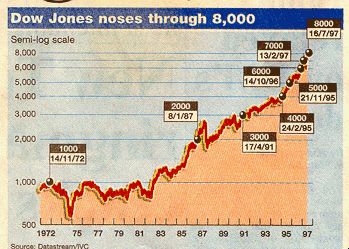

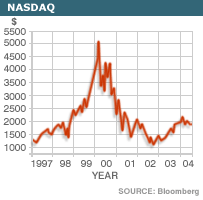
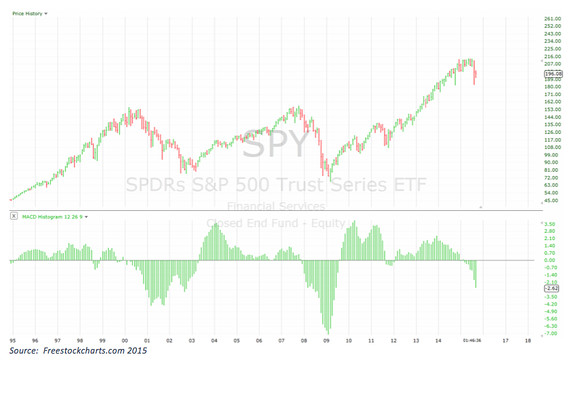
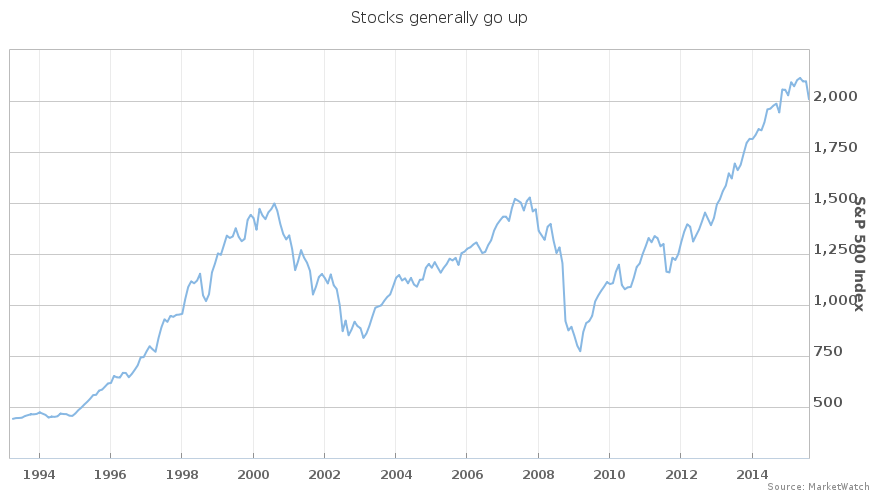
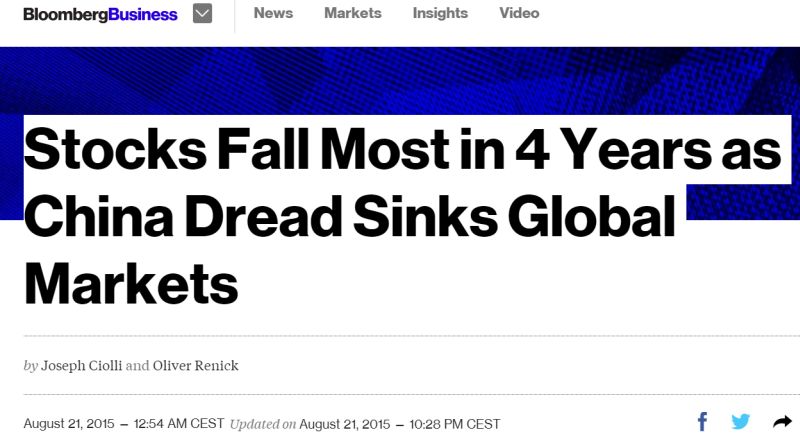
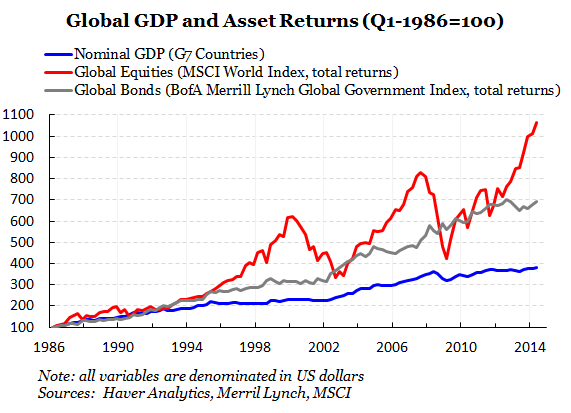
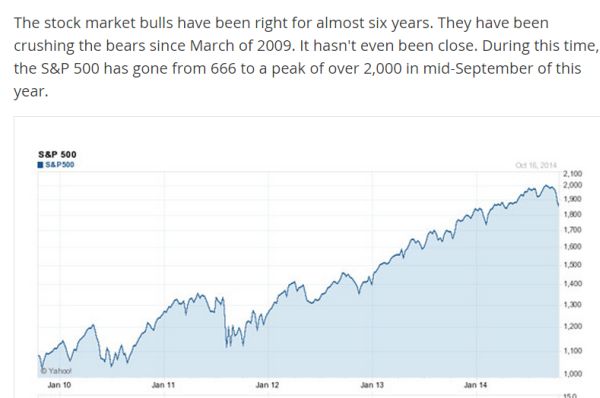

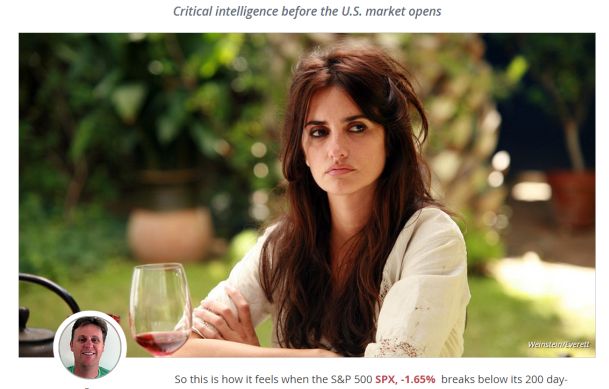

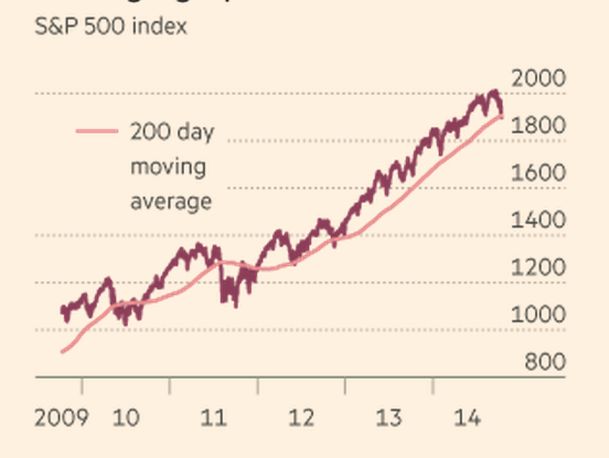

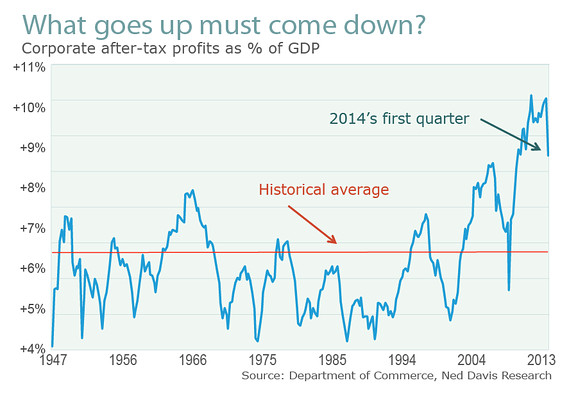
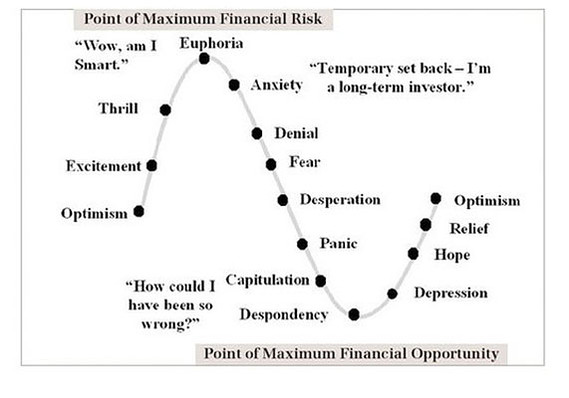
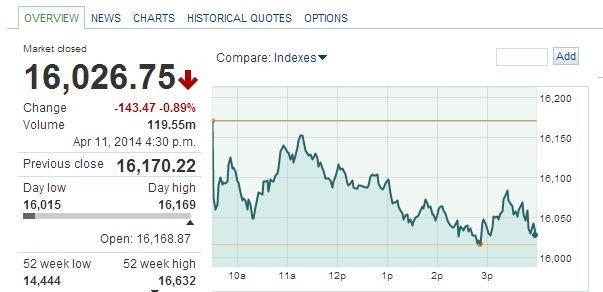
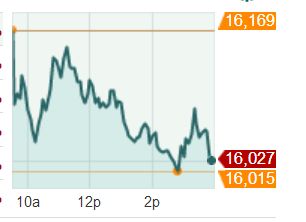
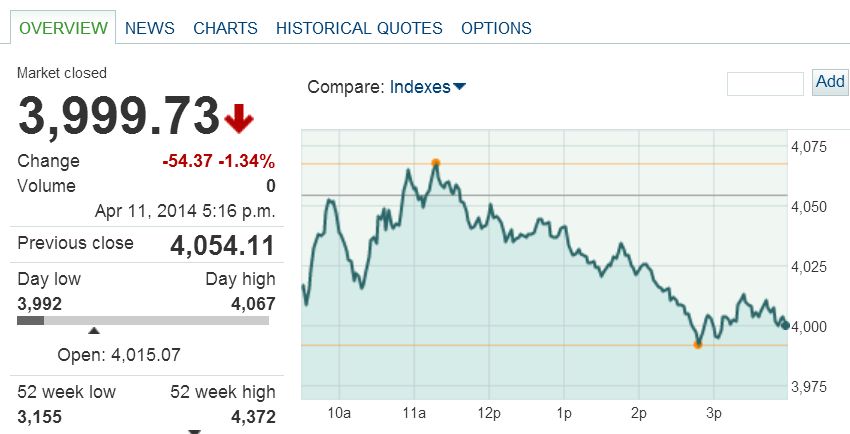
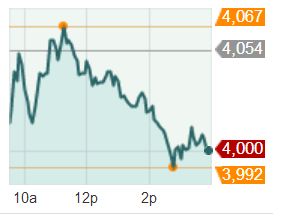
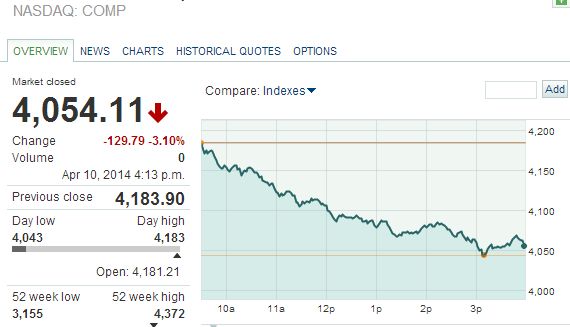
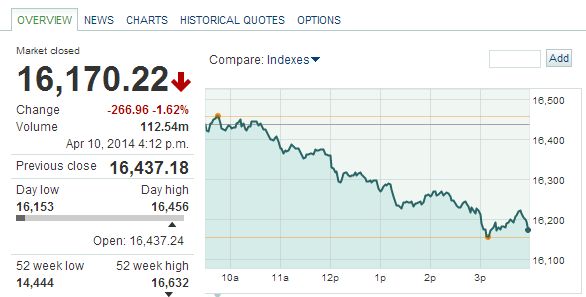
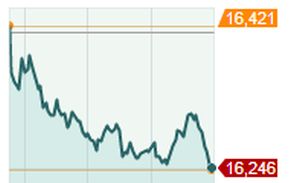
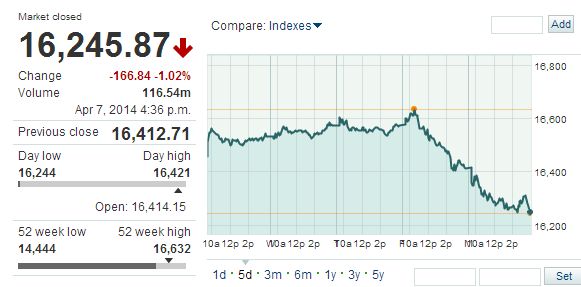
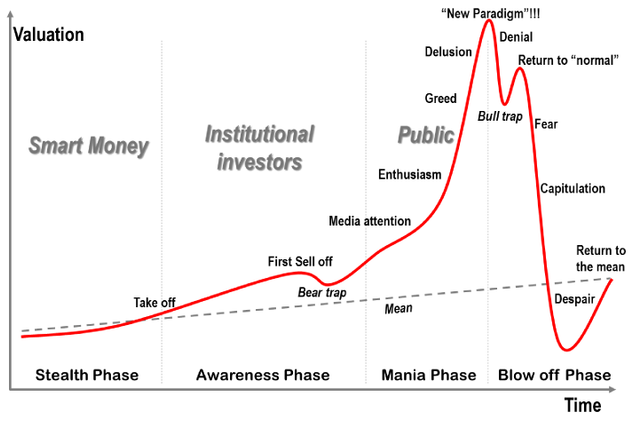
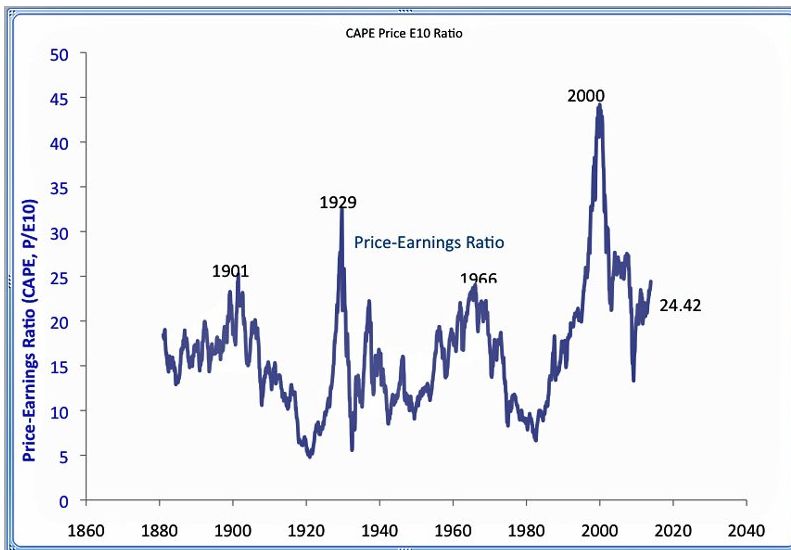
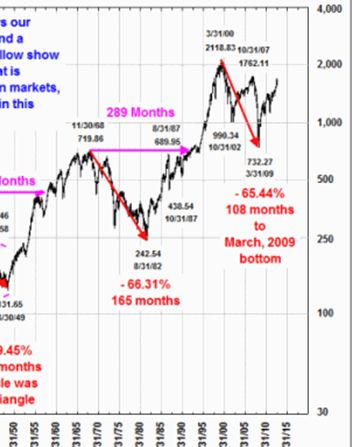

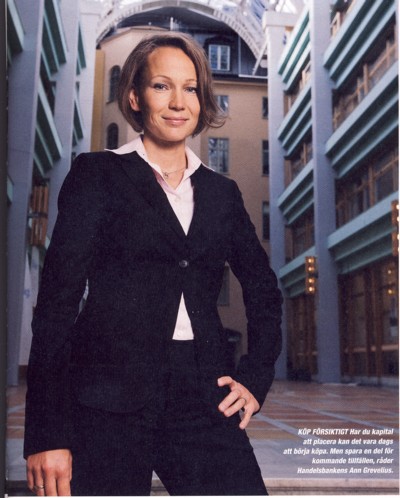
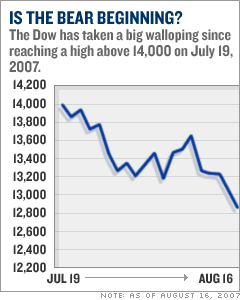

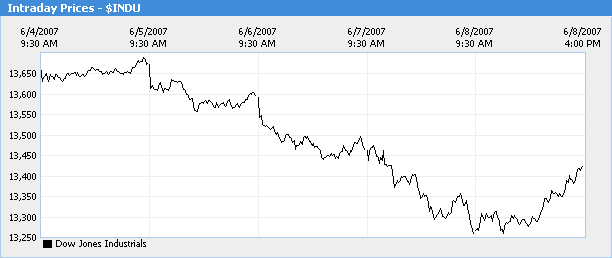

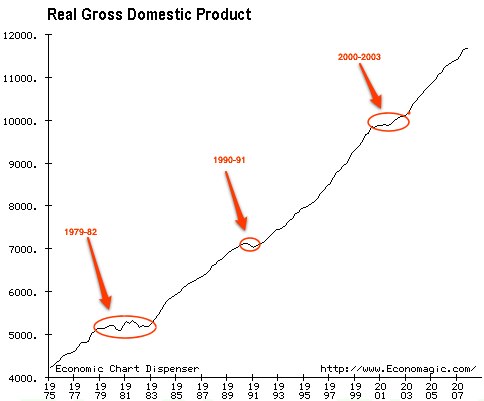
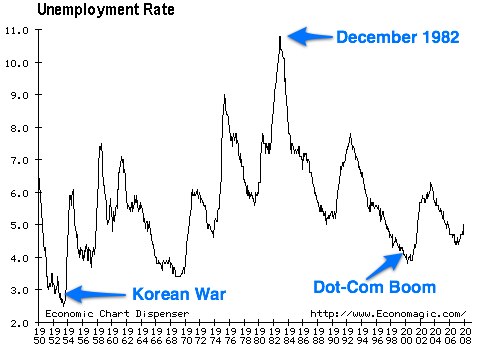

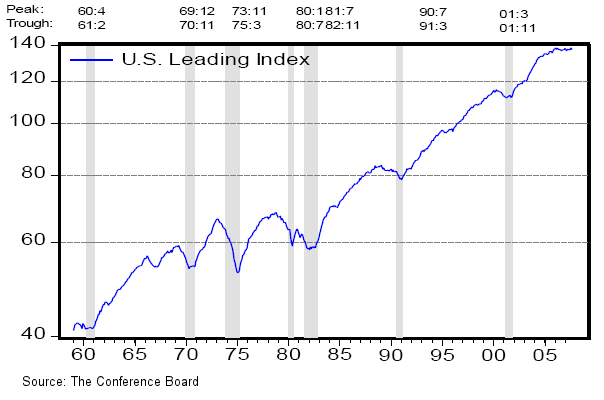
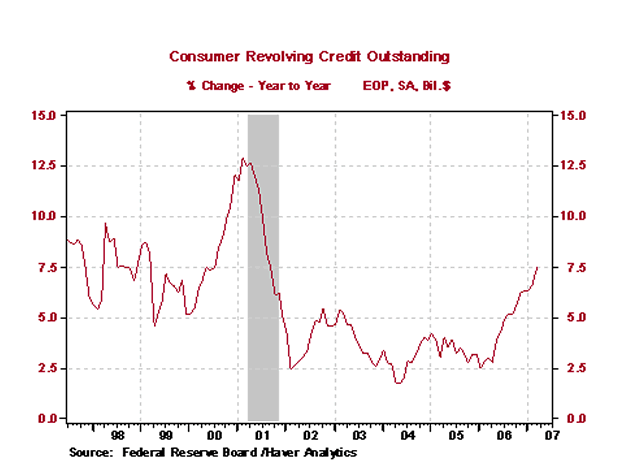
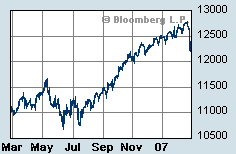
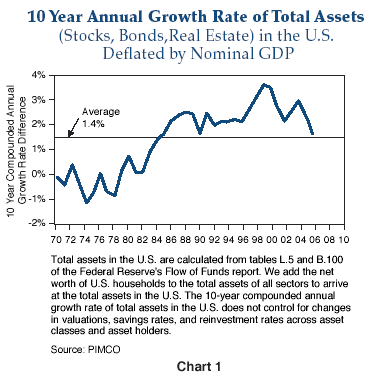
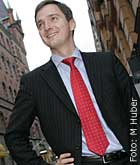
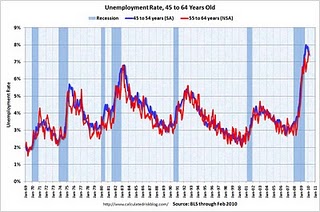
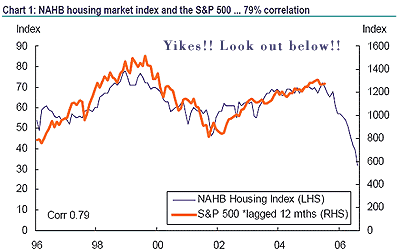
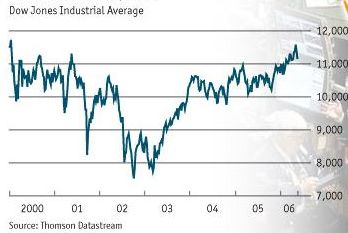
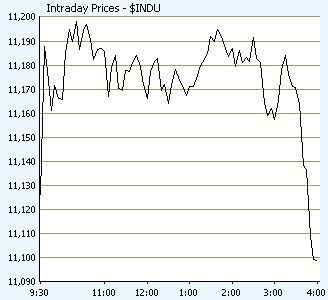
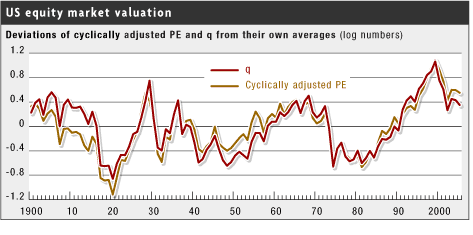
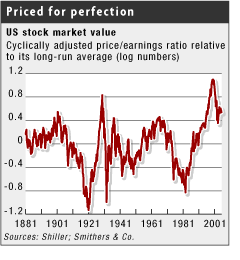
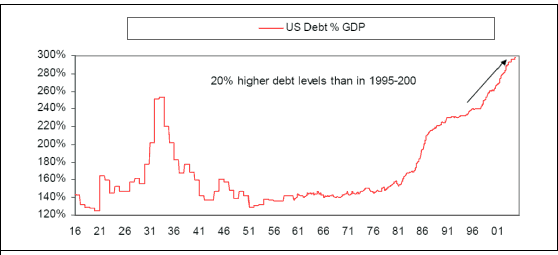
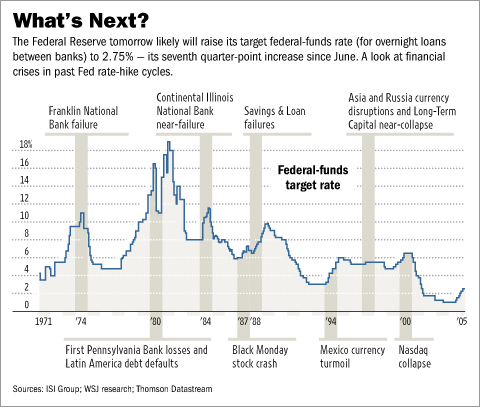

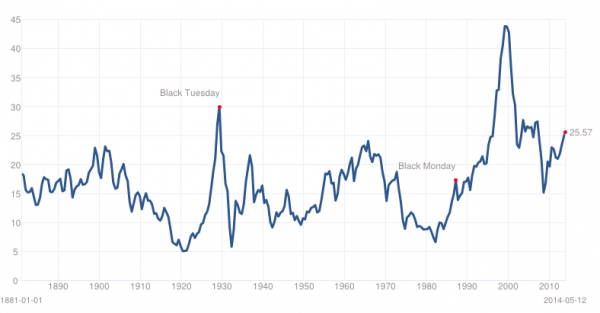
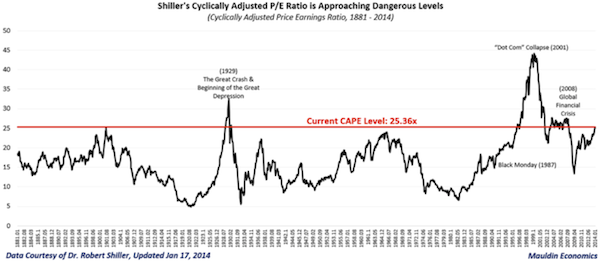
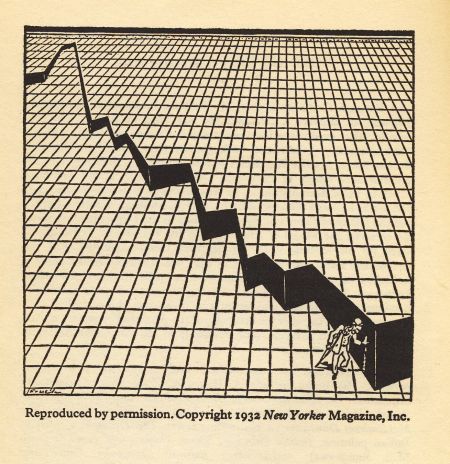
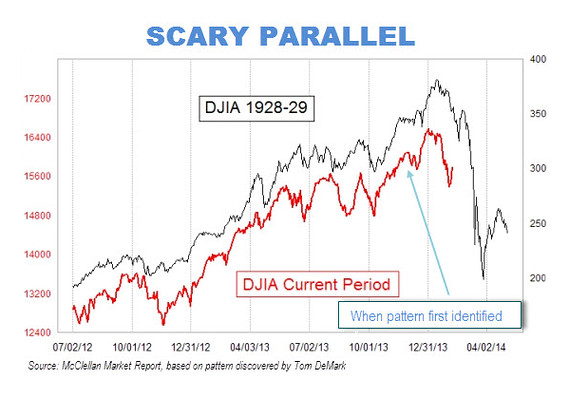
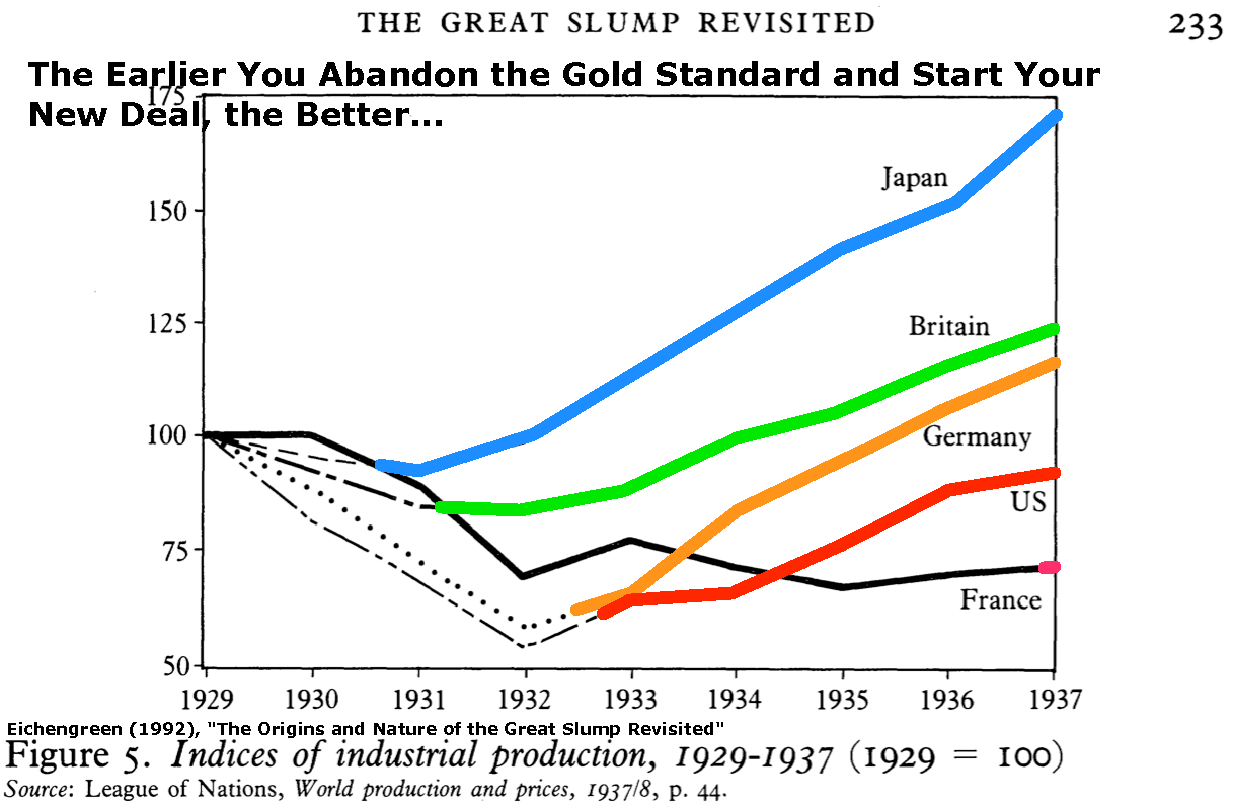
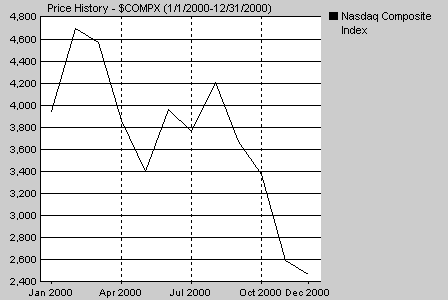
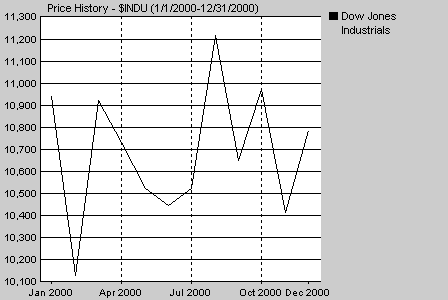

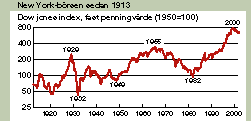 -
-
